Home Blog Presentation Ideas How to Start a Presentation: 5 Strong Opening Slides and 12 Tricks To Test

How to Start a Presentation: 5 Strong Opening Slides and 12 Tricks To Test

Knowing how to start a presentation is crucial: if you fail to capture the audience’s attention right off the bat, your entire presentation will flop. Few listeners will stick with you to the end and retain what you have told.
That is mildly unpleasant when you are doing an in-house presentation in front of your colleagues. But it can become utterly embarrassing when you present in front of larger audiences (e.g., at a conference) or worse – delivering a sales presentation to prospective customers.
Here is how most of us begin a presentation: give an awkward greeting, thank everyone for coming, clear our throats, tap the mic, and humbly start to mumble about our subject. The problem with such an opening performance? It effectively kills and buries even the best messages.
Table of Contents
- The Classic Trick: Open a Presentation with an Introduction
- Open a Presentation with a Hook
- Begin with a Captivating Visual
- Ask a “What if…” Question
- Use the Word “Imagine”
- Leverage The Curiosity Gap
- The Power of Silence
- Facts as Weapons of Communication
- Fact vs. Myths
- The Power of Music
- Physical Activity
- Acknowledging a Person
How to Start a PowerPoint Presentation The Right Way
Let’s say you have all of your presentation slides polished up (in case you don’t, check our quick & effective PowerPoint presentation design tips first). Your presentation has a clear storyline and agenda. Main ideas are broken into bite-sized statements for your slides and complemented with visuals. All you have left is to figure out how you begin presenting.
The best way is to appeal to and invoke certain emotions in your audience – curiosity, surprise, fear, or good old amusements. Also, it is recommended to present your main idea in the first 30 seconds of the presentation. And here’s how it’s done.
1. The Classic Trick: Open a Presentation with an Introduction

When you don’t feel like reinventing the wheel, use a classic trick from the book – start with a quick personal introduction. Don’t want to sound as boring as everyone else with your humble “Hi, I’m John, the head of the Customer Support Department”? Great, because we are all about promoting effective presentation techniques (hint: using a dull welcome slide isn’t one of them).
Here’s how to introduce yourself in a presentation the right way.
a. Use a link-back memory formula
To ace a presentation, you need to connect with your audience. The best way to do so is by throwing in a simple story showing who you are, where you came from, and why your words matter.
The human brain loves a good story, and we are more inclined to listen and retain the information told this way. Besides, when we can relate to the narrator (or story hero), we create an emotional bond with them, and, again – become more receptive, and less skeptical of the information that is about to be delivered.
So here are your presentation introduction lines:
My name is Joanne, and I’m the Head of Marketing at company XYZ. Five years ago I was working as a waitress, earning $10/hour and collecting rejection letters from editors. About ten letters every week landed to my mailbox. You see, I love words, but decent publisher thought mine were good enough. Except for the restaurant owner. I was very good at up-selling and recommending dishes to the customers. My boss even bumped my salary to $15/hour as a token of appreciation for my skill. And this made me realize: I should ditch creative writing and focus on copywriting instead. After loads of trial and error back in the day, I learned how to write persuasive copy. I was no longer getting rejection letters. I was receiving thousands of emails saying that someone just bought another product from our company. My sales copy pages generated over $1,500,000 in revenue over last year. And I want to teach you how to do the same”
b. Test the Stereotype Formula
This one’s simple and effective as well. Introduce yourself by sharing an obvious stereotype about your profession. This cue will help you connect with your audience better, make them chuckle a bit, and set a lighter mood for the speech to follow.
Here’s how you can frame your intro:
“My name is ___, and I am a lead software engineer at our platform [Your Job Title]. And yes, I’m that nerdy type who never liked presenting in front of large groups of people. I would rather stay in my den and write code all day long. [Stereotype]. But hey, since I have mustered enough courage…let’s talk today about the new product features my team is about to release….”
After sharing a quick, self-deprecating line, you transition back to your topic, reinforcing the audience’s attention . Both of these formulas help you set the “mood” for your further presentation, so try using them interchangeably on different occasions.
2. Open a Presentation with a Hook
Wow your audience straight off the bat by sharing something they would not expect to hear. This may be one of the popular first-time presentation tips but don’t rush to discard it.
Because here’s the thing: psychologically , we are more inclined to pay attention whenever presented with an unexpected cue. When we know what will happen next – someone flips the switch, and lights turn on – we don’t really pay much attention to that action.
But when we don’t know what to expect next – e.g., someone flips the switch and a bell starts ringing – we are likely to pay more attention to what will happen next. The same goes for words: everyone loves stories with unpredictable twists. So begin your presentation with a PowerPoint introduction slide or a line that no one expects to hear.
Here are a few hook examples you can swipe:
a. Open with a provocative statement
It creates an instant jolt and makes the audience intrigued to hear what you are about to say next – pedal back, continue with the provocation, or do something else that they will not expect.

“You will live seven and a half minutes longer than you would have otherwise, just because you watched this talk.”
That’s how Jane McGonigal opens one of her TED talks . Shocking and intriguing, right?
b. Ask a rhetorical, thought-provoking question
Seasoned presenters know that one good practice is to ask a question at the beginning of a presentation to increase audience engagement. Rhetorical questions have a great persuasive effect – instead of answering aloud, your audience will silently start musing over it during your presentation. They aroused curiosity and motivated the audience to remain attentive, as they did want to learn your answer to this question.
To reinforce your message throughout the presentation, you can further use the Rhetorical Triangle Concept – a rhetorical approach to building a persuasive argument based on Aristotle’s teachings.
c. Use a bold number, factor stat
A clean slide with some mind-boggling stat makes an undeniably strong impact. Here are a few opening statement examples you can use along with your slide:
- Shock them: “We are effectively wasting over $1.2 billion per year on producing clothes no one will ever purchase”
- Create empathy: “Are you among the 20% of people with undiagnosed ADHD?”
- Call to arms: “58% of marketing budgets are wasted due to poor landing page design. Let’s change this!”
- Spark curiosity: “Did you know that companies who invested in speech recognition have seen a 13% increase in ROI within just 3 years?”
3. Begin with a Captivating Visual
Compelling visuals are the ABC of presentation design – use them strategically to make an interesting statement at the beginning and throughout your presentation. Your first presentation slide can be text-free. Communicate your idea with a visual instead – a photo, a chart, an infographic, or another graphics asset.
Visuals are a powerful medium for communication as our brain needs just 13 milliseconds to render what our eyes see, whereas text comprehension requires more cognitive effort.
Relevant images add additional aesthetic appeal to your deck, bolster the audience’s imagination, and make your key message instantly more memorable.
Here’s an intro slide example. You want to make a strong presentation introduction to global pollution. Use the following slide to reinforce the statement you share:

“Seven of nine snow samples taken on land in Antarctica found chemicals known as PFAs, which are used in industrial products and can harm wildlife”
Source: Reuters
4. Ask a “What if…” Question
The “what if” combo carries massive power. It gives your audience a sense of what will happen if they choose to listen to you and follow your advice. Here are a few presentations with starting sentences + slides to illustrate this option:

Alternatively, you can work your way to this point using different questions:
- Ask the audience about their “Why.” Why are they attending this event, or why do they find this topic relevant?
- Use “How” as your question hook if you plan to introduce a potential solution to a problem.
- If your presentation has a persuasion factor associated, use “When” as a question to trigger the interest of the audience on, for example, when they are planning to take action regarding the topic being presented (if we talk about an inspirational presentation).

5. Use the Word “Imagine”
“Imagine,” “Picture This,” and “Think of” are better word choices for when you plan to begin your presentation with a quick story.
Our brain loves interacting with stories. In fact, a captivating story makes us more collaborative. Scientists have discovered that stories with tension during narrative make us:
- Pay more attention,
- Share emotions with the characters and even mimic the feelings and behaviors of those characters afterward.
That’s why good action movies often feel empowering and make us want to change the world too. By incorporating a good, persuasive story with a relatable hero, you can also create that “bond” with your audience and make them more perceptive to your pitch – donate money to support the cause; explore the solution you are offering, and so on.
6. Leverage The Curiosity Gap
The curiosity gap is another psychological trick frequently used by marketers to solicit more clicks, reads, and other interactions from the audience. In essence, it’s the trick you see behind all those clickbait, Buzzfeed-style headlines:

Not everyone is a fan of such titles. But the truth is – they do the trick and instantly capture attention. The curiosity gap sparks our desire to dig deeper into the matter. We are explicitly told that we don’t know something important, and now we crave to change that. Curiosity is an incredibly strong driving force for action – think Eve, think Pandora’s Box.
So consider incorporating these attention grabbers for your presentation speech to shock the audience. You can open with one, or strategically weave them in the middle of your presentation when you feel like your audience is getting tired and may lose their focus.
Here’s how you can use the curiosity gap during your presentation:
- Start telling a story, pause in the middle, and delay the conclusion of it.
- Withhold the key information (e.g., the best solution to the problem you have described) for a bit – but not for too long, as this can reduce the initial curiosity.
- Introduce an idea or concept and link it with an unexpected outcome or subject – this is the best opening for a presentation tip.
7. The Power of Silence
What would you do if you attended a presentation in which the speaker remains silent for 30 seconds after the presentation starts? Just the presenter, standing in front of the audience, in absolute silence.
Most likely, your mind starts racing with thoughts, expecting something of vital importance to be disclosed. The surprise factor with this effect is for us to acknowledge things we tend to take for granted.
It is a powerful resource to introduce a product or to start an inspirational presentation if followed by a fact.
8. Facts as Weapons of Communication
In some niches, using statistics as the icebreaker is the best method to retain the audience’s interest.
Say your presentation is about climate change. Why not introduce a not-so-common fact, such as the amount of wool that can be produced out of oceanic plastic waste per month? And since you have to base your introduction on facts, research manufacturers that work with Oceanic fabrics from recycled plastic bottles .
Using facts helps to build a better narrative, and also gives leverage to your presentation as you are speaking not just from emotional elements but from actually recorded data backed up by research.
9. Fact vs. Myths
Related to our previous point, we make quite an interesting speech if we contrast a fact vs. a myth in a non-conventional way: using a myth to question a well-accepted fact, then introducing a new point of view or theory, backed on sufficient research, that proves the fact wrong. This technique, when used in niches related to academia, can significantly increase the audience’s interest, and it will highlight your presentation as innovative.
Another approach is to debunk a myth using a fact. This contrast immediately piques interest because it promises to overturn commonly held beliefs, and people naturally find it compelling when their existing knowledge is put to the test. An example of this is when a nutritionist wishes to speak about how to lose weight via diet, and debunks the myth that all carbohydrates are “bad”.
10. The Power of Music
Think about a presentation that discusses the benefits of using alternative therapies to treat anxiety, reducing the need to rely on benzodiazepines. Rather than going technical and introducing facts, the presenter can play a soothing tune and invite the audience to follow an exercise that teaches how to practice breathing meditation . Perhaps, in less than 2 minutes, the presenter can accomplish the goal of exposing the advantages of this practice with a live case study fueled by the proper ambiance (due to the music played in the beginning).
11. Physical Activity
Let’s picture ourselves in an in-company presentation about workspace wellness. For this company, the sedentary lifestyle their employees engage in is a worrying factor, so they brought a personal trainer to coach the employees on a basic flexibility routine they can practice in 5 minutes after a couple of hours of desk time.
“Before we dive in, let’s all stand up for a moment.” This simple instruction breaks the ice and creates a moment of shared experience among the attendees. You could then lead them through a brief stretching routine, saying something like, “Let’s reach up high, and stretch out those muscles that get so tight sitting at our desks all day.” With this action, you’re not just talking about workplace wellness, you’re giving them a direct, personal experience of it.
This approach has several advantages. Firstly, it infuses energy into the room and increases the oxygen flow to the brain, potentially boosting the audience’s concentration and retention. Secondly, it sets a precedent that your presentation is not going to be a standard lecture, but rather an interactive experience. This can raise the level of anticipation for what’s to come, and make the presentation a topic for future conversation between coworkers.
12. Acknowledging a Person
How many times have you heard the phrase: “Before we begin, I’d like to dedicate a few words to …” . The speaker could be referring to a mentor figure, a prominent person in the local community, or a group of people who performed charity work or obtained a prize for their hard work and dedication. Whichever is the reason behind this, acknowledgment is a powerful force to use as a method of starting a presentation. It builds a connection with the audience, it speaks about your values and who you admire, and it can transmit what the conversation is going to be about based on who the acknowledged person is.
Closing Thoughts
Now you know how to start your presentation – you have the opening lines, you have the slides to use, and you can browse even more attractive PowerPoint presentation slides and templates on our website. Also, we recommend you visit our article on how to make a PowerPoint Presentation to get familiarized with the best tactics for professional presentation design and delivery, or if you need to save time preparing your presentation, we highly recommend you check our AI Presentation Maker to pair these concepts with cutting-edge slide design powered by AI.

Like this article? Please share
Curiosity Gap, Opening, Public Speaking, Rhetorical Triangle, Speech, What If Filed under Presentation Ideas
Related Articles

Filed under Presentation Ideas • September 5th, 2023
Persuasive Speech: Actionable Writing Tips and Sample Topics
Business professionals, students, and others can all benefit from learning the principles of persuasive speech. After all, the art of persuasion can be applied to any area of life where getting people to agree with you is important. In this article, we get into the basics of persuasive speaking, persuasive speech writing, and lastly persuasive speech topics.

Filed under Presentation Ideas • August 5th, 2023
How Parkinson’s Law Can Make Your Presentations Better
Sometimes even the best presenters procrastinate their work until the very last moment. And then, suddenly, they get a flow of ideas to complete their slide deck and present like they have been preparing for it for ages. However, doing so has drawbacks, as even professional presenters cannot always elude the side effects of […]

Filed under Presentation Ideas • April 29th, 2022
How to Become Great in Public Speaking: Presenting Best Practices
Public Speaking takes a lot of practice and grit, however, it also requires a method that can help you through your presentation. Explore more about this subject in this blog post.
5 Responses to “How to Start a Presentation: 5 Strong Opening Slides and 12 Tricks To Test”
I love to follow the ideas, it’s good for a freshman
Leave a Reply
How to Start a Presentation [+ Examples]
Published: September 13, 2023
The first step in mastering the art of delivering powerful presentations is understanding how to start a presentation properly.

In this post, you'll discover strategies for crafting a solid presentation opening, designing an impactful opening slide, and delivering a memorable presentation.
![presentation opening page → Free Download: 10 PowerPoint Presentation Templates [Access Now]](https://no-cache.hubspot.com/cta/default/53/2d0b5298-2daa-4812-b2d4-fa65cd354a8e.png)
Table of Contents
Why Your Presentation Opening Matters
How to start a presentation, opening slide examples, best practices for starting a presentation.
The opening of your presentation sets the tone for your entire session.
Within the first few minutes, most of your audience will decide whether they find your expertise, experience, and topic compelling enough to warrant their attention.
Think of it this way: Your opening is a preview of your presentation like a trailer is a preview of a movie. If the five-minute trailer isn’t engaging or impactful, why should the audience bother sitting through the half-hour movie?
Your opening shapes the expectations of your audience and entices them to stay engaged throughout the session.
And although you’ll still need to work to maintain their attention, getting it right from the start will spare you the challenge of re-engaging a disinterested audience right from the beginning of your presentation.
This opening statement is powerful because rather than lead with his “credentials” or “accolades,” as the audience most likely expects, he defies that expectation.
He creates a sense of intrigue that instantly piques the audience's curiosity and compels them to pay closer attention.
Infuse humor.
In Tom Thum's TedTalk titled Beatbox Brilliance , he sets a lighthearted tone by stepping on stage wearing oversized sunglasses and declaring, “My name is Tom, and I've come here today to come clean about what I do for money.”
As you might expect, this humorous approach not only elicits laughter but also surprises the audience, who are intrigued and pleasantly surprised at the tone he sets for the presentation.
Ask a question.
Graham Shaw's presentation titled “ Why people believe they can’t draw - and how to prove they can ” begins with, “Hi, I've got a question for you - how many people here would say they can draw?”
Seeing as this is a relatively lighthearted question that’s simple to answer, the audience responds immediately.
Now, what makes this a powerful opening technique is that Graham then goes on to say:
“When people say they can’t draw, I think it's more to do with beliefs rather than talent and ability. When you say you can’t draw, that’s just an illusion, and today I’d like to prove that to you.”
By immediately challenging a widely held belief among the audience and promising to debunk it during the presentation, he employs a powerful technique that keeps the audience fully engaged.
This approach makes the audience feel “invested” in the outcome of the presentation and curious as to whether he can back up his claim.
2. Tell your audience why they should be listening to you.
Getting your audience’s attention is just one part of the equation. Once you have it, you must also explain why they should “keep” listening to you. Here are some ways to do this:
Highlight relevant personal experience.
In Phil Waknell’s opening section, he talks about how he’s spent the last ten years helping conference speakers, business leaders, and entrepreneurs prepare and deliver powerful presentations .
This immediately signals to the audience that he’s someone worth listening to and positions him as a credible source of insights based on the wealth of experience he has gathered.
Highlight your expertise.
During the opening section of Dr. Lara Boyd’s presentation titled “ After watching this, your brain will not be the same ,” she says, “I’m Dr. Lara Boyd, and I’m a brain researcher here at the University of British Columbia.”
Sharing her credentials as a brain researcher is crucial to gaining her audience's trust — especially considering the technicality of her topic.
But even while creating presentations outside fields like brain research, sharing qualifications and credentials in your opening section can be a powerful technique.
This helps you position yourself as a credible authority and reinforcing your audience's confidence in your ability to deliver valuable information.
Tell your audience what’s in it for them.
In Mel Robbins’ opening section for her presentation titled “ How to stop screwing yourself over ,” she ends her introduction by saying:
“I’m here for you. I’m going to tell you everything I know in less than 18 minutes about how to get what you want.”
Although she started the section by highlighting her experiences and expertise, she went further by explicitly stating the benefits her audience can expect from her presentation.
Doing this is a great way to create a compelling reason for your audience to invest their time and attention and emphasize the value of the presentation you’re about to deliver.
3. Introduce your topic.
If your topic is relatively simple to grasp or your audience is particularly knowledgeable, introducing your topic can be as easy as “Today, I’m going to be talking to you about how we’ve built a six-figure software company in 6 months.”
However, if your topic is more complex or unfamiliar to the audience, you must do a bit more heavy lifting in your opening section.
For example, Sam Bern’s “ My philosophy for a happy life ” presentation discusses how he lives a happy life despite having Progeria disease.
However, because this condition might be unfamiliar to some audience members, he takes some time in his opening section to talk about the illness before delving into the meat of his presentation.
Similarly, if you’re presenting on a complex topic or to an audience that isn’t knowledgeable, it’s essential to consider this when crafting your opening section.
4. Leverage storytelling.
Stories can create immersive experiences that captivate the audience and convey a core message.
For example, in the opening section of Sam Bern's presentation, he tells a story about his struggles while trying to achieve his goal of becoming a drummer in his school marching band, despite living with Progeria disease.
This sets the tone for his entire presentation by conveying an inspiring message of fighting against and succeeding despite the odds.
Another great example is the opening section of Josh Kaufman’s presentation, titled “ The First 20 Hours — how to learn anything ,” where he tells a story about his experience as a time-strapped first-time parent.
This story enhances the presentation as Josh eventually shares that this experience triggered his interest in studying how to become an efficient learner.
Finally, Amy Morins’s presentation “ The Secret of Becoming Mentally Strong ” is another excellent example of leveraging storytelling.
Amy starts her presentation with a thought-provoking story about observing a Facebook friend's seemingly perfect life.
She then highlights how such comparisons can lead to negative thought patterns and emphasizes the importance of cultivating mental resilience.
This relatable story not only resonates with her audience but also sets the stage for her message on building inner strength.
All these presentations are great examples that highlight how incorporating story-telling in your openings can be a powerful tool for creating memorable and impactful presentations.
Your presentation slides play a crucial role in determining the impact and effectiveness of your presentation.
In this section, you’ll find examples of 8 powerful opening slides across various use cases that not just support but enhance the presentation openings:
1. “ Blackboard is Getting an Upgrade ”
Although these are very different methods of injecting humor at the start of a presentation, they show how infusing humor can be a powerful tool for adding a touch of personality and creating a more enjoyable presentation for the audience.
4. Keep it short and sweet.
While it's important not to rush through the start of your presentation, keeping your opening concise is equally important. But remember, concise does not mean sacrificing substance; it simply means delivering information efficiently.
Essentially, you want an opening section that allows you to create a solid initial impression without losing the audience's interest.
So, how long should this opening secretion be?
Most successful presentation openings are under three minutes, and many are shorter, often clocking in at under one minute.
5. Embrace authenticity.
Contrary to popular belief, there isn't a specific personality that makes someone a better presenter. In fact, the most impactful presentations have been delivered by individuals with diverse characters.
Take, for instance, the contrasting styles of Tom Thum’s irreverent humor and animated mannerisms and Sam Bern, who adopts a relaxed and conversational approach. Despite their differences, both speakers have garnered millions of views for their talks.
So, rather than emulating or mimicking their presentations, the key takeaway is to embrace authenticity.
Allow your personality to shine through, lean on your strengths, and be human in your delivery.
Mastering the Art of Captivating Presentations
Starting a presentation is a skill that is as much an art as it is a science. Thankfully, it is also a skill that can be learned and honed.
By implementing the strategies in this guide and refining them through experience, you’ll become a master at delivering impactful presentations that command attention and leave a lasting impression.
All from the moment you step onto the stage.
![presentation opening page Blog - Beautiful PowerPoint Presentation Template [List-Based]](https://no-cache.hubspot.com/cta/default/53/013286c0-2cc2-45f8-a6db-c71dad0835b8.png)
Don't forget to share this post!
Related articles.
![presentation opening page How to Create the Best PowerPoint Presentations [Examples & Templates]](https://knowledge.hubspot.com/hubfs/powerpoint.webp)
How to Create the Best PowerPoint Presentations [Examples & Templates]
![presentation opening page 17 PowerPoint Presentation Tips From Pro Presenters [+ Templates]](https://www.hubspot.com/hubfs/powerpoint-design-tricks_7.webp)
17 PowerPoint Presentation Tips From Pro Presenters [+ Templates]
![presentation opening page How to Write an Ecommerce Business Plan [Examples & Template]](https://www.hubspot.com/hubfs/ecommerce%20business%20plan.png)
How to Write an Ecommerce Business Plan [Examples & Template]
![presentation opening page How to Create an Infographic in Under an Hour — the 2024 Guide [+ Free Templates]](https://www.hubspot.com/hubfs/Make-infographic-hero%20%28598%20%C3%97%20398%20px%29.jpg)
How to Create an Infographic in Under an Hour — the 2024 Guide [+ Free Templates]
![presentation opening page 20 Great Examples of PowerPoint Presentation Design [+ Templates]](https://www.hubspot.com/hubfs/powerpoint-presentation-examples.webp)
20 Great Examples of PowerPoint Presentation Design [+ Templates]

Get Buyers to Do What You Want: The Power of Temptation Bundling in Sales

How to Create an Engaging 5-Minute Presentation

120 Presentation Topic Ideas Help You Hook Your Audience

The Presenter's Guide to Nailing Your Next PowerPoint
![presentation opening page How to Create a Stunning Presentation Cover Page [+ Examples]](https://www.hubspot.com/hubfs/presentation-cover-page_3.webp)
How to Create a Stunning Presentation Cover Page [+ Examples]
Download ten free PowerPoint templates for a better presentation.
Marketing software that helps you drive revenue, save time and resources, and measure and optimize your investments — all on one easy-to-use platform
10 Strong Opening Slides to Start A Presentation (With Examples!)
Hrideep barot.
- Presentation

It is weird how now that we all live on our laptops and depend on them for entertainment and livelihood, things that shock us aren’t that many. This is a big itchy spot when it comes to engaging audiences and having a killer opening.
Lets focus on getting that perfect first slide in your presentation to help you kick off on the right foot.
How to open presentations
Opening presentations is an extremely daunting task. The worry of putting your best foot forward but at the same time not coming across as arrogant and the whole issue with fanning your armpits just before you step on the stage.
Yeah, I know. I relate, I think most of us do. We have braved those sweat patches and we have conquered.
It is time to up our opening game and while I will be getting to the ways we can do that, you can also check out this video for a quick idea.
What should be the first slide of a presentation?
Your first slide, needs to be impactful, with minimal content. An extremely difficult balance to maintain, but! Not impossible.
Your first slide, traditionally, is your name, the topic you are going to speak on and maybe on or two other details with MAYBE an image or some other graphics.
Gone are the days when we open speeches or presentations the traditional way, nothing wrong with it, but doing something “not normal” often helps us get people’s attention and that is the easiest way to get your points across and have them received positively.
Let’s check out a few ways you can open slides for a strong opening!
Strong Opening Slide Ideas
We’ve got our thinking cap on, let’s get cracking!
There are so many ways we can have a strong opening, even when you think presentations limit you.
Think of it this way, because people know you’re going to presenting something, they are going to give you full control of a projector. A big ass screen for all to see. If that isn’t filled with potential, I don’t know what is.
Well, with great power comes great responsibility, so let’s check out a few ways we can have killer opening slides , while of course being responsible… ish.
Idea 1: Introduction
There is no better way to get the audience to remember you than putting a giant photo of yourself on the screen and going, this is me, – an extremely edited version of me, but still, me. 🙂
Buddy. No. That was an attempt at being the funny – clever person. Clearly it didn’t work.
Don’t get me wrong, talking about yourself is good, important even to some extent, but that is it you see, it isn’t the fact that you’re talking about yourself that is the problem but what are you talking about that is.
The usual go to is to list out your biodata for the audience to read on the screen, while you speak the exact same thing off of the presentation. This is where we go wrong, no one wants to know about all your seven Ph.Ds. Bruce. (get the reference please)
Be proud of your qualifications, you earned them, but know when and where which qualification might be useful.
For example, you are a certified chartered accountant and have written plays that were on Broadway. In a screenwriting workshop / panel / seminar, as great as getting your chartered accountancy is, your experience as a writer holds way more value and is what will help you get the audience’s attention.
Let’s create an opening slide with the above example.

I used these polaroid photo ideas because for a play on Broadway, we’d love to see pictures! You can use tasteful pictures and even stock photos to help your audience get the right idea of your background.
Of course, I used these random paper elements to give it a more “writer” feel and also because this is my aesthetic, but you need to remember that this is your presentation and no cookie cutter mould will work. Even templates are meant to be edited to suit your needs.
Idea 2: Quiz
Is this to make your audience feel dumb? As much as that chaotic evil side of you may want to. Never do that. Respect their experiences as much as you would want them to respect yours.
Starting off with a quiz is a great way to warm up the crowd and get them involved in your presentation. Give them something to think about and it honestly doesn’t matter if they get it right or wrong, what matters is that they are trying to answer and interact!

Quizzes are a great ice breaker and also a great tool to get the audience going, you can also try to have a one off question or a series of questions.
Lets take the slide as an example, it could be for a presentation on a film industry and the question could be, guess the film from these three pictures, or they could be three different questions.
Remember as an opening slide, it should neither be text nor image heavy, just the right amount.
You could even create a game out of those quizzes and have checked off your list and even use these as a starting off point and come back to the topics (which could be your answers) while using this quiz as a reference point. The possibilities are endless!
Idea 3: Stimulation of Imagination
It always great to know what your audience is thinking, or in the least get them thinking!
You see, once they start thinking, they begin forming an opinion about the topic, which gets them invested and since you are the person addressing the topic, they will begin comparing their point of view / opinion with what they are saying.
There will always be different perspectives, what matters here is that they are invested enough to pay attention to you.
A really easy way to help them get started with forming an opinion is, asking them to take a minute to think about something.
For example: Think about a dancing monkey.
Can some of you describe the monkey you imagined, in the comment section? Was it wearing tap shoes and a top hat? Was it wearing a marching band uniform? Did it have your best friend’s face on it? Mine did!
Each of you had your own Dancing Monkey, and if thinking about it for a few seconds made it your own, imagine the attachment you can build by just spending a few minutes or even the duration of a presentation on it!

For example, you’re taking a presentation on perspectives or psychology. You can display this image and ask them what they think of it. Some may think about freedom, some loneliness and some people’s thoughts may be so profound that we could’ve never thought of it!
Idea 4: Video
This could work just as marvellous as sharing an image and opening a short discussion on its interpretations. You could even start with a video and use it as a segue into your presentation.
For example this video could be used as a great example for a marketing strategy by the brand and could be a great way to get the audience interested given the emotional quotient and relatable sibling content.
Idea 5: Image
Using an image might not necessarily mean that you can only invite the audience to imagine and think on their own. You can use an image to start your presentation and help get your point across.

You see that how the image is the hero of the slide? There is text, definitely, but much smaller, it looks as a complementary to the image instead of the other way around.
In this slide for example, assume poverty is the topic, a very telling image of poverty could help get the conversation started and make the audience more receptive of the topic.
An image in a way helps them “put a face” to the issue and that makes is easier for you to hold their attention and keep it.
Idea 6: Quote
It is well known and understood how impactful the right quote at the right time can be.
Lets focus on some things that people can often get wrong when using quotes.
Firstly, using long quotes, this is a no no when it comes to presentations because, then the audience will be in a rush to read the whole quote and if your point is made before then, well, we won’t get the desired effect will we?
Another thing to keep in mind is to not have a quote just to use it as a quote, pretty cryptic, honestly it is simple, if you are giving a presentation on a person and using their quote or you are using a random quote, make sure to have something to add to it.
It could be something simple. For example when talking about a person’s life:
“When this person said this, they were on their death bed, but they had lead a vivacious life until then to say the least, let’s start at the very beginning…”

Notice how despite there being a background picture, a text box, a bird in the corner, and all that, the text is what is the hero of the slide. You could even add a picture of the person whom you are quoting if it seems relevant.
Remember to always give credit where it is due. It never hurts.
Idea 7: Story
Who doesn’t love a good story? Storytelling is a major part of public speaking where animation, emotion and gestures and tones play a huge role in delivering your point.
With presentations, you need to remember to not just select any story, you need find / write a story that connects well to your topic, for example, if we are speaking about technology, a story about Alice and her looking glass don’t really give you much room to work in a segue.
Storytelling is a whole other conversation, check out this article to learn more about public speaking and how storytelling factors into it: Public Speech Into Story: 3 Steps To Telling A Captivating Story

Here the pictures are the heroes, and while words are important, make them complementary to what you are speaking.
Starting off with a joke is also a very popular trick and I think why should it be this or that, why should it be a joke or a story, why can’t it be a humorous story?
Now don’t go fretting about because it doesn’t have to be fictional, it could even be an anecdote from your experiences or maybe one comic strip you found online.
When it comes to humorous speeches, it can be quite intimidating, but here is an article I think will help you wade through these waters: A Guide To Using Humour In Your Speech
Idea 8: Examples
This is a great way to introduce your topic to a crowd that doesn’t know your topic well. Create examples or situations to help your audience gain a smooth entry into your presentation.
It is like math, it is fun when you understand, and that means you care and give attention to it.
You can also use case studies or make your examples into stories to make it more subtle and seamless.

Here is where a traditional topic, sentence and image layout of an opening slide is best suggested. You can build this in any direction and still be able to relate to your slide.
Idea 9: Hard Facts
Facing facts instances that are always either pleasantly welcomed or hard to swallow. Hitting the audience with hard facts works really well, especially if what you are going to talk about is a difficult or sensitive issue.
An astonishing fact is bound to catch people’s attention and you can always use it to your advantage!
According to Femme International, over the last 20 years, the sanitary pad sector has bloomed and advanced; they have taken over the industry and 85% of menstruating women in the country use napkins. As society progressed and the taboo on periods were lifted from many regions, a new problem came up. One which is really harmful. We all know that the blood that comes out during our periods is harmful and full of bacteria. Now include this bacteria filled blood with a pad which takes 500-800 years to decompose. That’s right, 500-800 years of a used sanitary napkin breeding bacteria in rivers, drains, soil and the sea. A menstruating woman uses 15-20 pads for one cycle. Which sums up to 7,200-9,600 pads over an average period of 40 years. This is just for one woman. According to UNICEF roughly 26% of the world’s population are menstruating women. This means that 2.28 BILLION women are going to use over 9,000 pads EACH during their menstruating years.

Always try to not keep your introductory slides text heavy, but when starting with facts, try to highlight them, notice how the topic and the image are not very prominent but play their part in bringing together the entire slide while the first thing you read is the fact, underlined and set in the middle.
Try to play around with the layouts, figure out what suits your needs the best.
Idea 10: Controversial Statements
Who doesn’t love controversies?
Even if we know something is clickbait, it still catches our eye. Even if we know something to not be possible, when someone says it – with conviction, our ears do perk up.
It doesn’t have to be something extraordinary, just not ordinary enough that it catches people’s attention and in the end, you can always use it to connect your conclusion to your introduction.
Here is a great TEDTalk that would help you understand what I am talking about.
If you plan to use this method, it is easier to dive into your slides after you’ve made the statement and start elaborating on it instead of right at the beginning, it could start with your topic or some proof or where ever your presentation takes you!
Final Thoughts
A presentation carries as much personality as its maker, if you want the right impact you need to use the templates, infographics and tools available to you to the fullest, but remember, there is a thing called “too much” as well.
The easiest way to kill it with your presentations is to keep it neat, in your aesthetic and to the point. Make it engaging, make it colourful, make it black and white. It would work perfectly if it bounces off your personality on stage.
Enroll in our transformative 1:1 Coaching Program
Schedule a call with our expert communication coach to know if this program would be the right fit for you

High-Stakes Presentations: Strategies for Engaging and Influencing Senior Leaders
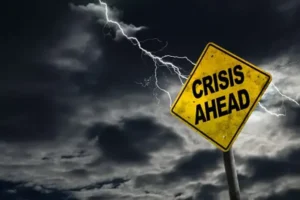
Crisis Leadership 101: Cultivating Empathy While Exercising Authority

Lost Voice? Here’s How to Recover Sore Throat and Speak Again

- [email protected]
- +91 98203 57888
Get our latest tips and tricks in your inbox always
Copyright © 2023 Frantically Speaking All rights reserved


How to Start a Presentation: 5 Templates and 90 Example Phrases
By Status.net Editorial Team on February 27, 2024 — 11 minutes to read
Starting a presentation effectively means capturing your audience’s attention from the very beginning. It’s important because it sets the tone for the entire presentation and establishes your credibility as a speaker.
Effective Openers: 5 Templates
Your presentation’s beginning sets the stage for everything that follows. So, it’s important to capture your audience’s attention right from the start. Here are some tried-and-true techniques to do just that.
1. Storytelling Approach
When you start with a story, you tap into the natural human love for narratives. It can be a personal experience, a historical event, or a fictional tale that ties back to your main point.
Example Introduction Template 1:
“Let me tell you a story about…”
Example : “Let me tell you a story about how a small idea in a garage blossomed into the global brand we know today.”
2. Quotation Strategy
Using a relevant quote can lend authority and thematic flavor to your presentation. Choose a quote that is provocative, enlightening, or humorous to resonate with your audience.
Example Introduction Template 2:
“As [Famous Person] once said…”
Example : “As Steve Jobs once said, ‘Innovation distinguishes between a leader and a follower.'”
3. Questioning Technique
Engage your audience directly by opening with a thoughtful question. This encourages them to think and become active participants.
Example Introduction Template 3:
“Have you ever wondered…”
Example : “Have you ever wondered what it would take to reduce your carbon footprint to zero?”
4. Statistical Hook
Kick off with a startling statistic that presents a fresh perspective or underscores the importance of your topic.
Example Introduction Template 4:
“Did you know that…”
Example : “Did you know that 90% of the world’s data was generated in the last two years alone?”
5. Anecdotal Method
Share a brief, relatable incident that highlights the human aspect of your topic. It paves the way for empathy and connection.
Example Introduction Template 5:
“I want to share a quick anecdote…”
Example : “I want to share a quick anecdote about a time I experienced the customer service that went above and beyond what anyone would expect.”
How to Start a Powerpoint Presentation: 45 Example Phrases
Starting a PowerPoint presentation effectively can captivate your audience and set the tone for your message. The opening phrases you choose are important in establishing rapport and commanding attention. Whether you’re presenting to colleagues, at a conference, or in an academic setting, these phrases will help you begin with confidence and poise:
- 1. “Good morning/afternoon/evening, everyone. Thank you for joining me today.”
- 2. “Welcome, and thank you for being here. Let’s dive into our topic.”
- 3. “I’m excited to have the opportunity to present to you all about…”
- 4. “Thank you all for coming. Today, we’re going to explore…”
- 5. “Let’s begin by looking at the most important question: Why are we here today?”
- 6. “I appreciate your time today, and I promise it will be well spent as we discuss…”
- 7. “Before we get started, I want to express my gratitude for your presence here today.”
- 8. “It’s a pleasure to see so many familiar faces as we gather to talk about…”
- 9. “I’m thrilled to kick off today’s presentation on a topic that I am passionate about—…”
- 10. “Welcome to our session. I’m confident you’ll find the next few minutes informative as we cover…”
- 11. “Let’s embark on a journey through our discussion on…”
- 12. “I’m delighted to have the chance to share my insights on…”
- 13. “Thank you for the opportunity to present to such an esteemed audience on…”
- 14. “Let’s set the stage for an engaging discussion about…”
- 15. “As we begin, I’d like you to consider this:…”
- 16. “Today marks an important discussion on a subject that affects us all:…”
- 17. “Good day, and welcome to what promises to be an enlightening presentation on…”
- 18. “Hello and welcome! We’re here to delve into something truly exciting today…”
- 19. “I’m honored to present to you this comprehensive look into…”
- 20. “Without further ado, let’s get started on a journey through…”
- 21. “Thank you for carving time out of your day to join me for this presentation on…”
- 22. “It’s wonderful to see such an engaged audience ready to tackle the topic of…”
- 23. “I invite you to join me as we unpack the complexities of…”
- 24. “Today’s presentation will take us through some groundbreaking ideas about…”
- 25. “Welcome aboard! Prepare to set sail into the vast sea of knowledge on…”
- 26. “I’d like to extend a warm welcome to everyone as we focus our attention on…”
- 27. “Let’s ignite our curiosity as we begin to explore…”
- 28. “Thank you for your interest and attention as we dive into the heart of…”
- 29. “As we look ahead to the next hour, we’ll uncover the secrets of…”
- 30. “I’m eager to share with you some fascinating insights on…”
- 31. “Welcome to what I believe will be a transformative discussion on…”
- 32. “This morning/afternoon, we’ll be venturing into the world of…”
- 33. “Thank you for joining me on this exploration of…”
- 34. “I’m delighted by the turnout today as we embark on this exploration of…”
- 35. “Together, let’s navigate the intricacies of…”
- 36. “I’m looking forward to engaging with you all on the subject of…”
- 37. “Let’s kick things off with a critical look at…”
- 38. “Thank you for your presence today as we shine a light on…”
- 39. “Welcome to a comprehensive overview of…”
- 40. “It’s a privilege to discuss with you the impact of…”
- 41. “I’m glad you could join us for what promises to be a thought-provoking presentation on…”
- 42. “Today, we’re going to break down the concept of…”
- 43. “As we get started, let’s consider the significance of our topic:…”
- 44. “I’m thrilled to lead you through today’s discussion, which centers around…”
- 45. “Let’s launch into our session with an eye-opening look at…”
Starting a Presentation: 45 Examples
Connecting with the audience.
When starting a presentation, making a genuine connection with your audience sets the stage for a successful exchange of ideas. Examples:
- “I promise, by the end of this presentation, you’ll be as enthusiastic about this as I am because…”
- “The moment I learned about this, I knew it would be a game-changer and I’m thrilled to present it to you…”
- “There’s something special about this topic that I find incredibly invigorating, and I hope you will too…”
- “I get a rush every time I work on this, and I hope to transmit that energy to you today…”
- “I’m thrilled to discuss this breakthrough that could revolutionize…”
- “This project has been a labor of love, and I’m eager to walk you through…”
- “When I first encountered this challenge, I was captivated by the possibilities it presented…”
- “I can’t wait to dive into the details of this innovative approach with you today…”
- “It’s genuinely exhilarating to be at the edge of what’s possible in…”
- “My fascination with [topic] drove me to explore it further, and I’m excited to share…”
- “Nothing excites me more than talking about the future of…”
- “Seeing your faces, I know we’re going to have a lively discussion about…”
- “The potential here is incredible, and I’m looking forward to discussing it with you…”
- “Let’s embark on this journey together and explore why this is such a pivotal moment for…”
- “Your engagement in this discussion is going to make this even more exciting because…”
Building Credibility
You present with credibility when you establish your expertise and experience on the subject matter. Here’s what you can say to accomplish that:
- “With a decade of experience in this field, I’ve come to understand the intricacies of…”
- “Having led multiple successful projects, I’m excited to share my insights on…”
- “Over the years, working closely with industry experts, I’ve gleaned…”
- “I hold a degree in [your field], which has equipped me with a foundation for…”
- “I’m a certified professional in [your certification], which means I bring a certain level of expertise…”
- “Having published research on this topic, my perspective is grounded in…”
- “I’ve been a keynote speaker at several conferences, discussing…”
- “Throughout my career, I’ve contributed to groundbreaking work in…”
- “My experience as a [your previous role] has given me a unique outlook on…”
- “Endorsed by [an authority in your field], I’m here to share what we’ve achieved…”
- “The program I developed was recognized by [award], highlighting its impact in…”
- “I’ve trained professionals nationwide on this subject and witnessed…”
- “Collaborating with renowned teams, we’ve tackled challenges like…”
- “I’ve been at the forefront of this industry, navigating through…”
- “As a panelist, I’ve debated this topic with some of the brightest minds in…”
Projecting Confidence
- “I stand before you today with a deep understanding of…”
- “You can rely on the information I’m about to share, backed by thorough research and analysis…”
- “Rest assured, the strategies we’ll discuss have been tested and proven effective in…”
- “I’m certain you’ll find the data I’ll present both compelling and relevant because…”
- “I’m fully confident in the recommendations I’m providing today due to…”
- “The results speak for themselves, and I’m here to outline them clearly for you…”
- “I invite you to consider the evidence I’ll present; it’s both robust and persuasive…”
- “You’re in good hands today; I’ve navigated these waters many times and have the insights to prove it…”
- “I assure you, the journey we’ll take during this presentation will be enlightening because…”
- “Your success is important to me, which is why I’ve prepared diligently for our time together…”
- “Let’s look at the facts; they’ll show you why this approach is solid and dependable…”
- “Today, I present to you a clear path forward, grounded in solid experience and knowledge…”
- “I’m confident that what we’ll uncover today will not only inform but also inspire you because…”
- “You’ll leave here equipped with practical, proven solutions that you can trust because…”
- “The solution I’m proposing has been embraced industry-wide, and for good reason…”
Organizational Preview
Starting your presentation with a clear organizational preview can effectively guide your audience through the content. This section helps you prepare to communicate the roadmap of your presentation.
Outlining the Main Points
You should begin by briefly listing the main points you’ll cover. This lets your audience know what to expect and helps them follow along. For example, if you’re presenting on healthy eating, you might say, “Today, I’ll cover the benefits of healthy eating, essential nutrients in your diet, and simple strategies for making healthier choices.”
Setting the Tone
Your introduction sets the tone for the entire presentation. A way to do this is through a relevant story or anecdote that engages the audience. Suppose you’re talking about innovation; you might start with, “When I was a child, I was fascinated by how simple Legos could build complex structures, which is much like the innovation process.”
Explaining the Structure
Explain the structure of your presentation so that your audience can anticipate how you’ll transition from one section to the next. For instance, if your presentation includes an interactive portion, you might say, “I’ll begin with a 15-minute overview, followed by a hands-on demonstration, and we’ll wrap up with a Q&A session, where you can ask any questions.”
Practice and Preparation
Before you step onto the stage, it’s important that your preparation includes not just content research, but also rigorous practice and strategy for dealing with nerves. This approach ensures you present with confidence and clarity.
Rehearsing the Opening
Practicing your introduction aloud gives you the opportunity to refine your opening remarks. You might start by greeting the audience and sharing an interesting quote or a surprising statistic related to your topic. For example, if your presentation is about the importance of renewable energy, you could begin with a recent statistic about the growth in solar energy adoption. Record yourself and listen to the playback, focusing on your tone, pace, and clarity.
Memorizing Key Points
While you don’t need to memorize your entire presentation word for word, you should know the key points by heart. This includes main arguments, data, and any conclusions you’ll be drawing. You can use techniques such as mnemonics or the method of loci, which means associating each key point with a specific location in your mind, to help remember these details. Having them at your fingertips will make you feel more prepared and confident.
Managing Presentation Jitters
Feeling nervous before a presentation is natural, but you can manage these jitters with a few techniques. Practice deep breathing exercises or mindful meditation to calm your mind before going on stage. You can also perform a mock presentation to a group of friends or colleagues to simulate the experience and receive feedback. This will not only help you get used to speaking in front of others but also in adjusting your material based on their reactions.
Engagement Strategies
Starting a presentation on the right foot often depends on how engaged your audience is. Using certain strategies, you can grab their attention early and maintain their interest throughout your talk:
1. Encouraging Audience Participation
Opening your presentation with a question to your audience is a great way to encourage participation. This invites them to think actively about the subject matter. For instance, you might ask, “By a show of hands, how many of you have experienced…?” Additionally, integrating interactive elements like quick polls or requesting volunteers for a demonstration can make the experience more dynamic and memorable.
Using direct questions throughout your presentation ensures the audience stays alert, as they might be called upon to share their views. For example, after covering a key point, you might engage your audience with, “Does anyone have an experience to share related to this?”
2. Utilizing Pacing and Pauses
Mastering the pace of your speech helps keep your presentation lively. Quickening the pace when discussing exciting developments or slowing down when explaining complex ideas can help maintain interest. For example, when introducing a new concept, slow your pace to allow the audience to absorb the information.
Pauses are equally powerful. A well-timed pause after a key point gives the audience a moment to ponder the significance of what you’ve just said. It might feel like this: “The results of this study were groundbreaking. (pause) They completely shifted our understanding of…”. Pauses also give you a moment to collect your thoughts, adding to your overall composure and control of the room.
How should one introduce their group during a presentation?
You might say something like, “Let me introduce my amazing team: Alex, our researcher, Jamie, our designer, and Sam, the developer. Together, we’ve spent the last few months creating something truly special for you.”
- Job Knowledge Performance Review Phrases (Examples)
- 40th Birthday Sayings and Wishes: Heartfelt Sample Phrases
- 70 Example Phrases: Key Marketing Skills for Your Resume
- 8 Templates: A Perfect Letter of Recommendation
- 100 Performance Review Phrases for Job Knowledge, Judgment, Listening Skills
- Cover Letter vs. Letter of Interest vs. Letter of Intent
22 Ways to Open a Presentation

Getting your first presentation slide right can be a tricky task. It sets the tone of your whole presentation, and can make or break you in terms of confidence.
Always alter your presentation openings, depending on your audience. Remember that what might work for you in a boardroom would likely turn a room of millennials into a bored room . But don’t worry. Our advice isn’t to start telling jokes at any available opportunity. Instead, we’ve collated the many various ways you can start a speech, to inspire you to choose a presentation slide that’s right for you, and your audience.
22. Welcome!
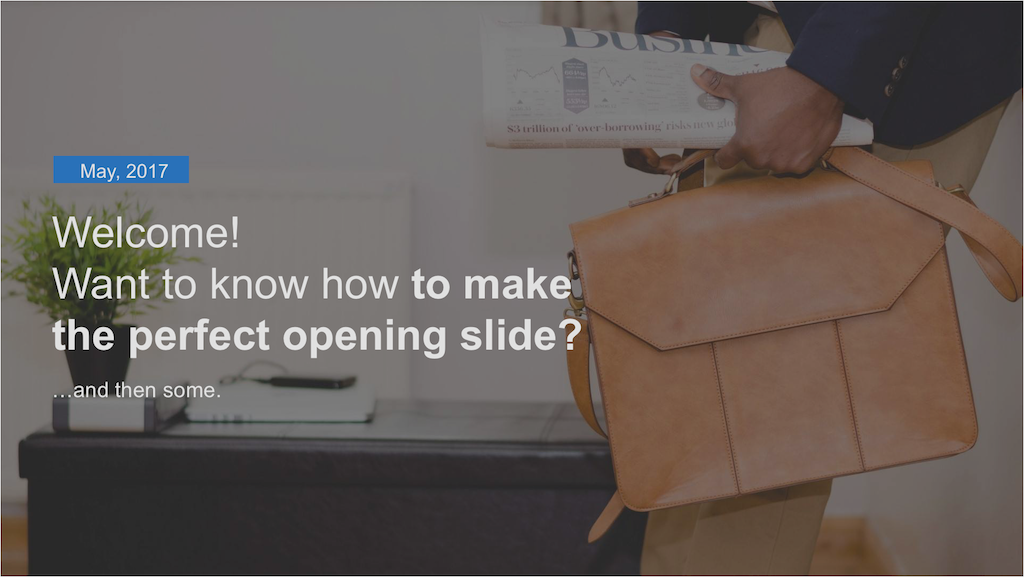
Use a welcoming presentation slide when people have come specifically to see you present.
Don’t use this if you’re presenting in the middle of other presentations, or when the audience have already seen something to do with your product or service that day.
21. Use a Physical Object
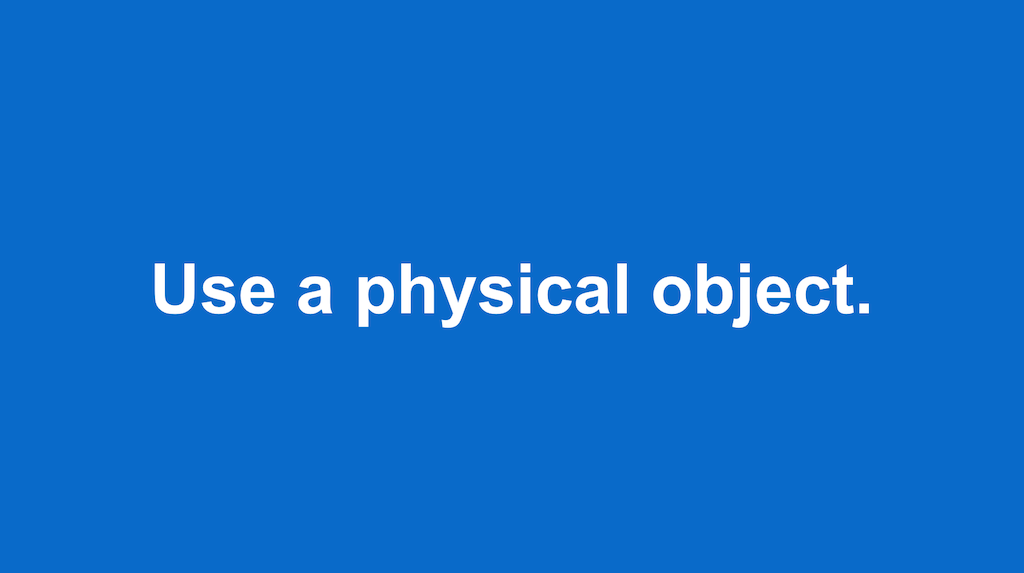
Bring an object along to your presentation that you think could be useful in your presentation, and start with explaining what it is, and why it is significant.
It could be a red ball, which you promise to toss at people who look like they’re going to fall asleep, or a product which you’re trying to sell. Either way, having an object in your opening is an unusual way of starting a presentation, and can get you some important points when presenting.
Use this if you’re presenting to a lively young audience instead of an opening presentation slide.
20. What If…

A good TED talk tactic. Use an imaginary scenario to get the audience to pay attention, and tickle their own abstract ideas about your subject.
Use this presentation slide if you have a hypothetical focus of your presentation, and you’re looking for input from the audience.
19. Show of Hands
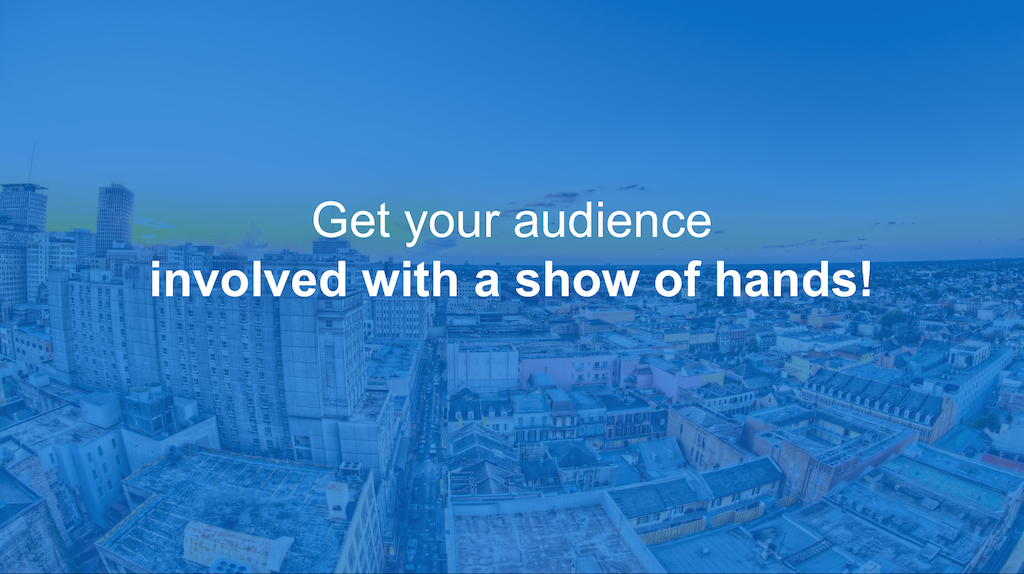
Ask the audience their opinion on something.
Often, this can break the ice between you and the audience, and get you feeling a little more comfortable before you start with your first presentation slide.
18. A Wise Man Once Said… (Or indeed woman!)
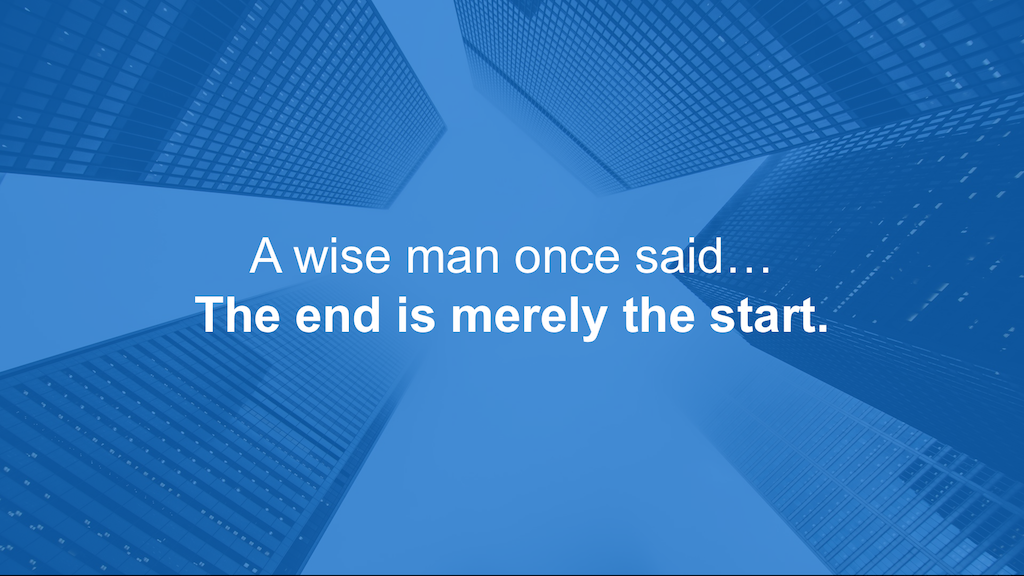
Use a famous quote as a point of reference.
This can be a good way to start a presentation if you think the audience need some context before your presentation, and can be an easy way in if you’re about to explain something complicated.
17. A Prelude.

Instead of starting off your presentation with an about me or history slide, try and tell the audience who you are, and what you’re about before you make the presentation.
One short story about what makes you a real person, and why they should listen to you speak can make a big difference in your confidence, and in the audiences’ faith in you.
16. Dramatic Pause…

You don’t need to use a presentation slide to kick off your speech.
Instead, start your presentation with 10 seconds of silence, and a blank powerpoint slide to heighten the audience anticipation.
15. Add some Glitz
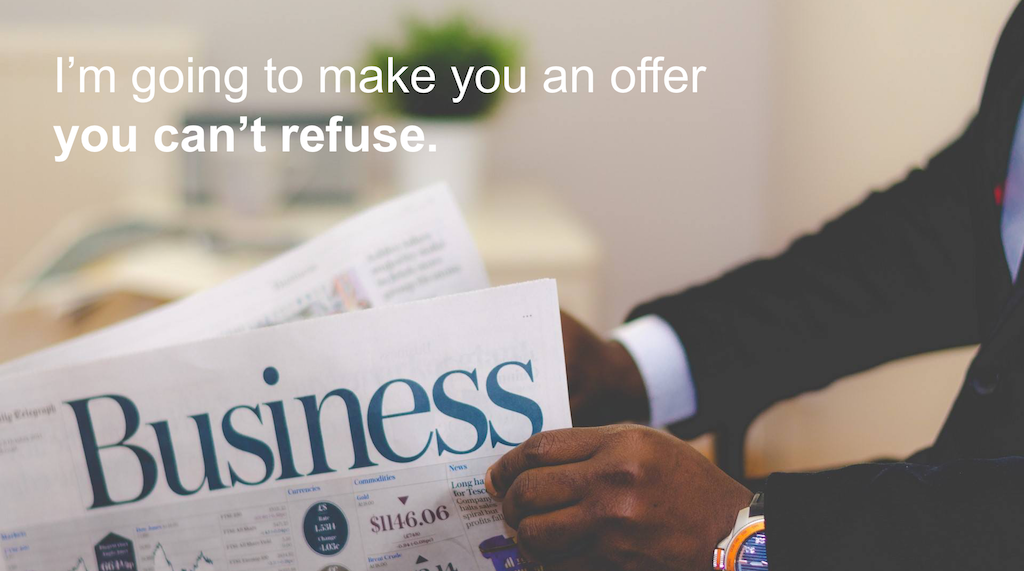
Quote a movie or a song in your first presentation slide to build rapport with your audience.
As long as it’s something that most of the audience will know, you’ll have them listening intently right from the get go!
This is especially important to consider when presenting to millenials.
14. A Number.

Open your speech with a statistical presentation slide.
A number can start your presentation right by giving your audience something tangible to understand.
If your presentation includes an interesting statistic, or you have an interesting point inside your presentation, show it off right at the start to keep your audience curious about how you arrived at that fact.
13. Make a Bold Claim
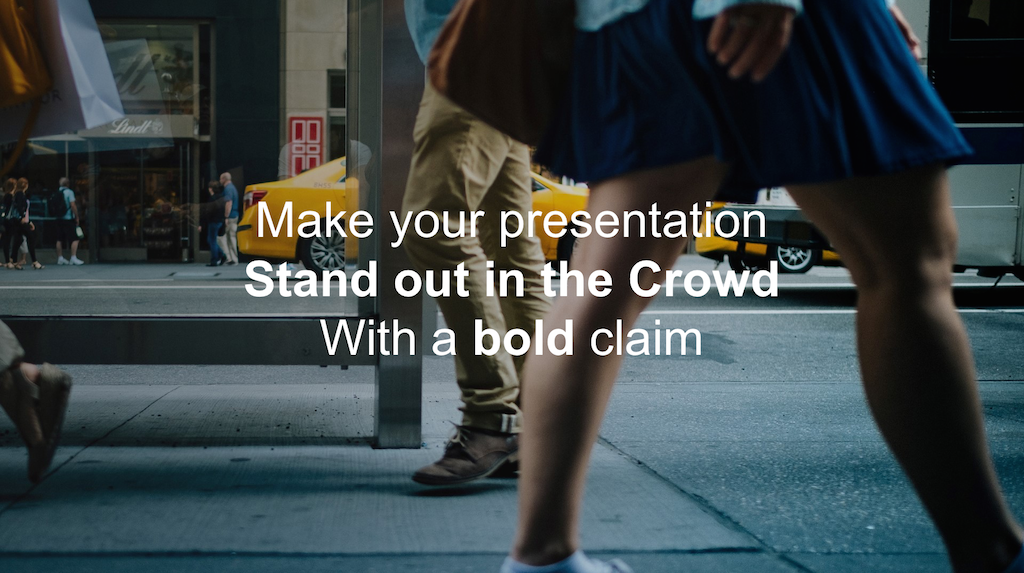
Controversial or elaborate hypotheses are often approached in presentations in an apologetic way, with a build up to the claim.
This is mostly due to nervous presenters to whom the idea of seeming silly at the start of a presentation puts them off using this as a tactic. Don’t be one of them!
12. Thank you
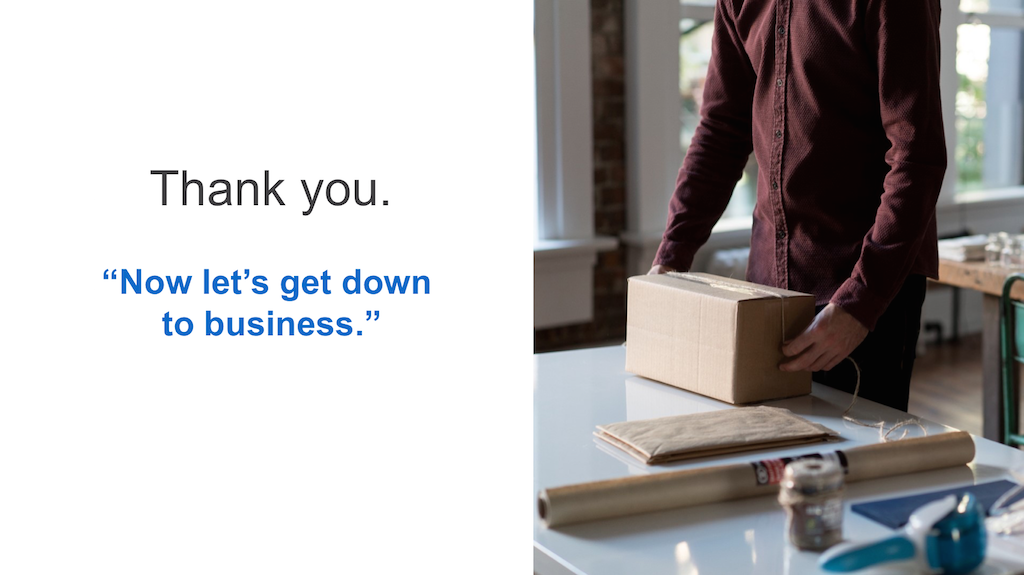
Another effective presentation slide opener is to thank the audience for being there.
Make them feel part of the presentation, and appreciated to get the best reaction from them later in your presentation.
11. Ask a Question

Start by asking your audience a difficult question about the topic to get a feel for the room.
Don’t ask them for a show of hands, but instead just ask them to think about it.
10. State their Problem

If you’re pitching to investors, focus on their problem. Try and relate your product or service to how their lives would be improved on your first presentation slide.
If they’re not the right audience, try and relate it their son, their daughter or their mother. Make it personal.
9. Grab their Attention
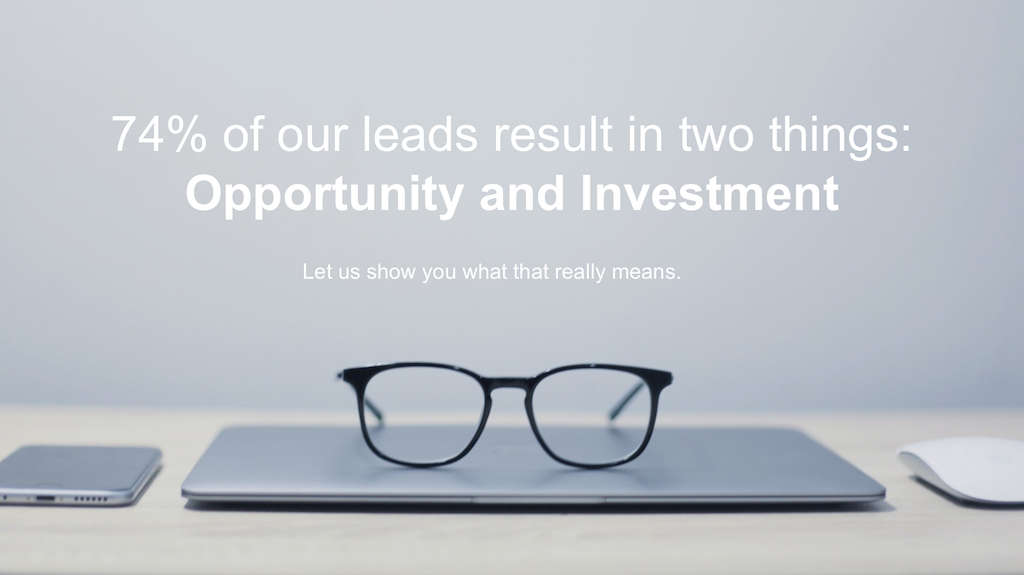
Do you have a shocking piece of information you’re going to present? Maybe you have an impressive statistic, or fact which you discovered or achieved.
Lead with something bold and colorful to grab their attention from the start.
8. Make Fun of Yourself
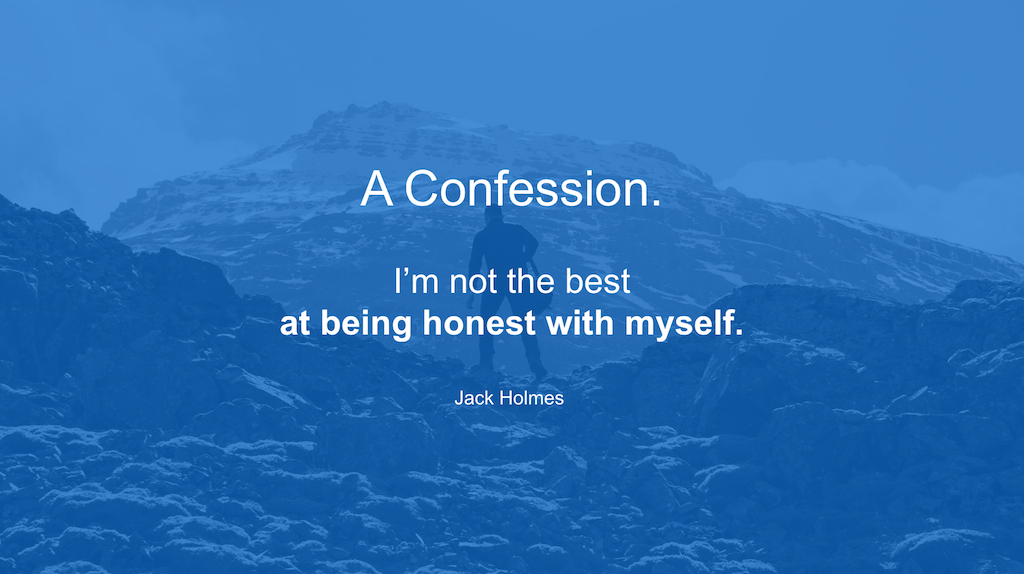
Be humble and approachable right from your first slide if you want to make a fantastic impression.
By showing the audience that you can make fun of yourself, and that you’re honest, you will knock down a little of the fourth wall between you and the people in front of you.
7. Use Curiosity
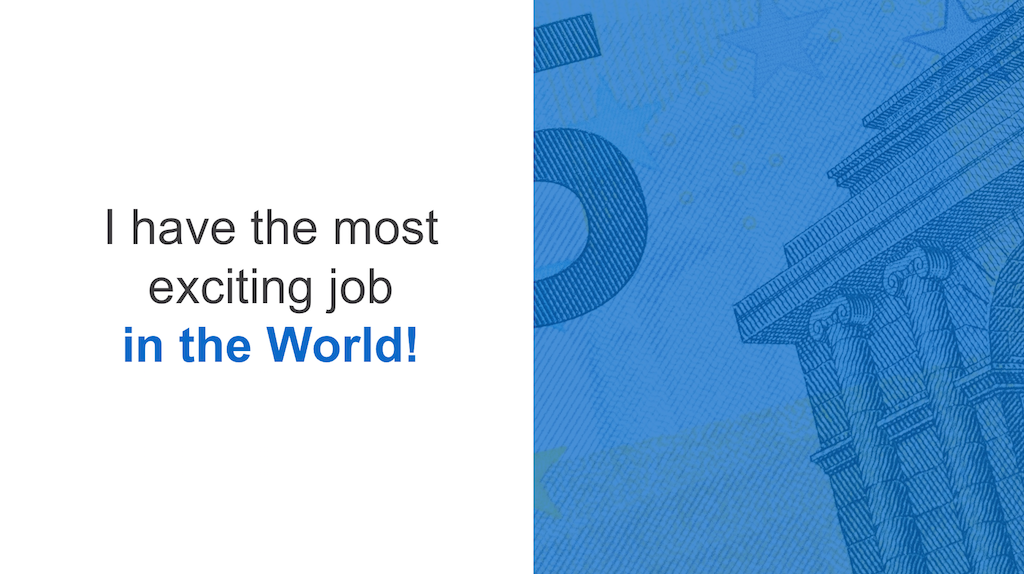
Using curiosity as a way to grab your audience’s attention is a good way to make you feel some power if you get nervous in presentations. Try something along the lines of: “I have the most exciting job in the world. No really, I do. Everyone I meet says “Wow, how do have the energy to do such a thing every day” , as i shrug, and take the compliment. Can you guess what i do? That’s right. I’m an accountant. ”
6. Look Back
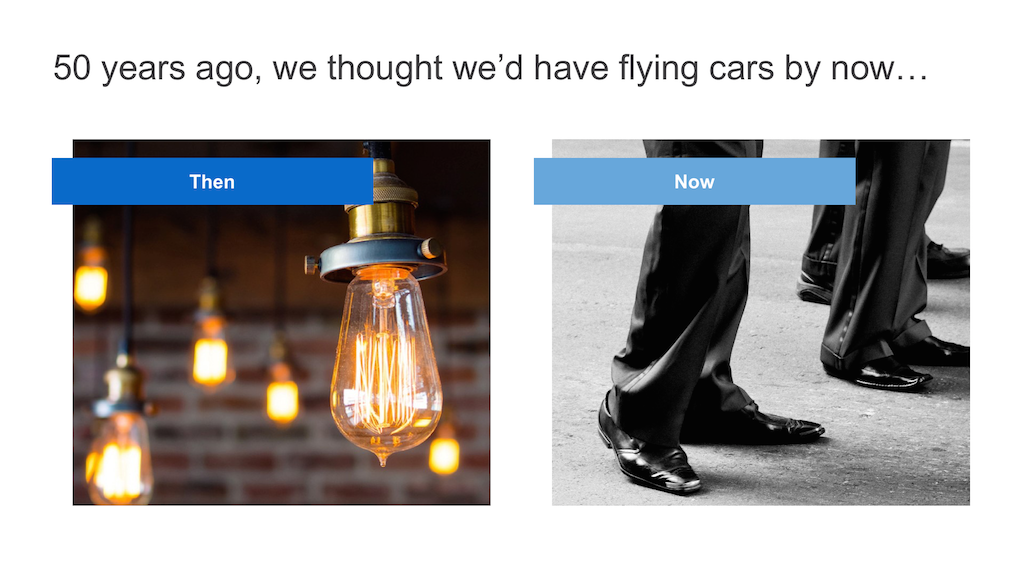
Refer to the past in your first presentation slide, and make a comparison of what humans thought the future would look like related to your presentation topic.
This can be a great way of getting the audience to feel like they already knew something about a difficult subject. It can also help to build connection between you and your audience by relating to a common belief.
5. Look Forward
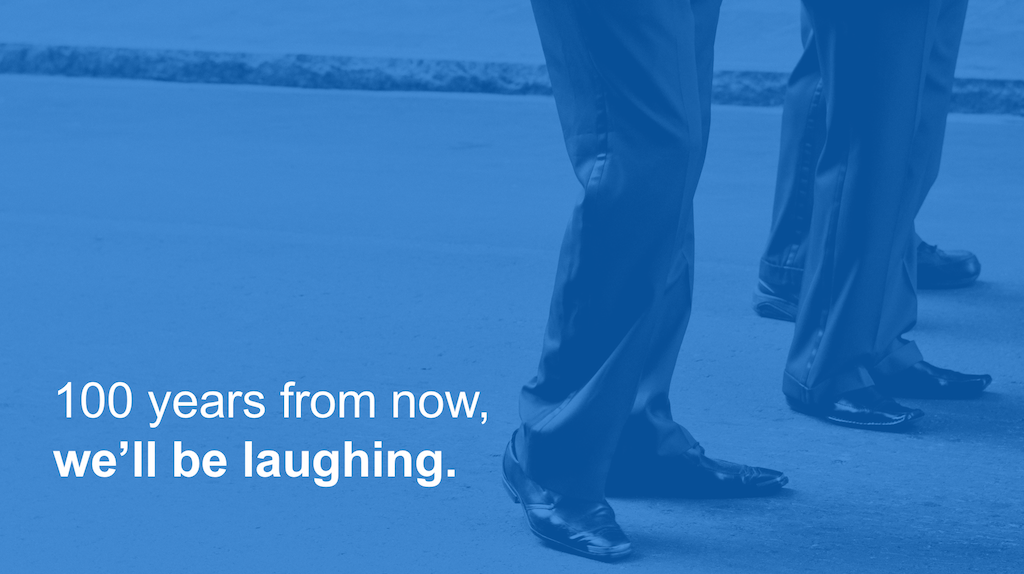
Open your presentation by referring to the future, and what you hope to achieve with your research, data, or pitch.
This is an impressive first presentation slide if you are trying to convince your audience to believe in something, whether that be a product, or a cause.
4. Use a Foreign Proverb
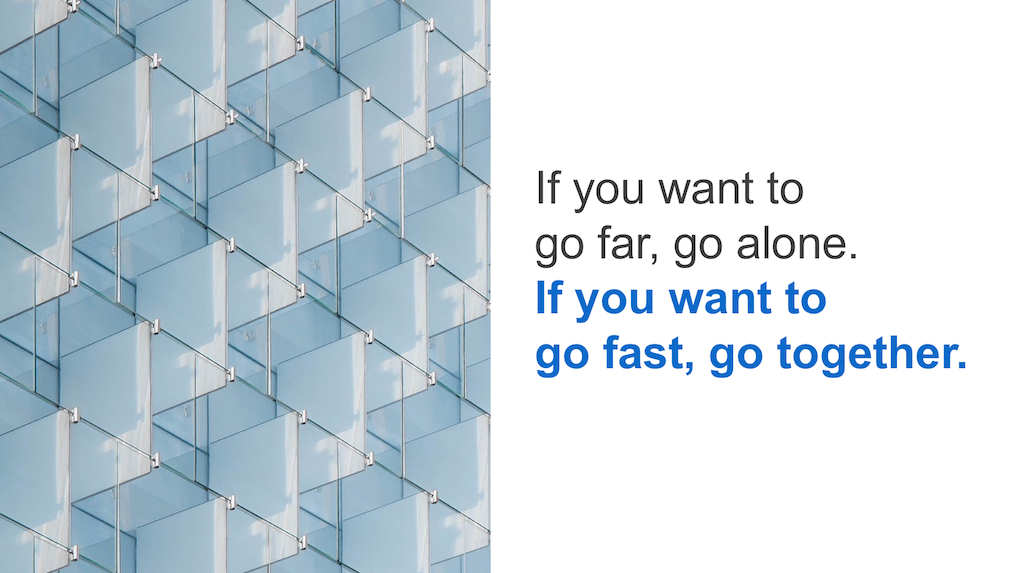
Using an english proverb might be a bit old hat in this day and age. Unless of course you’re going with the ‘dad joke’ ideal to millenials, in which case, press on!
Instead, use a proverb from a different language. There are some real gems out there, and can impress your audience that you’ve gone to the research trouble.
3. Refer to Current Events
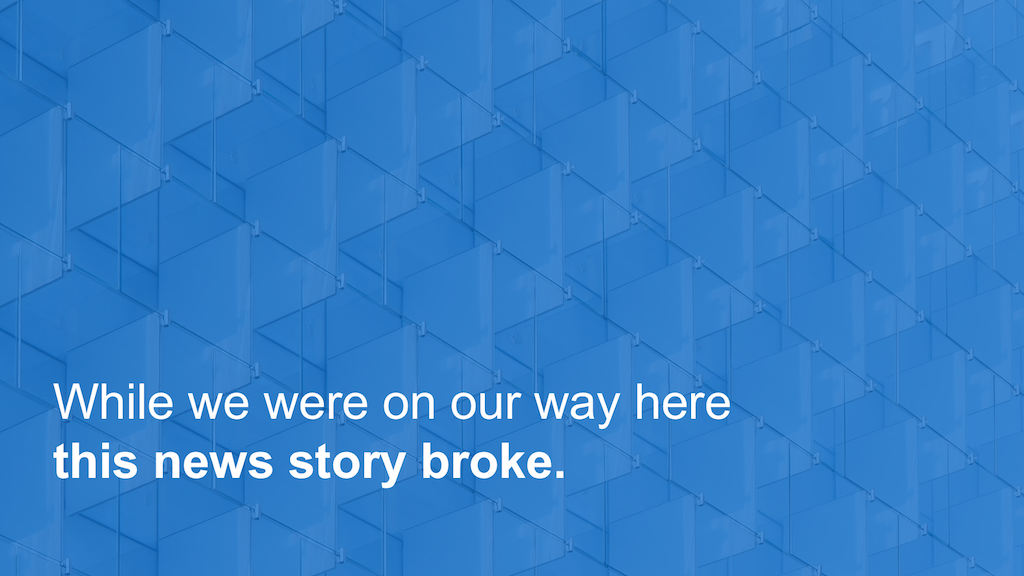
If, on the day you’re due to present you read about an interesting current events story, or news article which links to your presentation, use it as your opening!
Discussing a current events article will show the audience your intellect and also get them understanding you from the get go.
2. Refer to a Historical Event
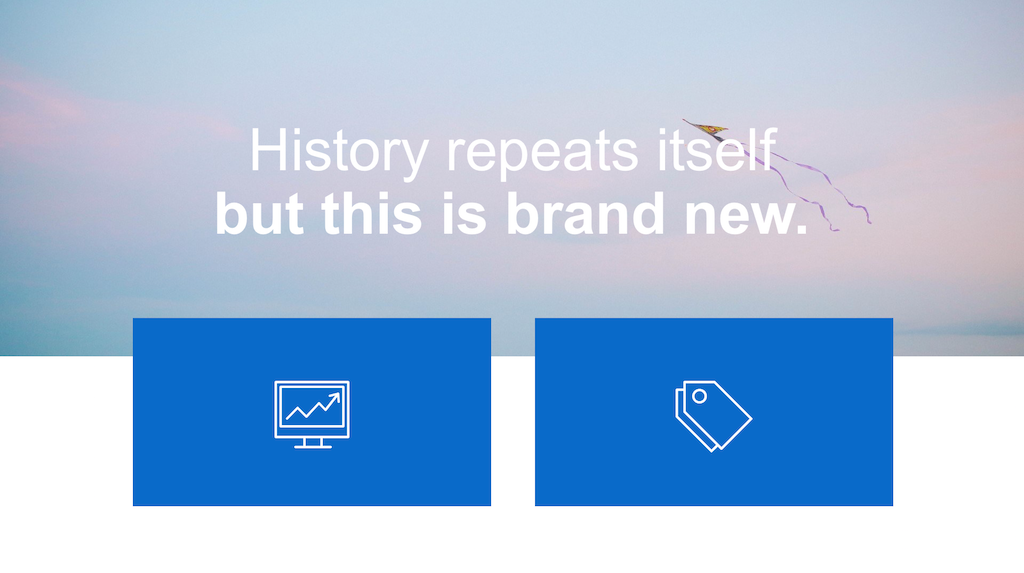
If you’re presenting something really fantastic, comparing your presentation to something significant in the past can be a good way of building some hype.
Of course, if you’re building something which isn’t that revolutionary, try adapting this opening into a humorous comparison instead, and build some rapport with your audience.
1. Tell a Story
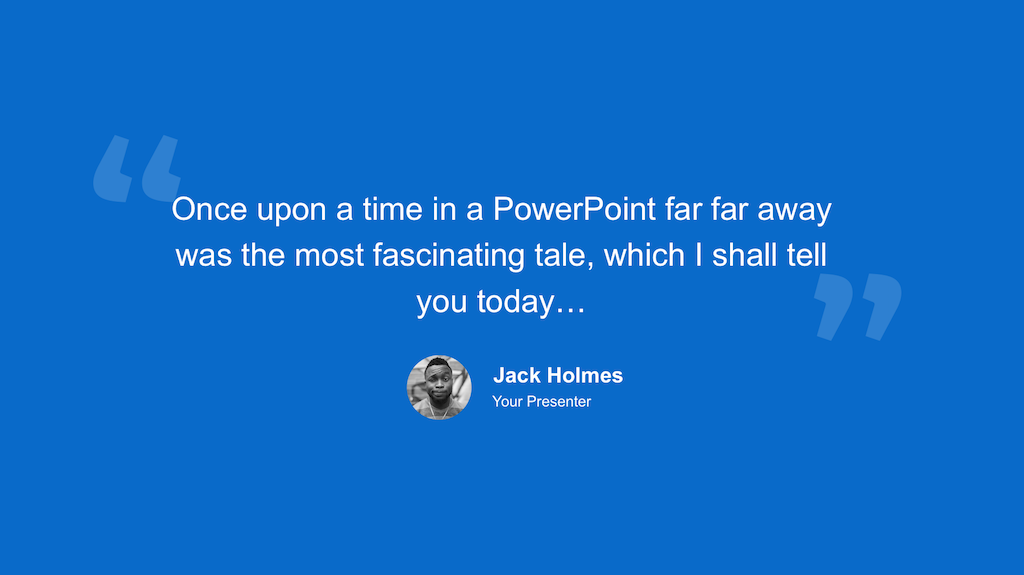
The best way to start a powerpoint presentation is to start is with a story.
A thoughtful story along with a link to your presentation will get you off on the right foot

Get awesome presentation content in your inbox every week
It only takes a click to unsubscribe.
2018 © SlideCamp

- Presentations
- Most Recent
- Infographics
- Data Visualizations
- Forms and Surveys
- Video & Animation
- Case Studies
- Design for Business
- Digital Marketing
- Design Inspiration
- Visual Thinking
- Product Updates
- Visme Webinars
- Artificial Intelligence
How to Start a Presentation: 12 Ways to Keep Your Audience Hooked

Written by: Nayomi Chibana

Wondering how to start a presentation that makes your audience sit up in their seats with excitement?
"Today, you will learn something that will add 10 years to your life."
"20 years from now, your job won't exist."
"Did you know that more people have access to a mobile phone than a toilet?"
Presentation starters like these are key to grabbing your audience's attention and making the most of the time allotted to you.
Instead of thanking the audience, making an unrelated joke or apologizing for a technical issue, why not dive right into the subject matter with a gripping statement or thought-provoking question?
To help you craft your own killer presentation starters, we've sorted through some of the most popular TED talks in history and created this list of the most effective ways to start your next presentation .
Many of these presentation starters are successful because they appeal to human emotions such as curiosity, awe, surprise or fear. You can read more on creating viral content that triggers emotional responses in this post .
Better yet, check out the video version of this blog post. This video distills 12 killer strategies to start your presentation and keep the audience's attention throughout.

- Knowing how to start a presentation is crucial because it sets the tone for the rest of the presentation. A strong and engaging opening can capture the audience's attention and generate interest in your presentation.
- There are many ways to start a presentation: make a provocative statement, incite curiosity; shock the audience; tell a story, be authentic; quote a famous or influential person.
- Here are other presentation opening strategies: Begin with a captivating visual; ask a question; use silence; start with a prop; tell a relevant joke; use the word "imagine.
- Take advantage of Visme's free online presentation software to create attention-grabbing presentations that align with your branding and engage your audience.
- If you're short on time, tap into the power of Visme's AI presentation maker to create stunning presentations in minutes. Simply describe what you want to create, select your preferred design option and let the tool do the heavy lifting.
How to Start a Presentation
Knowing how to start a presentation is just as crucial as the message you're trying to convey. If you can't start it effectively, you might not be able to leave a strong enough impact by the end of it.
TED speakers are some of the best presenters in the world, and there's a lot you can learn from their talks. Below, we've handpicked some of these presentations that start with a bang and manage to keep the audience hooked till the very end.
1 Make a provocative statement.
"I want to discuss with you this afternoon why you're going to fail to have a great career."
One surefire way to get your audience's attention is to make a provocative statement that creates interest and a keen desire to know more about what you have to say.
The presentation above, for example, does just that by making a surprising first statement that inspires surprise, amusement, curiosity and fear at the same time.
With 4.8 million views and counting, this talk by an economics professor draws you in precisely because it steers clear of the traditional talk, using blunt humor to enumerate all the irrational excuses people make for not pursuing their dreams and passions.
2 Incite curiosity.
"I need to make a confession at the outset here. A little over 20 years ago, I did something that I regret, something that I'm not particularly proud of. Something that, in many ways, I wish no one would ever know, but here I feel kind of obliged to reveal."
Another way to grab your audience by the collar is to incite curiosity. In this popular TED talk viewed over 15.4 million times, career analyst Dan Pink succeeds at getting the entire audience to look at him intently, waiting for his next word, by resorting to an opening statement that builds suspense.
Since human beings are by nature curious creatures, most people in the audience were probably asking themselves "What did he do?" and imagining all sorts of possible scenarios.
3 Shock the audience.
"You will live seven and a half minutes longer than you would have otherwise, just because you watched this talk."
In many ways related to the previous two presentation starters, this hook involves making a counter-intuitive or paradigm-shifting statement that goes against a popular belief or simply shocks due to the perceived impossibility of the proposed statement.
This introduction by game designer Jane McGonigal, for example, achieves a level of surprise by making a seemingly improbable assertion. After hearing this kind of statement, most people will want to listen to your entire talk, if not out of genuine interest, then at least for the sake of pacifying their incredulity.
(By the way, she makes good on her promise by revealing a game she designed to boost resilience, which is backed by scientific research.)
4 Tell a story.
"When I was seven years old and my sister was just five years old, we were playing on top of a bunk bed..."
As covered in a previous post , storytelling is the key ingredient that separates good, engaging presentations from bad ones that lack a clear message and persuasive delivery.
In his popular talk on the secret to being more productive, psychologist Shawn Achor tells a childhood story to lead into the effectiveness of positive psychology. He then goes on to provide concrete evidence backing his claim that pursuing happiness, rather than productivity for its own sake, actually makes you more--not less--productive.
Create a stunning presentation in less time
- Hundreds of premade slides available
- Add animation and interactivity to your slides
- Choose from various presentation options
Sign up. It’s free.

5 Be authentic.
"I'm going to tell you a little bit about my TEDxHouston Talk. I woke up the morning after I gave that talk with the worst vulnerability hangover of my life. And I actually didn't leave my house for about three days."
Another way to draw your audience into your own world is to tell a revealing personal story. This is certainly not easy but, when done right, can quickly spark interest in your topic and build an emotional connection between you and your audience.
In Brene Brown's talk on confronting shame, she begins by admitting that she felt embarrassed over the revelations she had made in her massively popular TED talk on embracing vulnerability.
6 Quote an influential person.
One of the easiest ways to start a presentation is to quote an influential person. In these cases, it's best to use a pithy, short and relevant quote to catch your audience's attention.
In the widely viewed video above, for example, writer Andrew Solomon quotes Emily Dickinson to begin his talk on depression, an illness he asserts affects many more people than the official figures suggest.
The quote is particularly powerful and effective because it eloquently describes the state of depression from the point of view of a person who is feeling all the emotions associated with it.
7 Begin with a captivating visual.
To introduce this fascinating TED talk on how movements really get started, entrepreneur Derek Sivers uses some surprising footage to support his statements. They are especially captivating because they debunk widely held beliefs on the matter, proving that it takes more than just a charismatic leader to start a revolution of any sort.
8 Ask a question.
"Do you think it's possible to control someone's attention? Even more than that, what about predicting human behavior?"
In this attention-grabbing presentation on the flaws in human perception, world-famous pickpocket Apollo Robbins starts off by asking the audience a question that leads right into the meat of his talk, which has been viewed worldwide more than 10.5 million times.
In these cases, it's best to pose a question that will really get your audience thinking and, in the best possible scenario, challenge their prevailing beliefs or preconceptions on a certain topic.
51 Best Presentation Slides for Engaging Presentations (2024)
9 Use silence.
Another effective technique--which should only be used if you're a seasoned presenter and are able to maintain your composure throughout--is to leverage silence to command a room.
Watch, for example, how musician Amanda Palmer starts off her talk by not saying a word, simply breathing in and out and using props to communicate her message.
Although you may not want to resort to both silence and using a prop in your presentation, this is a very effective dramatic technique that, if done right, quickly draws all eyes to you.
10 Start with a prop.
Considering that the audience's gaze is attracted by motion and visual objects, another way to hook them right from the outset is to use a prop.
Take a look at how best-selling author Susan Cain uses a physical object to visually complement her opening story on her first summer camp experience. It not only adds a dramatic effect, it also keeps viewers eyes on her while on stage.
11 Tell a relevant joke.
"Okay, now I don't want to alarm anybody in this room, but it's just come to my attention that the person to your right is a liar."
Humor is not only a good way to break the ice and endear the audience to you right from the outset, it can also be very effective in getting your point across if it's relevant to your talk.
Lie detector Pamela Meyer, for example, deftly uses both humor and an element of surprise in her opening statement as she tells the audience that the person to their right is probably a liar. This gets the audience to laugh and then focus on her topic at the same time.
She goes on to give some shocking statistics (such as that on any given day, we're lied to up to 200 times) and delivers an intriguing talk that has been seen close to 13 million times.
12 Use the word "imagine."
"Imagine a big explosion as you climb through 3,000 ft. Imagine a plane full of smoke. Imagine an engine going clack, clack, clack. It sounds scary."
Lastly, there are times when leading your audience to use their imaginations is the best bet. You can prompt them to do this by using the commands "imagine," "think of" or "picture this." These are just a few of the most powerful opening words for presentation.
Plane crash survivor Ric Elias, for example, uses this technique in the video above to quickly thrust his audience into the central scene of his harrowing story.
Learn How to Start a Presentation Effectively
What about your next presentation? Have you thought about how you're going to set the mood for your talk? We've rounded up some of the best way to start a presentation.
When you're ready to get started creating your presentation, give Visme's presentation software a try! The tool comes with an AI writer that helps you generate killer content for your next presentation in seconds.
Plus, check out our post on how to end a presentation so you both start and end your speech with a bang.
And if you want to learn all our secrets on how to deliver an unforgettable presentation, as well as how to create visual slides with impact, grab our free e-book below.

Create beautiful presentations faster with Visme.

Trusted by leading brands
Recommended content for you:
![presentation opening page 15 Best AI Presentation Makers in 2024 [Free & Paid]](https://visme.co/blog/wp-content/uploads/2023/11/Best-AI-Presentation-Makers-in-2024-Thumbnail-500x280.jpg)
Create Stunning Content!
Design visual brand experiences for your business whether you are a seasoned designer or a total novice.
About the Author
Nayomi Chibana is a journalist and writer for Visme’s Visual Learning Center. Besides researching trends in visual communication and next-generation storytelling, she’s passionate about data-driven content.
Click to copy
Email copied!
How to Start a Presentation with Impact + 12 Examples!
December 1, 2023

In the world of snooze-worthy presentations, your opening is your moment of truth. Knowing how to start a presentation—be it a sales presentation, an investor pitch, a conference keynote, or an internal team update—sets the tone for everything that follows. The best way to open your presentation? Forget about overly complicated introductions, because you’ll want to use your initial seconds to pique genuine curiosity and capture attention.
Whether it's through a thought-provoking quote, a stunning visual, a brief yet impactful video, an engaging question, or an interactive poll, the goal is to make your audience sit up and take notice, avoiding the common pitfall of starting with an 'about me' narrative. Remember, in these moments, your story is less about you and more about resonating with your audience. Wondering how you can craft an opening that not only grabs attention but also holds it? Here’s how to make sure your message sticks the landing.
How to Start Your Sales Presentation with Impact
The opening of a sales presentation is crucial in setting the stage for what you're offering. It’s your chance to grab the audience's attention and make them eager to hear more about your product or service. We might specialize in PowerPoint design services, but we’re also suckers for punchy openings and clever wordsmithing. Here are five dynamic ways to start your sales presentation to engage your audience effectively. After all, who’s going to buy from you if your presentation isn’t engaging?
Interesting Statistics
Begin your presentation with a statistic that highlights a problem or opportunity relevant to your audience. For instance, if you’re selling a cybersecurity solution, you might start with, "Did you know that cyber attacks are increasing at an alarming rate of 30% per year?" This kind of opening not only grabs attention but also establishes the importance of your product or service. The more attention-grabbing, the better!
Compelling Questions
Asking a thought-provoking question can immediately engage your audience. It encourages them to think and become active participants. For example, "Have you ever considered how much time we waste on inefficient processes?" This approach works well in highlighting the pain points that your product or service can address.
Presentation Storytelling
Stories are powerful tools for connection, no doubt. Start with a short, relatable story that illustrates the need for your product or service. A narrative about a common challenge and how your product provided a solution can be very effective. For instance, "Let me tell you about a client who was struggling with..."
Visual Impact
Using a striking visual can be a great way to start a sales presentation. A compelling image or a brief video that gets your message across can make a strong impression. This could be as simple as a before-and-after scenario, showcasing the effectiveness of your product.
Bold Statements
Kick off with a bold, intriguing statement that makes the audience sit up and take notice. It should be directly related to the benefits of your product or service. For example, "We're not just changing the game–we're redefining it." This kind of opening sets a confident tone for the rest of your presentation.

How to Start Your Investor Pitch Presentation
Presenting to investors is a unique challenge. You need to quickly establish credibility and capture their interest. Here are five effective strategies for opening your investor presentation to ensure you make a lasting impression.
Visionary Opening
Begin with a powerful vision statement that encapsulates the essence and ambition of your business. This could be a glimpse into the future that your company is striving to create. For example, "At the heart of our company lies a vision to revolutionize sustainable energy for generations to come." This approach instantly sets a high-level tone and shows investors the potential impact of your business.
Compelling Problem Statement
Start with a clear and compelling description of the problem your business aims to solve. This not only highlights the need for your solution but also demonstrates your understanding of the market. For instance, "In a world where over 30% of produced food is wasted, our solution offers an innovative way to reduce this drastically."
Success Story
Share a brief story of a significant milestone or success that your company has achieved. This could be about landing a major client, a breakthrough in your technology, or a notable growth milestone. This kind of opening underlines your company's potential and track record.
Surprising Fact or Stat
Kick off with a surprising fact related to your industry that sets the stage for your presentation. This should be something that highlights the market opportunity or the need for your solution. For instance, "In the $2.2 trillion food industry, a shocking 30% of produce goes to waste. Our solution tackles this inefficiency head-on."
Personal Journey
Starting with a brief narrative about why you founded the company can be a powerful way to connect with investors on a more personal level. It adds a human element to your presentation, allowing investors to understand your passion and commitment. For example, "My journey to founding this company began five years ago when I encountered..."

How to Start a Keynote Presentation
Keynote talks are an opportunity to inspire, influence, and leave a lasting impression on your audience. The opening of your talk is critical in setting the stage for your message. These are our favorite ways to hook your audience from the get-go.
Inspirational Quote
Open with a quote that resonates with the theme of your talk. Choose a saying from a well known person that gets the basic idea of your message across. For instance, "As Nelson Mandela once said, 'It always seems impossible until it’s done.' Today, we explore the 'impossible'." This approach connects your audience to something that feels familiar and sets a reflective tone for the rest of the presentation.
Intriguing Question
Pose an intriguing question to your audience that provokes thought and relates directly to your topic. This could be a rhetorical question or one that challenges common perceptions. For example, "Have you ever wondered what truly drives innovation in our fast-paced world?" This strategy engages your audience’s curiosity right from the start.
Personal Anecdote
Sharing a personal story that relates to your keynote theme can create an immediate emotional connection with your audience. It adds a personal touch and makes your message more relatable. Begin with, "Let me share a personal experience that profoundly changed my perspective on..." Remember to avoid going on about yourself, and instead focus on how the experience relates to the rest of your presentation.
These are all effective ways to make presentation storytelling lots more engaging. You can also use the previous suggestions of beginning the presentation with a visual hook or surprising fact to hook your audience from the start.

How to Start Your Internal Team Meeting Presentation
Nobody wants their internal updates to prompt “couldn’t this be an email?” comments from their colleagues. For internal updates, the approach should be distinctively different, focusing on team engagement, shared goals, and collective progress. Here’s what we suggest for your presentation to ensure your team is attentive and motivated.
Celebratory Kick-Off
Begin with a celebration of a recent achievement or milestone. This could be team-centric, like reaching a project goal, or company-wide, such as a notable business success. For example, "I am thrilled to start today by celebrating our team's achievement in surpassing our quarterly targets."
Progress Highlight
Start by highlighting progress on key projects or initiatives. This could be a brief overview of where things stand or a specific success story. It’s a great way to show the team that their efforts are leading to tangible results. For instance, "Let's kick off by looking at the incredible progress we've made on the X project in the last month."
Team Member Spotlight
Open by spotlighting a team member's contribution or achievement. This not only recognizes individual efforts but also fosters a culture of appreciation and motivation. For example, "I want to begin today's meeting by highlighting James' outstanding contribution to our client project last week."
Industry News or Trends
Start with a brief discussion on relevant industry news or trends that might impact your team or company. This keeps the team informed and can start discussions on how these developments might affect your work. For example, "Let's start with some interesting developments in our industry that could present new opportunities for us."
Each of these approaches is designed to create an engaging and inclusive atmosphere for internal updates. The focus is on building team morale, encouraging participation, and keeping everyone aligned with the company’s goals and achievements.

Recap: 12 Examples for Starting Your Presentation with Impact
To wrap up, let's compile three actionable examples for each type of presentation we've discussed. These examples are designed to be directly applicable, giving you a practical blueprint for engaging your audience right from the beginning of your presentation.
Sales Presentations
Statistic-based .
"Every year, businesses lose approximately $1.7 trillion due to inefficiencies in communication. Today, we introduce a solution that turns this challenge into an opportunity."
Question-Based
"How many of you have experienced frustration due to delayed flights? Our app is here to change your travel experience forever."
"Last year, a small business owner faced a daunting challenge with their supply chain. Our software transformed their process, resulting in a 40% increase in efficiency."
Investor Presentations
Vision statement.
"We envision a future where renewable energy is not a luxury, but a norm for every household. Our technology is the key to this future."
Problem Statement
"In a world where online privacy is constantly under threat, our platform provides an unbreachable shield, safeguarding digital identities."
"Just six months ago, our prototype caught the attention of industry giants, leading to a groundbreaking partnership that sets us on a path to revolutionize our field."
Keynote Talks
"Margaret Mead famously said, 'Never doubt that a small group of thoughtful, committed citizens can change the world.' This idea is at the core of our discussion today."
"What if I told you that the biggest barrier to innovation is not a lack of ideas, but a lack of action? Let’s explore this further."
Visual Display
"This image [showing a powerful photograph] represents the drastic change our industry has undergone in the last decade. Let's dive into what this means for us."
Internal Updates
"I'm excited to announce that thanks to our team's efforts, customer satisfaction has hit an all-time high this quarter!"
Interactive Element
"To get us started, I'd like everyone to share one word that describes their current project experience."
Industry News
"Recent developments in AI technology have opened new avenues for our projects. Let's discuss how we can integrate these into our workflow."

These examples offer a versatile range of strategies to effectively start your presentations, tailored to the specific context and audience of your talk. Whether it’s a sales presentation, an investor pitch, a conference keynote, or an internal team update, using these examples as a guide can help you grab your audience's attention and keep them engaged throughout. Presenting is not easy, but a good opening will give you the confidence boost that can help you throughout your talk. Here’s to less-boring presentations!
Recent articles
View all articles
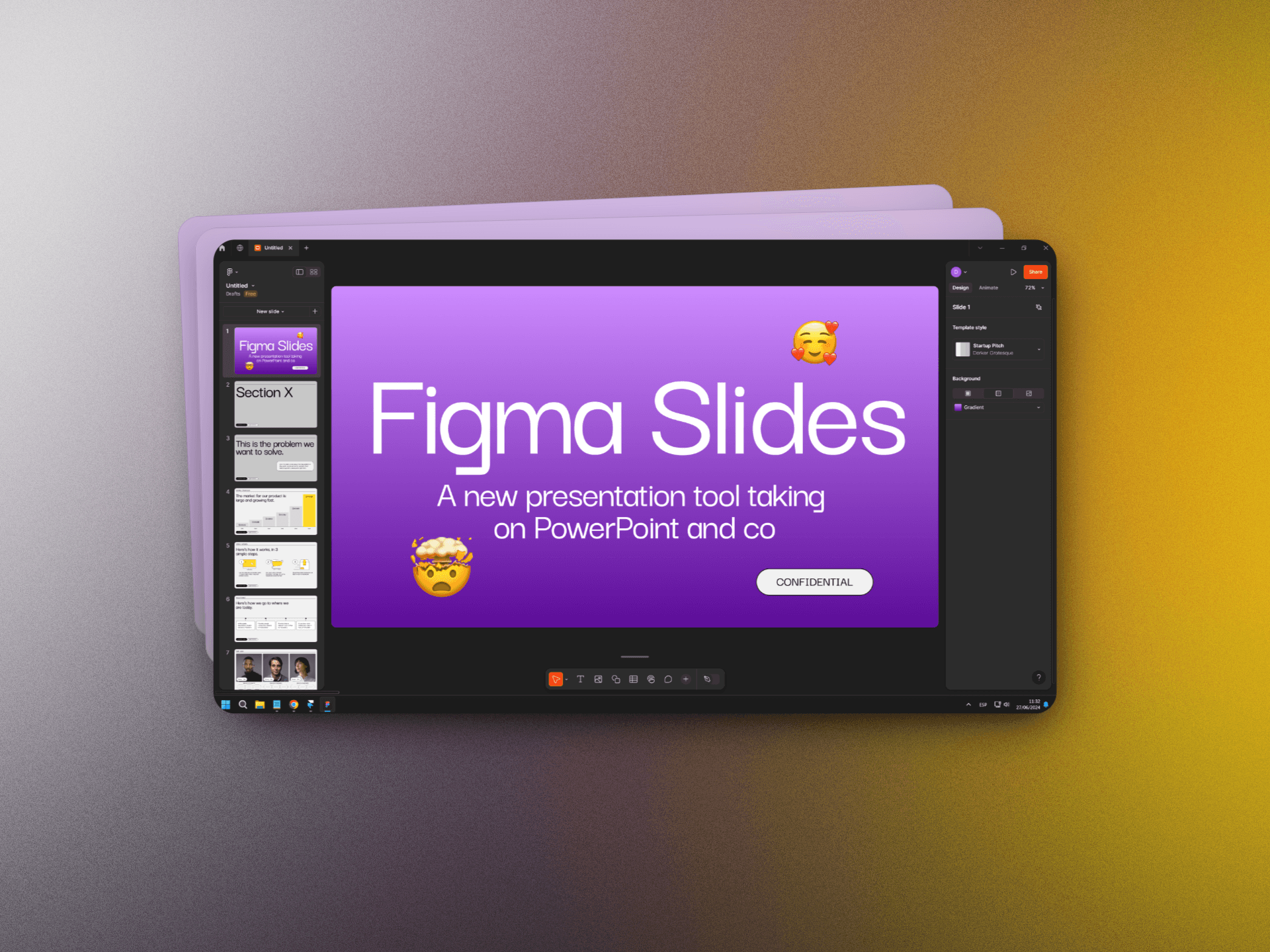
Figma Slides: A new presentation tool taking on PowerPoint and co
Presentation tools

How to prepare a great conference keynote presentation
Public speaking
7 Creative Ways to Start Any Presentation (With Examples!)
I like building and growing simple yet powerful products for the world and the worldwide web.
Published Date : December 4, 2020
Reading Time :
Creating an effective presentation is challenging and needs a lot of effort to become engaging with your audience. Many questions are indeed rounding up your head.
Like how to start a PowerPoint presentation and a class set-up presentation, it helps people, such as entrepreneurs, organize and disseminate their ideas flawlessly.
It clarifies intentions, concepts, and other feasible topics specifically. They may differ from execution, events, and for whom the presentation.
With that, the bottom line and the question is how to do it. How do you start a Board Meeting <p data-sourcepos="3:1-3:200">A formal gathering of a company's board of directors, where they discuss strategic matters, review financial performance, make key decisions, and oversee the organization's governance.</p><br /><h2 data-sourcepos="5:1-5:21"><strong>Key Participants:</strong></h2> <ul data-sourcepos="7:1-11:0"> <li data-sourcepos="7:1-7:102"><strong>Board members:</strong> Elected or appointed individuals responsible for guiding the company's direction.</li> <li data-sourcepos="8:1-8:94"><strong>Executives:</strong> Company leaders like the CEO, CFO, and COO, who provide updates and reports.</li> <li data-sourcepos="9:1-9:88"><strong>Secretary:</strong> Oversees logistics, records minutes, and ensures compliance with rules.</li> <li data-sourcepos="10:1-11:0"><strong>Legal counsel:</strong> Offers guidance on legal matters and ensures adherence to regulations.</li> </ul> <h2 data-sourcepos="12:1-12:12"><strong>Purpose:</strong></h2> <ul data-sourcepos="14:1-19:0"> <li data-sourcepos="14:1-14:78"><strong>Strategic planning:</strong> Setting the company's long-term direction and goals.</li> <li data-sourcepos="15:1-15:81"><strong>Financial oversight:</strong> Reviewing financial reports, budgets, and investments.</li> <li data-sourcepos="16:1-16:86"><strong>Risk management:</strong> Identifying and mitigating potential risks to the organization.</li> <li data-sourcepos="17:1-17:76"><strong>Executive evaluation:</strong> Assessing the performance of company leadership.</li> <li data-sourcepos="18:1-19:0"><strong>Decision-making:</strong> Approving key initiatives, investments, and policies.</li> </ul> <h2 data-sourcepos="20:1-20:11"><strong>Format:</strong></h2> <ul data-sourcepos="22:1-25:0"> <li data-sourcepos="22:1-22:43">Varies based on company size and culture.</li> <li data-sourcepos="23:1-23:91">Typically includes presentations, discussions, voting on proposals, and Q&A sessions.</li> <li data-sourcepos="24:1-25:0">It may be formal with strict agendas or more informal with brainstorming sessions.</li> </ul> <h2 data-sourcepos="26:1-26:26"><strong>Public Speaking Roles:</strong></h2> <ul data-sourcepos="28:1-30:0"> <li data-sourcepos="28:1-28:125"><strong>CEO and other executives:</strong> Act as a <strong>public speaker</strong>, presenting reports, answering questions, and defending proposals.</li> <li data-sourcepos="29:1-30:0"><strong>Board members:</strong> May participate in discussions, ask questions, and occasionally propose or speak in favor of motions.</li> </ul> <h2 data-sourcepos="31:1-31:39"><strong>Addressing Public Speaking Anxiety:</strong></h2> <ul data-sourcepos="33:1-36:0"> <li data-sourcepos="33:1-33:87">Many executives and board members face <strong>public speaking anxiety</strong> in these meetings.</li> <li data-sourcepos="34:1-34:93">Preparation, practicing presentations, and visualization techniques can help manage nerves.</li> <li data-sourcepos="35:1-36:0">Some companies hire <strong>public speaking coaches</strong> to offer personalized guidance and improve communication skills.</li> </ul> <h2 data-sourcepos="37:1-37:248"><strong>Remember:</strong></h2> <p data-sourcepos="37:1-37:248">Effective board meetings require clear communication, active participation, and informed decision-making. By understanding the format, roles, and potential challenges, participants can contribute to a productive and impactful session.</p> " href="https://orai.com/glossary/board-meeting/" data-gt-translate-attributes="[{"attribute":"data-cmtooltip", "format":"html"}]" tabindex="0" role="link">board meeting presentation, or how do you start a presentation introduction in class?
Many students are also struggling with how to start a case study presentation, and young entrepreneurs or start-ups are struggling with how to start a business presentation.
To ease the tension and upgrade your Confidence <p data-sourcepos="3:1-3:305">In the context of <strong>public speaking</strong>, <strong>confidence</strong> refers to the belief in one's ability to communicate effectively and deliver one's message with clarity and impact. It encompasses various elements, including self-belief, composure, and the ability to manage one's <strong>fear of public speaking</strong>.</p><br /><h2 data-sourcepos="5:1-5:16"><strong>Key Aspects:</strong></h2> <ul data-sourcepos="7:1-12:0"> <li data-sourcepos="7:1-7:108"><strong>Self-belief:</strong> A strong conviction in your knowledge, skills, and ability to connect with your audience.</li> <li data-sourcepos="8:1-8:95"><strong>Composure:</strong> Maintaining calmness and poise under pressure, even in challenging situations.</li> <li data-sourcepos="9:1-9:100"><strong>Assertiveness:</strong> Expressing your ideas clearly and concisely, avoiding hesitation or self-doubt.</li> <li data-sourcepos="10:1-10:104"><strong>Positive self-talk:</strong> Countering negative thoughts with affirmations and focusing on your strengths.</li> <li data-sourcepos="11:1-12:0"><strong>Strong body language:</strong> Using gestures, posture, and eye contact that project confidence and professionalism.</li> </ul> <h2 data-sourcepos="13:1-13:27"><strong>Benefits of Confidence:</strong></h2> <ul data-sourcepos="15:1-19:0"> <li data-sourcepos="15:1-15:99"><strong>Reduced anxiety:</strong> Feeling confident helps manage <strong>fear of public speaking</strong> and stage fright.</li> <li data-sourcepos="16:1-16:133"><strong>Engaging delivery:</strong> Confident speakers project their voices, hold eye contact, and connect with their audience more effectively.</li> <li data-sourcepos="17:1-17:137"><strong>Increased persuasiveness:</strong> A confident presentation inspires belief and motivates your audience to listen and remember your message.</li> <li data-sourcepos="18:1-19:0"><strong>Greater impact:</strong> Confidently delivered speeches leave a lasting impression and achieve desired outcomes.</li> </ul> <h2 data-sourcepos="20:1-20:15"><strong>Challenges:</strong></h2> <ul data-sourcepos="22:1-26:0"> <li data-sourcepos="22:1-22:112">Overcoming <strong>fear of public speaking</strong>: Many people experience some level of anxiety when speaking publicly.</li> <li data-sourcepos="23:1-23:101"><strong>Imposter syndrome:</strong> Doubting your abilities and qualifications, even when objectively qualified.</li> <li data-sourcepos="24:1-24:92"><strong>Negative self-talk:</strong> Internalized criticism and limiting beliefs can hamper confidence.</li> <li data-sourcepos="25:1-26:0"><strong>Past negative experiences:</strong> Unsuccessful presentations or negative feedback can erode confidence.</li> </ul> <h2 data-sourcepos="27:1-27:24"><strong>Building Confidence:</strong></h2> <ul data-sourcepos="29:1-36:0"> <li data-sourcepos="29:1-29:102"><strong>Practice and preparation:</strong> Thoroughly rehearse your speech to feel comfortable with the material.</li> <li data-sourcepos="30:1-30:101"><strong>Visualization:</strong> Imagine yourself delivering a successful presentation with confidence and poise.</li> <li data-sourcepos="31:1-31:100"><strong>Positive self-talk:</strong> Actively replace negative thoughts with affirmations about your abilities.</li> <li data-sourcepos="32:1-32:106"><strong>Seek feedback:</strong> Ask trusted individuals for constructive criticism and use it to improve your skills.</li> <li data-sourcepos="33:1-33:157">Consider a <strong>speaking coach</strong>: Working with a coach can provide personalized guidance and support to address specific challenges and confidence barriers.</li> <li data-sourcepos="34:1-34:114"><strong>Start small:</strong> Gradually increase the size and complexity of your speaking engagements as you gain experience.</li> <li data-sourcepos="35:1-36:0"><strong>Focus on progress:</strong> Celebrate small successes and acknowledge your improvement over time.</li> </ul> <h2 data-sourcepos="37:1-37:282"><strong>Remember:</strong></h2> <p data-sourcepos="37:1-37:282"><strong>Confidence</strong> in public speaking is a journey, not a destination. By actively practicing, embracing feedback, and focusing on your strengths, you can overcome <strong>fear of public speaking</strong> and develop the <strong>confidence</strong> to deliver impactful and memorable presentations.</p> " href="https://orai.com/glossary/confidence/" data-gt-translate-attributes="[{"attribute":"data-cmtooltip", "format":"html"}]" tabindex="0" role="link">confidence , furthermore those people above, I will share some tips, steps, and how to start a presentation example.
Why Presentation is Important in Persuading
Presentations break communication barriers. Across this, it brings mutual understanding to the audience.
In winning your stances and goals, having and knowing how to start a presentation is a must. It helps you more to give an idea of what your topic could be through moving pictures and graphics in reality.
The role of presentation in persuading can be categorized into many factors. First, it helps your audience to feel more comfortable with your spiels.
Second, you have the chance to tell your options, choices, summary, and the result of your case study, etc., within your presentation. Especially can be stoop on how to start a business presentation.
Lastly, knowing how to deliver and how to start a presentation in persuading your listener includes support for your audience’s decision. Through it, the concept of persuasion becomes more reliable with tangible materials.
It is evident in thesis defenses and academic proposals. To start a case study presentation, you must present facts, stats, related studies, and other materials.
And to achieve that in a well-presented way, you need to think and come up with a composition associated with your topic to make it reliable and credible.
Different Ways to Start a Presentation
Difficulties on how to start a case study presentation and the things you need to behold within your PowerPoint presentation would be easy after sharing with you this advice.
As for direction and advice, take a look at this list to start a presentation generally.
1. Start With a Strong Claim
The beginning is always the hard part of a presentation. But like a bottle of water, after it gets opened, the water inside can flow smoothly to your gulp.
Meaning after spitting out your first words, everything should follow accordingly to your presentation. That’s why it is the most crucial when you are learning how to start a presentation.
Try to use the iconic lines of a famous philosopher —striking advice of a hotshot entrepreneur for your business proposal presentation.
Through this, you can have a good impression on your listener. Shook them and contradict their ideas; indeed, you can have an intense or beneficial presentation.
2. Know Your Prospect
Besides technicalities and visuals, knowing first the current state, perspective, wants, and needs of your prospect or audience is vital.
Before the presentation, you can send them a pre-assessment or survey consisting of what they want to see and learn and things to keep them interested, or you need to get their attention and interest.
3. Assist the Flow With Visuals
Showing your audience a good spiel in presenting your developing ideas and concepts through pictures that can’t be put quickly in language can break communication drawbacks.
Apart from describing your idea in a presentation, you are also giving quick ways to dice abstract ideas.
4. Moving Pictures
Pictures and videos are great instruments for nurturing your ideas and your audience counterparts.
The power of moving pictures is evident as the film business and the movie industry is booming and depicting fictional stories into reality.
5. Break People’s Expectation
To break the set expectations of your audience for you, always stick to your premise. Whether on business, academics, proposals, and other topical presentations.
Call an action to smash misconceptions about your particular presentation.
6. Spill Surprising Stories
Bring stories and the characters in life. Create conflict and suspense to highlight your goal’s presentation.
It also helps you to organize your presentation’s information to be catchy and relatable. Touching stories can affect audience decision-making.
7. Know When to Pause
Don’t present vague ideas, premises, and concepts. Stop bombarding your audience.
After a round of applause or before speaking, take a three-second pause. Observe your audience’s facial expressions.
With that, you can focus on your tone. It is also an indication that you want to give your audience a short rest.
Orai helps you perfect your Speech <p data-sourcepos="3:1-3:271">A form of communication involving spoken language, it is used to express ideas, share information, tell stories, persuade, or entertain. Public speaking is a powerful tool used in diverse contexts, ranging from casual conversations to formal presentations.</p><br /><h2 data-sourcepos="5:1-5:27"><strong>Components of a Speech:</strong></h2> <ul data-sourcepos="7:1-10:0"> <li data-sourcepos="7:1-7:73"><strong>Content:</strong> The information, message, or story conveyed through words.</li> <li data-sourcepos="8:1-8:106"><strong>Delivery:</strong> The vocal and physical presentation, including clarity, volume, gestures, and eye contact.</li> <li data-sourcepos="9:1-10:0"><strong>Structure:</strong> The organization of the content, typically following an introduction, body, and conclusion.</li> </ul> <h2 data-sourcepos="11:1-11:21"><strong>Speech in Action:</strong></h2> <ul data-sourcepos="13:1-17:0"> <li data-sourcepos="13:1-13:88"><strong>Informing:</strong> Sharing knowledge and facts, educating an audience on a specific topic.</li> <li data-sourcepos="14:1-14:119"><strong>Persuading:</strong> Advocating for a particular viewpoint, using arguments and evidence to influence thoughts or actions.</li> <li data-sourcepos="15:1-15:93"><strong>Motivating:</strong> Inspiring and energizing an audience, fostering action and positive change.</li> <li data-sourcepos="16:1-17:0"><strong>Entertaining:</strong> Engaging and delighting an audience through humor, storytelling, or creative language.</li> </ul> <h2 data-sourcepos="18:1-18:32"><strong>Public Speaking and Anxiety:</strong></h2> <p data-sourcepos="20:1-20:227">Many people experience <strong>public speaking anxiety</strong>, a fear of speaking in front of an audience. While it's common, effective preparation, practice, and breathing techniques can significantly reduce anxiety and improve delivery.</p><br /><h2 data-sourcepos="22:1-22:32"><strong>Different Types of Speeches:</strong></h2> <ul data-sourcepos="24:1-28:0"> <li data-sourcepos="24:1-24:81"><strong>Informative speech:</strong> Focuses on conveying information clearly and concisely.</li> <li data-sourcepos="25:1-25:102"><strong>Persuasive speech:</strong> Aims to convince the audience to adopt a particular viewpoint or take action.</li> <li data-sourcepos="26:1-26:99"><strong>Motivational speech:</strong> Inspires and energizes the audience, building enthusiasm and commitment.</li> <li data-sourcepos="27:1-28:0"><strong>Entertaining speech:</strong> Aim to amuse and delight the audience, often using humor, storytelling, or anecdotes.</li> </ul> <h2 data-sourcepos="29:1-29:33"><strong>Crafting a Compelling Speech:</strong></h2> <ul data-sourcepos="31:1-35:0"> <li data-sourcepos="31:1-31:106"><strong>Know your audience:</strong> Tailor your content and delivery to their interests, needs, and prior knowledge.</li> <li data-sourcepos="32:1-32:107"><strong>Have a clear message:</strong> Identify the main point you want to convey and structure your speech around it.</li> <li data-sourcepos="33:1-33:111"><strong>Engage your audience:</strong> Use varied vocal techniques, storytelling, and visual aids to keep them interested.</li> <li data-sourcepos="34:1-35:0"><strong>Practice, practice, practice:</strong> Rehearse your speech out loud to refine your delivery and build confidence.</li> </ul> <h2 data-sourcepos="36:1-36:13"><strong>Remember:</strong></h2> <p data-sourcepos="38:1-38:281">Speech is a powerful tool for communication, connection, and influence. By understanding its elements, addressing potential anxieties, and tailoring your delivery to different contexts, you can harness the power of speech to achieve your intended goals and captivate your audience.</p> " href="https://orai.com/glossary/speech/" data-gt-translate-attributes="[{"attribute":"data-cmtooltip", "format":"html"}]" tabindex="0" role="link">speech with feedback on your tone, tempo, Confidence <p data-sourcepos="3:1-3:305">In the context of <strong>public speaking</strong>, <strong>confidence</strong> refers to the belief in one's ability to communicate effectively and deliver one's message with clarity and impact. It encompasses various elements, including self-belief, composure, and the ability to manage one's <strong>fear of public speaking</strong>.</p><br /><h2 data-sourcepos="5:1-5:16"><strong>Key Aspects:</strong></h2> <ul data-sourcepos="7:1-12:0"> <li data-sourcepos="7:1-7:108"><strong>Self-belief:</strong> A strong conviction in your knowledge, skills, and ability to connect with your audience.</li> <li data-sourcepos="8:1-8:95"><strong>Composure:</strong> Maintaining calmness and poise under pressure, even in challenging situations.</li> <li data-sourcepos="9:1-9:100"><strong>Assertiveness:</strong> Expressing your ideas clearly and concisely, avoiding hesitation or self-doubt.</li> <li data-sourcepos="10:1-10:104"><strong>Positive self-talk:</strong> Countering negative thoughts with affirmations and focusing on your strengths.</li> <li data-sourcepos="11:1-12:0"><strong>Strong body language:</strong> Using gestures, posture, and eye contact that project confidence and professionalism.</li> </ul> <h2 data-sourcepos="13:1-13:27"><strong>Benefits of Confidence:</strong></h2> <ul data-sourcepos="15:1-19:0"> <li data-sourcepos="15:1-15:99"><strong>Reduced anxiety:</strong> Feeling confident helps manage <strong>fear of public speaking</strong> and stage fright.</li> <li data-sourcepos="16:1-16:133"><strong>Engaging delivery:</strong> Confident speakers project their voices, hold eye contact, and connect with their audience more effectively.</li> <li data-sourcepos="17:1-17:137"><strong>Increased persuasiveness:</strong> A confident presentation inspires belief and motivates your audience to listen and remember your message.</li> <li data-sourcepos="18:1-19:0"><strong>Greater impact:</strong> Confidently delivered speeches leave a lasting impression and achieve desired outcomes.</li> </ul> <h2 data-sourcepos="20:1-20:15"><strong>Challenges:</strong></h2> <ul data-sourcepos="22:1-26:0"> <li data-sourcepos="22:1-22:112">Overcoming <strong>fear of public speaking</strong>: Many people experience some level of anxiety when speaking publicly.</li> <li data-sourcepos="23:1-23:101"><strong>Imposter syndrome:</strong> Doubting your abilities and qualifications, even when objectively qualified.</li> <li data-sourcepos="24:1-24:92"><strong>Negative self-talk:</strong> Internalized criticism and limiting beliefs can hamper confidence.</li> <li data-sourcepos="25:1-26:0"><strong>Past negative experiences:</strong> Unsuccessful presentations or negative feedback can erode confidence.</li> </ul> <h2 data-sourcepos="27:1-27:24"><strong>Building Confidence:</strong></h2> <ul data-sourcepos="29:1-36:0"> <li data-sourcepos="29:1-29:102"><strong>Practice and preparation:</strong> Thoroughly rehearse your speech to feel comfortable with the material.</li> <li data-sourcepos="30:1-30:101"><strong>Visualization:</strong> Imagine yourself delivering a successful presentation with confidence and poise.</li> <li data-sourcepos="31:1-31:100"><strong>Positive self-talk:</strong> Actively replace negative thoughts with affirmations about your abilities.</li> <li data-sourcepos="32:1-32:106"><strong>Seek feedback:</strong> Ask trusted individuals for constructive criticism and use it to improve your skills.</li> <li data-sourcepos="33:1-33:157">Consider a <strong>speaking coach</strong>: Working with a coach can provide personalized guidance and support to address specific challenges and confidence barriers.</li> <li data-sourcepos="34:1-34:114"><strong>Start small:</strong> Gradually increase the size and complexity of your speaking engagements as you gain experience.</li> <li data-sourcepos="35:1-36:0"><strong>Focus on progress:</strong> Celebrate small successes and acknowledge your improvement over time.</li> </ul> <h2 data-sourcepos="37:1-37:282"><strong>Remember:</strong></h2> <p data-sourcepos="37:1-37:282"><strong>Confidence</strong> in public speaking is a journey, not a destination. By actively practicing, embracing feedback, and focusing on your strengths, you can overcome <strong>fear of public speaking</strong> and develop the <strong>confidence</strong> to deliver impactful and memorable presentations.</p> " href="https://orai.com/glossary/confidence/" data-gt-translate-attributes="[{"attribute":"data-cmtooltip", "format":"html"}]" tabindex="0" role="link">confidence , and Conciseness <p data-sourcepos="3:1-3:326">In the realm of <strong>public speaking</strong>, <strong>conciseness</strong> refers to the ability to express your message clearly and effectively using the fewest possible words. It's about conveying your ideas precisely, avoiding unnecessary details and rambling while maintaining your message's essence and impact.</p><br /><h2 data-sourcepos="5:1-5:33"><strong>Benefits for Public Speakers:</strong></h2> <ul data-sourcepos="7:1-11:0"> <li data-sourcepos="7:1-7:137"><strong>Engaged audience:</strong> A concise speech keeps your audience focused and prevents them from losing interest due to excessive information.</li> <li data-sourcepos="8:1-8:117"><strong>Increased clarity:</strong> By removing unnecessary clutter, your core message becomes clearer and easier to understand.</li> <li data-sourcepos="9:1-9:137"><strong>Enhanced credibility:</strong> Concise communication projects professionalism and efficiency, making you appear more confident and prepared.</li> <li data-sourcepos="10:1-11:0"><strong>Reduced anxiety:</strong> Knowing you have a clear and concise message can help manage <strong>public speaking anxiety</strong> by minimizing the pressure to fill time.</li> </ul> <h2 data-sourcepos="12:1-12:35"><strong>Challenges for Public Speakers:</strong></h2> <ul data-sourcepos="14:1-17:0"> <li data-sourcepos="14:1-14:126"><strong>Striking a balance:</strong> Knowing where to draw the line between conciseness and omitting important information can be tricky.</li> <li data-sourcepos="15:1-15:115"><strong>Avoiding oversimplification:</strong> Complex topics may require elaboration to ensure clarity and understanding.</li> <li data-sourcepos="16:1-17:0"><strong>Overcoming natural tendencies:</strong> Some speakers naturally use more words than others, requiring a conscious effort to be concise.</li> </ul> <h2 data-sourcepos="18:1-18:41"><strong>Strategies for Achieving Conciseness:</strong></h2> <ul data-sourcepos="20:1-25:0"> <li data-sourcepos="20:1-20:92"><strong>Identify your core message:</strong> What is your audience's main point to remember?</li> <li data-sourcepos="21:1-21:128"><strong>Prioritize and eliminate:</strong> Analyze your content and remove any information not directly supporting your core message.</li> <li data-sourcepos="22:1-22:133"><strong>Use strong verbs and active voice:</strong> This makes your sentences more impactful and avoids passive constructions that can be wordy.</li> <li data-sourcepos="23:1-23:109"><strong>Simplify your language:</strong> Avoid jargon and technical terms unless they are essential and clearly defined.</li> <li data-sourcepos="24:1-25:0"><strong>Practice and refine:</strong> Rehearse your speech aloud and identify areas where you can tighten your wording or eliminate redundancies.</li> </ul> <h2 data-sourcepos="26:1-26:20"><strong>Additional Tips:</strong></h2> <ul data-sourcepos="28:1-31:0"> <li data-sourcepos="28:1-28:93"><strong>Use storytelling:</strong> Engaging narratives can convey complex ideas concisely and memorably.</li> <li data-sourcepos="29:1-29:110"><strong>Focus on the visuals:</strong> Powerful visuals can support your message without extensive explanation.</li> <li data-sourcepos="30:1-31:0"><strong>Embrace silence:</strong> Pausing deliberately can emphasize key points and give your audience time to absorb your message.</li> </ul> <h2 data-sourcepos="32:1-32:404"><strong>Remember:</strong></h2> <p data-sourcepos="32:1-32:404"><strong>Conciseness</strong> is a powerful tool for <strong>public speakers</strong>. By eliminating unnecessary words and focusing on your core message, you can create a more engaging, impactful, and memorable presentation for your audience. This can also help manage <strong>public speaking anxiety</strong> by reducing the pressure to fill time and enabling you to focus on delivering your message with clarity and confidence.</p> " href="https://orai.com/glossary/conciseness/" data-gt-translate-attributes="[{"attribute":"data-cmtooltip", "format":"html"}]" tabindex="0" role="link">conciseness .
Things to Avoid on Presentation
Introducing your name along with your topic is not acceptable and is not a killer intro. To nail a presentation, be careful and prevent unnecessary elements.
Here is the list of recommended things you should avoid on how to start a presentation.
1. Cliché Sentences
Do you believe that the flow and relevancy of your presentation depend on your introduction?
If you do believe, avoid cruddy beginnings, initials, and phrases. Instead of stating, “What will your presentation be about,” give them an idea of why they need it and why it is worth sharing.
2. Plain Visuals
Stop using standard PowerPoint templates, discarded pictures, and non-HD videos. For engaging your audience, mastering your spiels is not enough to convince your listeners.
The balanced presentation consists of a good Speech <p data-sourcepos="3:1-3:271">A form of communication involving spoken language, it is used to express ideas, share information, tell stories, persuade, or entertain. Public speaking is a powerful tool used in diverse contexts, ranging from casual conversations to formal presentations.</p><br /><h2 data-sourcepos="5:1-5:27"><strong>Components of a Speech:</strong></h2> <ul data-sourcepos="7:1-10:0"> <li data-sourcepos="7:1-7:73"><strong>Content:</strong> The information, message, or story conveyed through words.</li> <li data-sourcepos="8:1-8:106"><strong>Delivery:</strong> The vocal and physical presentation, including clarity, volume, gestures, and eye contact.</li> <li data-sourcepos="9:1-10:0"><strong>Structure:</strong> The organization of the content, typically following an introduction, body, and conclusion.</li> </ul> <h2 data-sourcepos="11:1-11:21"><strong>Speech in Action:</strong></h2> <ul data-sourcepos="13:1-17:0"> <li data-sourcepos="13:1-13:88"><strong>Informing:</strong> Sharing knowledge and facts, educating an audience on a specific topic.</li> <li data-sourcepos="14:1-14:119"><strong>Persuading:</strong> Advocating for a particular viewpoint, using arguments and evidence to influence thoughts or actions.</li> <li data-sourcepos="15:1-15:93"><strong>Motivating:</strong> Inspiring and energizing an audience, fostering action and positive change.</li> <li data-sourcepos="16:1-17:0"><strong>Entertaining:</strong> Engaging and delighting an audience through humor, storytelling, or creative language.</li> </ul> <h2 data-sourcepos="18:1-18:32"><strong>Public Speaking and Anxiety:</strong></h2> <p data-sourcepos="20:1-20:227">Many people experience <strong>public speaking anxiety</strong>, a fear of speaking in front of an audience. While it's common, effective preparation, practice, and breathing techniques can significantly reduce anxiety and improve delivery.</p><br /><h2 data-sourcepos="22:1-22:32"><strong>Different Types of Speeches:</strong></h2> <ul data-sourcepos="24:1-28:0"> <li data-sourcepos="24:1-24:81"><strong>Informative speech:</strong> Focuses on conveying information clearly and concisely.</li> <li data-sourcepos="25:1-25:102"><strong>Persuasive speech:</strong> Aims to convince the audience to adopt a particular viewpoint or take action.</li> <li data-sourcepos="26:1-26:99"><strong>Motivational speech:</strong> Inspires and energizes the audience, building enthusiasm and commitment.</li> <li data-sourcepos="27:1-28:0"><strong>Entertaining speech:</strong> Aim to amuse and delight the audience, often using humor, storytelling, or anecdotes.</li> </ul> <h2 data-sourcepos="29:1-29:33"><strong>Crafting a Compelling Speech:</strong></h2> <ul data-sourcepos="31:1-35:0"> <li data-sourcepos="31:1-31:106"><strong>Know your audience:</strong> Tailor your content and delivery to their interests, needs, and prior knowledge.</li> <li data-sourcepos="32:1-32:107"><strong>Have a clear message:</strong> Identify the main point you want to convey and structure your speech around it.</li> <li data-sourcepos="33:1-33:111"><strong>Engage your audience:</strong> Use varied vocal techniques, storytelling, and visual aids to keep them interested.</li> <li data-sourcepos="34:1-35:0"><strong>Practice, practice, practice:</strong> Rehearse your speech out loud to refine your delivery and build confidence.</li> </ul> <h2 data-sourcepos="36:1-36:13"><strong>Remember:</strong></h2> <p data-sourcepos="38:1-38:281">Speech is a powerful tool for communication, connection, and influence. By understanding its elements, addressing potential anxieties, and tailoring your delivery to different contexts, you can harness the power of speech to achieve your intended goals and captivate your audience.</p> " href="https://orai.com/glossary/speech/" data-gt-translate-attributes="[{"attribute":"data-cmtooltip", "format":"html"}]" tabindex="0" role="link">speech , spiels, and an enticing display. Instead of using plain visuals, use simple but complex graphics.
3. Lame Transitions
It is not all about effects or glitching transition effects but about how you transmit your spiels. Always open your arguments with a bang and end them using striking remarks.
4. Unstable Stats and Facts
Don’t use outdated data, studies, and facts. Don’t go to less up-to-date data websites.
Treat the facts and stats as vitamins for your presentation, as it helps your exhibition look reliable and robust.
5. Colorless Templates
Pick templates that fit your topic and theme—download innovative templates and slides. Analyze your presentation structure.
Make sure to go for a font that suits perfectly to the presentation. Go for roadmaps, unique mats, and decks.
Check out this video for more tips on how to avoid presentation pitfalls:
Steps to Enhance Your Visual Presentation
To sort things specifically on how to start a presentation. Here are the steps and tips on how to start a PowerPoint presentation.
Step 1: Get a Color Palette
“Colors speak louder than texts.”
Aside from shapes, figures, and moving objects, picking the right color palette for your presentation can beautify the board’s ambiance if that’s the case.
Logos and company icons have their color combination to mark and emphasize their brand to all consumers. It may also apply to presentations.
If you want to be considered or remembered, start by choosing the right color palette.
Step 2: Create a Theme
The theme supports the flow of your topic; it is the backbone of your presentation. Not considering this element can’t make your topic vague and not intact.
Step 3: Add Hyperlinks
Going back to how to start a presentation, comparing specific ideas is a waste of time. Using hyperlinks, you can offer your audience a “video game” theme.
Step 4: Play Short Video or Create GIFS
Before or after spiels about a particular slide, play a short video as an icebreaker. It helps you to feed your audience with a large amount of information in a shorter period.
Step 5: Practice the Presentation with Spiels in Every Portion
Practice helps you to attain presentation skills. You can interact with your audience, disseminate the messages clearly, and analyze your listeners’ mindset.
You can also improve the flow of run-throughs. These will support you to polish and enhance persuasive skills.
Practice your perfect Speech <p data-sourcepos="3:1-3:271">A form of communication involving spoken language, it is used to express ideas, share information, tell stories, persuade, or entertain. Public speaking is a powerful tool used in diverse contexts, ranging from casual conversations to formal presentations.</p><br /><h2 data-sourcepos="5:1-5:27"><strong>Components of a Speech:</strong></h2> <ul data-sourcepos="7:1-10:0"> <li data-sourcepos="7:1-7:73"><strong>Content:</strong> The information, message, or story conveyed through words.</li> <li data-sourcepos="8:1-8:106"><strong>Delivery:</strong> The vocal and physical presentation, including clarity, volume, gestures, and eye contact.</li> <li data-sourcepos="9:1-10:0"><strong>Structure:</strong> The organization of the content, typically following an introduction, body, and conclusion.</li> </ul> <h2 data-sourcepos="11:1-11:21"><strong>Speech in Action:</strong></h2> <ul data-sourcepos="13:1-17:0"> <li data-sourcepos="13:1-13:88"><strong>Informing:</strong> Sharing knowledge and facts, educating an audience on a specific topic.</li> <li data-sourcepos="14:1-14:119"><strong>Persuading:</strong> Advocating for a particular viewpoint, using arguments and evidence to influence thoughts or actions.</li> <li data-sourcepos="15:1-15:93"><strong>Motivating:</strong> Inspiring and energizing an audience, fostering action and positive change.</li> <li data-sourcepos="16:1-17:0"><strong>Entertaining:</strong> Engaging and delighting an audience through humor, storytelling, or creative language.</li> </ul> <h2 data-sourcepos="18:1-18:32"><strong>Public Speaking and Anxiety:</strong></h2> <p data-sourcepos="20:1-20:227">Many people experience <strong>public speaking anxiety</strong>, a fear of speaking in front of an audience. While it's common, effective preparation, practice, and breathing techniques can significantly reduce anxiety and improve delivery.</p><br /><h2 data-sourcepos="22:1-22:32"><strong>Different Types of Speeches:</strong></h2> <ul data-sourcepos="24:1-28:0"> <li data-sourcepos="24:1-24:81"><strong>Informative speech:</strong> Focuses on conveying information clearly and concisely.</li> <li data-sourcepos="25:1-25:102"><strong>Persuasive speech:</strong> Aims to convince the audience to adopt a particular viewpoint or take action.</li> <li data-sourcepos="26:1-26:99"><strong>Motivational speech:</strong> Inspires and energizes the audience, building enthusiasm and commitment.</li> <li data-sourcepos="27:1-28:0"><strong>Entertaining speech:</strong> Aim to amuse and delight the audience, often using humor, storytelling, or anecdotes.</li> </ul> <h2 data-sourcepos="29:1-29:33"><strong>Crafting a Compelling Speech:</strong></h2> <ul data-sourcepos="31:1-35:0"> <li data-sourcepos="31:1-31:106"><strong>Know your audience:</strong> Tailor your content and delivery to their interests, needs, and prior knowledge.</li> <li data-sourcepos="32:1-32:107"><strong>Have a clear message:</strong> Identify the main point you want to convey and structure your speech around it.</li> <li data-sourcepos="33:1-33:111"><strong>Engage your audience:</strong> Use varied vocal techniques, storytelling, and visual aids to keep them interested.</li> <li data-sourcepos="34:1-35:0"><strong>Practice, practice, practice:</strong> Rehearse your speech out loud to refine your delivery and build confidence.</li> </ul> <h2 data-sourcepos="36:1-36:13"><strong>Remember:</strong></h2> <p data-sourcepos="38:1-38:281">Speech is a powerful tool for communication, connection, and influence. By understanding its elements, addressing potential anxieties, and tailoring your delivery to different contexts, you can harness the power of speech to achieve your intended goals and captivate your audience.</p> " href="https://orai.com/glossary/speech/" data-gt-translate-attributes="[{"attribute":"data-cmtooltip", "format":"html"}]" tabindex="0" role="link">speech with Orai
Presentation Checklist
Besides sharing the tips and steps on how to start a presentation, let me give you a sample presentation checklist to support and organize your presentation.
| Presentable Outfit | ||
| A backup copy of your presentation | ||
| Early arrival to set up essential equipment | ||
| Practice your presentation | ||
| Props and other needed materials |
This checklist may vary in every presentation. You can create and set your reminders.
Vital Points of a Presentation
To use your time wisely , try this outline on creating a presentation, such as how to start a Board Meeting <p data-sourcepos="3:1-3:200">A formal gathering of a company's board of directors, where they discuss strategic matters, review financial performance, make key decisions, and oversee the organization's governance.</p><br /><h2 data-sourcepos="5:1-5:21"><strong>Key Participants:</strong></h2> <ul data-sourcepos="7:1-11:0"> <li data-sourcepos="7:1-7:102"><strong>Board members:</strong> Elected or appointed individuals responsible for guiding the company's direction.</li> <li data-sourcepos="8:1-8:94"><strong>Executives:</strong> Company leaders like the CEO, CFO, and COO, who provide updates and reports.</li> <li data-sourcepos="9:1-9:88"><strong>Secretary:</strong> Oversees logistics, records minutes, and ensures compliance with rules.</li> <li data-sourcepos="10:1-11:0"><strong>Legal counsel:</strong> Offers guidance on legal matters and ensures adherence to regulations.</li> </ul> <h2 data-sourcepos="12:1-12:12"><strong>Purpose:</strong></h2> <ul data-sourcepos="14:1-19:0"> <li data-sourcepos="14:1-14:78"><strong>Strategic planning:</strong> Setting the company's long-term direction and goals.</li> <li data-sourcepos="15:1-15:81"><strong>Financial oversight:</strong> Reviewing financial reports, budgets, and investments.</li> <li data-sourcepos="16:1-16:86"><strong>Risk management:</strong> Identifying and mitigating potential risks to the organization.</li> <li data-sourcepos="17:1-17:76"><strong>Executive evaluation:</strong> Assessing the performance of company leadership.</li> <li data-sourcepos="18:1-19:0"><strong>Decision-making:</strong> Approving key initiatives, investments, and policies.</li> </ul> <h2 data-sourcepos="20:1-20:11"><strong>Format:</strong></h2> <ul data-sourcepos="22:1-25:0"> <li data-sourcepos="22:1-22:43">Varies based on company size and culture.</li> <li data-sourcepos="23:1-23:91">Typically includes presentations, discussions, voting on proposals, and Q&A sessions.</li> <li data-sourcepos="24:1-25:0">It may be formal with strict agendas or more informal with brainstorming sessions.</li> </ul> <h2 data-sourcepos="26:1-26:26"><strong>Public Speaking Roles:</strong></h2> <ul data-sourcepos="28:1-30:0"> <li data-sourcepos="28:1-28:125"><strong>CEO and other executives:</strong> Act as a <strong>public speaker</strong>, presenting reports, answering questions, and defending proposals.</li> <li data-sourcepos="29:1-30:0"><strong>Board members:</strong> May participate in discussions, ask questions, and occasionally propose or speak in favor of motions.</li> </ul> <h2 data-sourcepos="31:1-31:39"><strong>Addressing Public Speaking Anxiety:</strong></h2> <ul data-sourcepos="33:1-36:0"> <li data-sourcepos="33:1-33:87">Many executives and board members face <strong>public speaking anxiety</strong> in these meetings.</li> <li data-sourcepos="34:1-34:93">Preparation, practicing presentations, and visualization techniques can help manage nerves.</li> <li data-sourcepos="35:1-36:0">Some companies hire <strong>public speaking coaches</strong> to offer personalized guidance and improve communication skills.</li> </ul> <h2 data-sourcepos="37:1-37:248"><strong>Remember:</strong></h2> <p data-sourcepos="37:1-37:248">Effective board meetings require clear communication, active participation, and informed decision-making. By understanding the format, roles, and potential challenges, participants can contribute to a productive and impactful session.</p> " href="https://orai.com/glossary/board-meeting/" data-gt-translate-attributes="[{"attribute":"data-cmtooltip", "format":"html"}]" tabindex="0" role="link">board meeting presentation and more.
This table only serves as a sample outline. It may also vary depending on your topic and forte.
| Bold Introduction | Engaging VisualsUsed Famous People’s Iconic Lines |
| Body and Discussion | Part 1: Premise, Objective, and Goal Part 2: Argument and Background InformationPart 3: Expected Result and Resolution (others.) |
| Conclusion | In summary of the whole presentation, the topic leaves a remarkable ending. |
How to Start Business Presentation and Other Samples
For all entrepreneurs, this portion is for you. To gratify your needs and to enlighten you on how to start a business presentation. Here are the basics.
- Create a Plan
Always start with a concrete plan to strengthen the body of your presentation. With that, your listeners can’t easily stab your presentation.
- Pick The Right Deck
If you are discussing in a formal setting, pick a deck with gray colors, choose dominant colors, and then combine.
- Tell Stories and Laugh
To balance the whole presentation, put some icebreakers and funny idioms about your topic. Make sure it is sensible.
- Add Verbal Cues and Signpost
It helps your audience to get intact through the presentation. Try to use signal transitions, such as words or phrases that would give interconnections.
- Collect Images and Charts
Of course, images and charts are vital. Make sure to use HD photos and reliable maps from data websites.
- Initiate Audience Interaction
After the presentation, evaluate it by asking your listeners if they have any questions.
Questions like these must be considered and answered in your presentation.
- How would you design your material?
- How factual is it?
- What is the target deadline? Show your timeline.
Watch this live Speech <p data-sourcepos="3:1-3:271">A form of communication involving spoken language, it is used to express ideas, share information, tell stories, persuade, or entertain. Public speaking is a powerful tool used in diverse contexts, ranging from casual conversations to formal presentations.</p><br /><h2 data-sourcepos="5:1-5:27"><strong>Components of a Speech:</strong></h2> <ul data-sourcepos="7:1-10:0"> <li data-sourcepos="7:1-7:73"><strong>Content:</strong> The information, message, or story conveyed through words.</li> <li data-sourcepos="8:1-8:106"><strong>Delivery:</strong> The vocal and physical presentation, including clarity, volume, gestures, and eye contact.</li> <li data-sourcepos="9:1-10:0"><strong>Structure:</strong> The organization of the content, typically following an introduction, body, and conclusion.</li> </ul> <h2 data-sourcepos="11:1-11:21"><strong>Speech in Action:</strong></h2> <ul data-sourcepos="13:1-17:0"> <li data-sourcepos="13:1-13:88"><strong>Informing:</strong> Sharing knowledge and facts, educating an audience on a specific topic.</li> <li data-sourcepos="14:1-14:119"><strong>Persuading:</strong> Advocating for a particular viewpoint, using arguments and evidence to influence thoughts or actions.</li> <li data-sourcepos="15:1-15:93"><strong>Motivating:</strong> Inspiring and energizing an audience, fostering action and positive change.</li> <li data-sourcepos="16:1-17:0"><strong>Entertaining:</strong> Engaging and delighting an audience through humor, storytelling, or creative language.</li> </ul> <h2 data-sourcepos="18:1-18:32"><strong>Public Speaking and Anxiety:</strong></h2> <p data-sourcepos="20:1-20:227">Many people experience <strong>public speaking anxiety</strong>, a fear of speaking in front of an audience. While it's common, effective preparation, practice, and breathing techniques can significantly reduce anxiety and improve delivery.</p><br /><h2 data-sourcepos="22:1-22:32"><strong>Different Types of Speeches:</strong></h2> <ul data-sourcepos="24:1-28:0"> <li data-sourcepos="24:1-24:81"><strong>Informative speech:</strong> Focuses on conveying information clearly and concisely.</li> <li data-sourcepos="25:1-25:102"><strong>Persuasive speech:</strong> Aims to convince the audience to adopt a particular viewpoint or take action.</li> <li data-sourcepos="26:1-26:99"><strong>Motivational speech:</strong> Inspires and energizes the audience, building enthusiasm and commitment.</li> <li data-sourcepos="27:1-28:0"><strong>Entertaining speech:</strong> Aim to amuse and delight the audience, often using humor, storytelling, or anecdotes.</li> </ul> <h2 data-sourcepos="29:1-29:33"><strong>Crafting a Compelling Speech:</strong></h2> <ul data-sourcepos="31:1-35:0"> <li data-sourcepos="31:1-31:106"><strong>Know your audience:</strong> Tailor your content and delivery to their interests, needs, and prior knowledge.</li> <li data-sourcepos="32:1-32:107"><strong>Have a clear message:</strong> Identify the main point you want to convey and structure your speech around it.</li> <li data-sourcepos="33:1-33:111"><strong>Engage your audience:</strong> Use varied vocal techniques, storytelling, and visual aids to keep them interested.</li> <li data-sourcepos="34:1-35:0"><strong>Practice, practice, practice:</strong> Rehearse your speech out loud to refine your delivery and build confidence.</li> </ul> <h2 data-sourcepos="36:1-36:13"><strong>Remember:</strong></h2> <p data-sourcepos="38:1-38:281">Speech is a powerful tool for communication, connection, and influence. By understanding its elements, addressing potential anxieties, and tailoring your delivery to different contexts, you can harness the power of speech to achieve your intended goals and captivate your audience.</p> " href="https://orai.com/glossary/speech/" data-gt-translate-attributes="[{"attribute":"data-cmtooltip", "format":"html"}]" tabindex="0" role="link">speech or business seminar to get different hooks and other strategies to impress your listeners with your business presentation:
3 Essential Parts on How to Start a Board Meeting Presentation
As your supervisor and other executives watch you presenting, stand tall and present like a boss through these points.
- Create the Structure of Your Presentation
It organizes the presentation and connects the main points to sub-points. With that, you can have minimal effort but impactful results.
- Build Big Introduction
Try to begin asking the “why’s,” furthermore, enlighten them of “hows.” How to conduct, how to execute, and how to surpass their limits.
Stop introducing your presentation with your name. Always start to implore your audience with no cliché intro.
- Develop Your Data and Tell Crucial Parts
You can be ideological, symbolic, and rhetorical, and these things are not yet easy to comprehend without visuals. That’s why it is essential to develop and expand your data to make it understandable.
Suppose you want to have a good impression when presenting a business proposal to your bosses and other hotshots. Watch this video on striking tips and techniques for a presentation:
Vital Aspects of How to Start a Case Study Presentation
Case study presentations are more technical, unlike the other displays. It should be specific, tangible, credible, and substantial.
Also, here are the vital points to follow.
- Show the Possible Results. Collect the possible outcomes or predicted results. With that, you can jump to “how” you will carry the topic into different methods and production.
- Prepare Back-Up Studies. Always have a backup; there are some unexpected circumstances, emergencies, and other possible matters that may ruin your original presentation. It is wise to prepare around three to six backup studies you can easily refer to.
- Connect to Your Prospect’s Situation. Research on their state, status, and other related ideas. It will help your case study to get a thumbs up.
- Focus on Deals. Keep in mind that you have a target deal. Always connect your study to the current agreement and profitable offers.
How to Start a Presentation Introduction in Class
Facing new students is challenging, right? If you want to get a good impression from your class in different situations, take a look at these tips.
- Present Yourself With Manners
Tell them briefly who you are and why you are there in front of them while showing the right conduct and manners.
- Cite Your Objectives and Its Relevance
The material or your material must be the center of any presentation. Discuss its factuality and how tangible it is. Along with these, tell stories that may catch their interest and attention throughout the presentation.
- Leave Interesting Statement
End it with a bang! Make them think and stare at you. You can also give them riddles and some metaphorical set of words as an ending remark .
Indeed, you will gain their participation, plus you are helping your listeners to think critically.
Become a pro presenter. Download Orai and start practicing
How to Make an Unforgettable Start-Up Presentation
To give more emphasis on how to start a business presentation and to help young entrepreneurs. I’ll share with you this detailed outline. I hope you tuck this with you.
1. Set Goals For Your Business Presentation
Always set the stage with objectives. Since you are presenting to get clients and investment, it would help if you cleared how long it takes your business proposal.
2. Start With Provoking Questions or Stories
Never underestimate the power of storytelling. Initiate your presentation with real-life stories.
Stating provoking questions can grab attention, positive or negative, is a good result. It helps you to get your listener’s ears and eyes.
3. Show Alarming Statistics, Graphics as a Clue
This recommendation is similar to a word game, the “4-pics, One Word,” demonstrating the idea or topic with photos will be more immersing.
Visuals are one of the key points to expand a presentation. They are depicting patterns, diagrams, and trends. Lend quick analysis and predictions.
By using graphics, you can easily sustain the interest of your listeners and attract more viewers.
4. Know Your Material
Master your presentation and fill loops. And on your topic. Study the weak points and establish more of the strengths of the presentation.
With that, you can derive the information smoothly. Take note of this. It is also vital on how to start a Board Meeting <p data-sourcepos="3:1-3:200">A formal gathering of a company's board of directors, where they discuss strategic matters, review financial performance, make key decisions, and oversee the organization's governance.</p><br /><h2 data-sourcepos="5:1-5:21"><strong>Key Participants:</strong></h2> <ul data-sourcepos="7:1-11:0"> <li data-sourcepos="7:1-7:102"><strong>Board members:</strong> Elected or appointed individuals responsible for guiding the company's direction.</li> <li data-sourcepos="8:1-8:94"><strong>Executives:</strong> Company leaders like the CEO, CFO, and COO, who provide updates and reports.</li> <li data-sourcepos="9:1-9:88"><strong>Secretary:</strong> Oversees logistics, records minutes, and ensures compliance with rules.</li> <li data-sourcepos="10:1-11:0"><strong>Legal counsel:</strong> Offers guidance on legal matters and ensures adherence to regulations.</li> </ul> <h2 data-sourcepos="12:1-12:12"><strong>Purpose:</strong></h2> <ul data-sourcepos="14:1-19:0"> <li data-sourcepos="14:1-14:78"><strong>Strategic planning:</strong> Setting the company's long-term direction and goals.</li> <li data-sourcepos="15:1-15:81"><strong>Financial oversight:</strong> Reviewing financial reports, budgets, and investments.</li> <li data-sourcepos="16:1-16:86"><strong>Risk management:</strong> Identifying and mitigating potential risks to the organization.</li> <li data-sourcepos="17:1-17:76"><strong>Executive evaluation:</strong> Assessing the performance of company leadership.</li> <li data-sourcepos="18:1-19:0"><strong>Decision-making:</strong> Approving key initiatives, investments, and policies.</li> </ul> <h2 data-sourcepos="20:1-20:11"><strong>Format:</strong></h2> <ul data-sourcepos="22:1-25:0"> <li data-sourcepos="22:1-22:43">Varies based on company size and culture.</li> <li data-sourcepos="23:1-23:91">Typically includes presentations, discussions, voting on proposals, and Q&A sessions.</li> <li data-sourcepos="24:1-25:0">It may be formal with strict agendas or more informal with brainstorming sessions.</li> </ul> <h2 data-sourcepos="26:1-26:26"><strong>Public Speaking Roles:</strong></h2> <ul data-sourcepos="28:1-30:0"> <li data-sourcepos="28:1-28:125"><strong>CEO and other executives:</strong> Act as a <strong>public speaker</strong>, presenting reports, answering questions, and defending proposals.</li> <li data-sourcepos="29:1-30:0"><strong>Board members:</strong> May participate in discussions, ask questions, and occasionally propose or speak in favor of motions.</li> </ul> <h2 data-sourcepos="31:1-31:39"><strong>Addressing Public Speaking Anxiety:</strong></h2> <ul data-sourcepos="33:1-36:0"> <li data-sourcepos="33:1-33:87">Many executives and board members face <strong>public speaking anxiety</strong> in these meetings.</li> <li data-sourcepos="34:1-34:93">Preparation, practicing presentations, and visualization techniques can help manage nerves.</li> <li data-sourcepos="35:1-36:0">Some companies hire <strong>public speaking coaches</strong> to offer personalized guidance and improve communication skills.</li> </ul> <h2 data-sourcepos="37:1-37:248"><strong>Remember:</strong></h2> <p data-sourcepos="37:1-37:248">Effective board meetings require clear communication, active participation, and informed decision-making. By understanding the format, roles, and potential challenges, participants can contribute to a productive and impactful session.</p> " href="https://orai.com/glossary/board-meeting/" data-gt-translate-attributes="[{"attribute":"data-cmtooltip", "format":"html"}]" tabindex="0" role="link">board meeting presentation.
5. Add Business-Related Stories and Humor
Put the top 10 successful corporations, traders, companies, and other information that may help you present your goal. Flash the motto of some famous entrepreneurs. Analyze or contradict it to gain more attention.
Try to spiel some business jokes as an icebreaker. Any possible facts about business that you can use — catch it!
6. Hold Your Audience With Visuals
Play videos like a Public Service Announcement (PSA), but make sure it is connected to your topic.
Learn how to start a business presentation that has movement and action for society. With that, your listeners may think your presentation is worth investing in.
7. Relax and Have an Early Set-Up
Stay calm and don’t even think about drawbacks or shortcomings, especially the night before the presentation.
Make sure to pamper your body. Create also a plan B for unexpected circumstances.
8. Calculate Your Time and Sort it Into Parts
In your run-through, always set a timer. It gives you a heads up if you may look rushing or too slow in explaining each slide.
Being not responsible for other people’s time is a turn-off, especially in business, where time is essential in the industry.
To present other samples wisely. Let me share some videos to rock and how to start a presentation:
What are some examples of great presentation structures and delivery techniques?
Successful presentations like “How Google Works” and “Start with Why” prove the power of Clarity <p data-sourcepos="3:1-3:269">In <strong>public speaking</strong>, <strong>clarity</strong> refers to the quality of your message being readily understood and interpreted by your audience. It encompasses both the content and delivery of your speech, ensuring your message resonates and leaves a lasting impact.</p><br /><h2 data-sourcepos="5:1-5:16"><strong>Key Aspects:</strong></h2> <ul data-sourcepos="7:1-13:0"> <li data-sourcepos="7:1-7:133"><strong>Conciseness:</strong> Avoid unnecessary details, digressions, or excessive complexity. Focus on delivering the core message efficiently.</li> <li data-sourcepos="8:1-8:149"><strong>Simple language:</strong> Choose words and phrases your audience understands readily, avoiding jargon or technical terms unless you define them clearly.</li> <li data-sourcepos="9:1-9:145"><strong>Logical structure:</strong> Organize your thoughts and ideas logically, using transitions and signposts to guide your audience through your message.</li> <li data-sourcepos="10:1-10:136"><strong>Effective visuals:</strong> If using visuals, ensure they are clear, contribute to your message, and don't distract from your spoken words.</li> <li data-sourcepos="11:1-11:144"><strong>Confident delivery:</strong> Speak clearly and articulately, avoiding mumbling or rushing your words. Maintain good eye contact with your audience.</li> <li data-sourcepos="12:1-13:0"><strong>Active voice:</strong> Emphasize active voice for better flow and avoid passive constructions that can be less engaging.</li> </ul> <h2 data-sourcepos="14:1-14:24"><strong>Benefits of Clarity:</strong></h2> <ul data-sourcepos="16:1-20:0"> <li data-sourcepos="16:1-16:123"><strong>Enhanced audience engagement:</strong> A clear message keeps your audience interested and helps them grasp your points easily.</li> <li data-sourcepos="17:1-17:123"><strong>Increased credibility:</strong> Clear communication projects professionalism and expertise, building trust with your audience.</li> <li data-sourcepos="18:1-18:111"><strong>Improved persuasiveness:</strong> A well-understood message is more likely to resonate and win over your audience.</li> <li data-sourcepos="19:1-20:0"><strong>Reduced confusion:</strong> Eliminating ambiguity minimizes misinterpretations and ensures your message arrives as intended.</li> </ul> <h2 data-sourcepos="21:1-21:15"><strong>Challenges:</strong></h2> <ul data-sourcepos="23:1-27:0"> <li data-sourcepos="23:1-23:129"><strong>Condensing complex information:</strong> Simplifying complex topics without sacrificing crucial details requires skill and practice.</li> <li data-sourcepos="24:1-24:128"><strong>Understanding your audience:</strong> Tailoring your language and structure to resonate with a diverse audience can be challenging.</li> <li data-sourcepos="25:1-25:85"><strong>Managing nerves:</strong> Nerves can impact your delivery, making it unclear or rushed.</li> <li data-sourcepos="26:1-27:0"><strong>Avoiding jargon:</strong> Breaking technical habits and simplifying language requires constant awareness.</li> </ul> <h2 data-sourcepos="28:1-28:22"><strong>Improving Clarity:</strong></h2> <ul data-sourcepos="30:1-35:0"> <li data-sourcepos="30:1-30:117"><strong>Practice and rehearse:</strong> The more you rehearse your speech, the more natural and clear your delivery will become.</li> <li data-sourcepos="31:1-31:107"><strong>Seek feedback:</strong> Share your draft speech with others and ask for feedback on clarity and comprehension.</li> <li data-sourcepos="32:1-32:161"><strong>Consider a public speaking coach:</strong> A coach can provide personalized guidance on structuring your message, simplifying language, and improving your delivery.</li> <li data-sourcepos="33:1-33:128"><strong>Join a public speaking group:</strong> Practicing in a supportive environment can help you gain confidence and refine your clarity.</li> <li data-sourcepos="34:1-35:0"><strong>Listen to effective speakers:</strong> Analyze how clear and impactful others achieve communication.</li> </ul> <h2 data-sourcepos="36:1-36:250"><strong>Remember:</strong></h2> <p data-sourcepos="36:1-36:250"><strong>Clarity</strong> is a cornerstone of impactful <strong>public speaking</strong>. By honing your message, focusing on delivery, and actively seeking feedback, you can ensure your audience receives your message clearly and leaves a lasting impression.</p> " href="https://orai.com/glossary/clarity/" data-gt-translate-attributes="[{"attribute":"data-cmtooltip", "format":"html"}]" tabindex="0" role="link">clarity and simplicity. Both Schmidt and Sinek captivate audiences with straightforward messages enhanced by visuals (slides or whiteboard) that support, not overpower, their narratives. The lesson: ditch complexity, focus on your core message, and deliver it with a conviction for maximum impact.
How can group presentations be structured effectively?
Effective group presentations require thorough rehearsal, clean transitions, and speaker handovers. Recap your section, introduce the next speaker, and gesture towards them to link sections and keep the audience engaged.
How can physical movement enhance the delivery of my presentation?
Ditch the podium! Move around the stage to grab attention, connect with listeners, and emphasize key points. Strategic shifts in location signal transitions, while your energy and passion come alive through purposeful movement. Make your presentation dynamic and memorable – get moving!
How can I structure a presentation using the remaining method approach?
To master the “remaining method,” Briefly introduce the controversy, dive deep with your side (logos & pathos!), acknowledge and dissect opposing solutions, and then unveil your “remaining solution” as the superior answer. Wrap up with a strong summary and a call to action. Guide your audience, earn trust, and win them over!
What are the key elements involved in storytelling for presentations?
Ditch the dry facts! Captivate your audience with stories. Use classic structures like the hero’s journey or jump into the action with “in media res.” Craft your narrative with a clear plot, relatable characters, and a consistent tone. Tie it all back to your key points for maximum impact. Storytelling makes presentations memorable, engaging, and impactful – go forth and win hearts (and minds)!
How can I structure my presentation using the problem-solution method?
Hook them, hit them, fix them! Problem-solution presentations start with a clear pain point, delve deep with causes and impacts (think logic and emotions!), and then unveil your solution as the hero and its amazing benefits. Finish with a call to action – tell them what to do next! Simple, powerful, persuasive.
What are some common presentation structures beyond the typical format described in the passage?
Forget the slides; show and tell! Demo presentations explain the “what” and “why” of your product, then dazzle with a live showcase. Highlight problem-solving and potential uses to keep them hooked. Leave them curious and wanting more with a glimpse of what your product can truly do. It’s all about interactive understanding and engagement!
What is the purpose of the Q&A session at the end of a presentation?
Q&A isn’t just an add-on! It’s a chance to clear confusion, recap key points, and answer burning questions. Wrapping up the discussion, offering deeper dives, and inviting audience participation – it’s the perfect way to seal the deal and connect with your listeners.
What should be included in the main body of a presentation?
Ditch the tangents and deliver on your promises! The main body is where you unpack your points. Organize it clearly, hit each topic with evidence and examples, summarize as you go, and link your ideas. Keep it focused, relevant, and audience-friendly – take notes, stay on track, and make your impact!
How should the introduction of a presentation be structured?
Hook, roadmap, and expectations – that’s your intro! Briefly introduce the topic, explain why it matters and what you’ll cover, and tell the audience how long they’re in for and if they can participate. Set the stage, guide them through, and make them feel comfortable – then dive in!
Why is structuring a presentation important?
Get organized, and get remembered! Structure keeps your audience engaged and learning while boosting your Confidence <p data-sourcepos="3:1-3:305">In the context of <strong>public speaking</strong>, <strong>confidence</strong> refers to the belief in one's ability to communicate effectively and deliver one's message with clarity and impact. It encompasses various elements, including self-belief, composure, and the ability to manage one's <strong>fear of public speaking</strong>.</p><br /><h2 data-sourcepos="5:1-5:16"><strong>Key Aspects:</strong></h2> <ul data-sourcepos="7:1-12:0"> <li data-sourcepos="7:1-7:108"><strong>Self-belief:</strong> A strong conviction in your knowledge, skills, and ability to connect with your audience.</li> <li data-sourcepos="8:1-8:95"><strong>Composure:</strong> Maintaining calmness and poise under pressure, even in challenging situations.</li> <li data-sourcepos="9:1-9:100"><strong>Assertiveness:</strong> Expressing your ideas clearly and concisely, avoiding hesitation or self-doubt.</li> <li data-sourcepos="10:1-10:104"><strong>Positive self-talk:</strong> Countering negative thoughts with affirmations and focusing on your strengths.</li> <li data-sourcepos="11:1-12:0"><strong>Strong body language:</strong> Using gestures, posture, and eye contact that project confidence and professionalism.</li> </ul> <h2 data-sourcepos="13:1-13:27"><strong>Benefits of Confidence:</strong></h2> <ul data-sourcepos="15:1-19:0"> <li data-sourcepos="15:1-15:99"><strong>Reduced anxiety:</strong> Feeling confident helps manage <strong>fear of public speaking</strong> and stage fright.</li> <li data-sourcepos="16:1-16:133"><strong>Engaging delivery:</strong> Confident speakers project their voices, hold eye contact, and connect with their audience more effectively.</li> <li data-sourcepos="17:1-17:137"><strong>Increased persuasiveness:</strong> A confident presentation inspires belief and motivates your audience to listen and remember your message.</li> <li data-sourcepos="18:1-19:0"><strong>Greater impact:</strong> Confidently delivered speeches leave a lasting impression and achieve desired outcomes.</li> </ul> <h2 data-sourcepos="20:1-20:15"><strong>Challenges:</strong></h2> <ul data-sourcepos="22:1-26:0"> <li data-sourcepos="22:1-22:112">Overcoming <strong>fear of public speaking</strong>: Many people experience some level of anxiety when speaking publicly.</li> <li data-sourcepos="23:1-23:101"><strong>Imposter syndrome:</strong> Doubting your abilities and qualifications, even when objectively qualified.</li> <li data-sourcepos="24:1-24:92"><strong>Negative self-talk:</strong> Internalized criticism and limiting beliefs can hamper confidence.</li> <li data-sourcepos="25:1-26:0"><strong>Past negative experiences:</strong> Unsuccessful presentations or negative feedback can erode confidence.</li> </ul> <h2 data-sourcepos="27:1-27:24"><strong>Building Confidence:</strong></h2> <ul data-sourcepos="29:1-36:0"> <li data-sourcepos="29:1-29:102"><strong>Practice and preparation:</strong> Thoroughly rehearse your speech to feel comfortable with the material.</li> <li data-sourcepos="30:1-30:101"><strong>Visualization:</strong> Imagine yourself delivering a successful presentation with confidence and poise.</li> <li data-sourcepos="31:1-31:100"><strong>Positive self-talk:</strong> Actively replace negative thoughts with affirmations about your abilities.</li> <li data-sourcepos="32:1-32:106"><strong>Seek feedback:</strong> Ask trusted individuals for constructive criticism and use it to improve your skills.</li> <li data-sourcepos="33:1-33:157">Consider a <strong>speaking coach</strong>: Working with a coach can provide personalized guidance and support to address specific challenges and confidence barriers.</li> <li data-sourcepos="34:1-34:114"><strong>Start small:</strong> Gradually increase the size and complexity of your speaking engagements as you gain experience.</li> <li data-sourcepos="35:1-36:0"><strong>Focus on progress:</strong> Celebrate small successes and acknowledge your improvement over time.</li> </ul> <h2 data-sourcepos="37:1-37:282"><strong>Remember:</strong></h2> <p data-sourcepos="37:1-37:282"><strong>Confidence</strong> in public speaking is a journey, not a destination. By actively practicing, embracing feedback, and focusing on your strengths, you can overcome <strong>fear of public speaking</strong> and develop the <strong>confidence</strong> to deliver impactful and memorable presentations.</p> " href="https://orai.com/glossary/confidence/" data-gt-translate-attributes="[{"attribute":"data-cmtooltip", "format":"html"}]" tabindex="0" role="link">confidence and delivery. It’s a win-win for both the speaker and the listener!
Conclusion:
To be an effective speaker or presenter, you must master how to start a presentation. Learn the basics and dynamics.
Earn persuasive skills and grasp how to start a PowerPoint presentation with the steps and tips above to disseminate the information in a free-lingual way effectively.
I hope you find this helpful; you are free to use these tips for any goals.
You can try Orai , an AI-powered Speech Coach <p data-sourcepos="3:1-3:411">A <strong>speech coach</strong> is a trained professional who provides personalized guidance and support to individuals seeking to improve their <strong>public speaking</strong> skills. Whether you aim to <strong>master public speaking</strong> for professional presentations, overcome stage fright, or simply hone your everyday communication, a <strong>speech coach</strong> can tailor their expertise to meet your needs and goals.</p><br /><h2 data-sourcepos="5:1-5:32"><strong>What Does a Speech Coach Do?</strong></h2> <ul data-sourcepos="7:1-13:0"> <li data-sourcepos="7:1-7:124"><strong>Conduct assessments:</strong> Analyze your strengths, weaknesses, and communication style through evaluations and observations.</li> <li data-sourcepos="8:1-8:149"><strong>Develop personalized plans:</strong> Create a customized roadmap with exercises, techniques, and feedback to address your specific areas of improvement.</li> <li data-sourcepos="9:1-9:167"><strong>Offer expert instruction:</strong> We will guide you through various aspects of public speaking, including vocal control, body language, content delivery, and overcoming anxiety.</li> <li data-sourcepos="10:1-10:168"><strong>Provide practice opportunities:</strong> Facilitate mock presentations, simulations, and role-playing scenarios to refine your skills in a safe and supportive environment.</li> <li data-sourcepos="11:1-11:114"><strong>Offer constructive feedback:</strong> Identify areas for improvement and suggest strategies for achieving your goals.</li> <li data-sourcepos="12:1-13:0"><strong>Boost confidence and motivation:</strong> Encourage and support you throughout your journey, empowering you to become a confident and impactful communicator.</li> </ul> <h2 data-sourcepos="14:1-14:40"><strong>Who Can Benefit from a Speech Coach?</strong></h2> <ul data-sourcepos="16:1-20:0"> <li data-sourcepos="16:1-16:174"><strong>Professionals:</strong> Refining public speaking skills can benefit executives, entrepreneurs, salespeople, leaders, and anyone who presents in professional settings.</li> <li data-sourcepos="17:1-17:160"><strong>Students:</strong> Teachers, public speakers, debaters, and students wanting to excel in presentations or classroom settings can gain valuable skills with a coach.</li> <li data-sourcepos="18:1-18:176"><strong>Individuals who fear public speaking:</strong> Coaching can help those who experience anxiety or nervousness when speaking in public develop strategies and gain confidence.</li> <li data-sourcepos="19:1-20:0"><strong>Anyone seeking to improve communication:</strong> A coach can provide guidance to individuals seeking to enhance their communication skills for personal or professional development.</li> </ul> <h2 data-sourcepos="21:1-21:28"><strong>Types of Speech Coaches:</strong></h2> <ul data-sourcepos="23:1-26:0"> <li data-sourcepos="23:1-23:110"><strong>Private coaches:</strong> Work one-on-one with individuals to provide highly personalized attention and feedback.</li> <li data-sourcepos="24:1-24:130"><strong>Group coaches:</strong> Offer workshops or classes in group settings, often at a lower cost but with less individualized attention.</li> <li data-sourcepos="25:1-26:0"><strong>Specialization coaches:</strong> Some coaches specialize in executive communication, storytelling, or presentation design.</li> </ul> <h2 data-sourcepos="27:1-27:35"><strong>Finding the Right Speech Coach:</strong></h2> <ul data-sourcepos="29:1-33:0"> <li data-sourcepos="29:1-29:91"><strong>Identify your goals:</strong> What areas do you want to improve? What are your specific needs?</li> <li data-sourcepos="30:1-30:109"><strong>Research credentials and experience:</strong> Look for qualified coaches with relevant experience and expertise.</li> <li data-sourcepos="31:1-31:122"><strong>Consider availability and budget:</strong> Set a budget and explore options that fit your schedule and financial constraints.</li> <li data-sourcepos="32:1-33:0"><strong>Schedule consultations:</strong> Talk to potential coaches to assess their personality, approach, and compatibility with your needs.</li> </ul> <h2 data-sourcepos="34:1-34:418"><strong>Remember:</strong></h2> <p data-sourcepos="34:1-34:418">Investing in a <strong>speech coach</strong> can be a transformative experience, enhancing your communication skills, boosting your confidence, and empowering you to achieve your communication goals. Whether you're a seasoned professional or just starting your journey, consider exploring the potential of working with a <strong>speech coach</strong> to unlock your full potential as a communicator and <strong>master public speaking</strong>.</p> " href="https://orai.com/glossary/speech-coach/" data-gt-translate-attributes="[{"attribute":"data-cmtooltip", "format":"html"}]" tabindex="0" role="link">speech coach that perfectly suits your budget! They provide instant feedback on you to help with your public speaking needs. Start your free trial with Orai today!
You might also like
How many words is a 5-minute speech, good attention getters for speeches with 10+ examples, quick links.
- Presentation Topics
Useful Links
- Start free trial
- The art of public speaking
- improve public speaking
- mastering public speaking
- public speaking coach
- professional speaking
- public speaking classes - Courses
- public speaking anxiety
- © Orai 2023
Automated page speed optimizations for fast site performance
What are you looking for?
Start any presentation with confidence: simon’s expert tips and tricks, let’s face it: getting started is half the battle. by following simon’s advice, you'll not only prepare less and stress less but also captivate your audience from the very beginning..
- October 23, 2023
- Employee Development , Leadership Training , Professional Growth
- Back to Stories & Articles
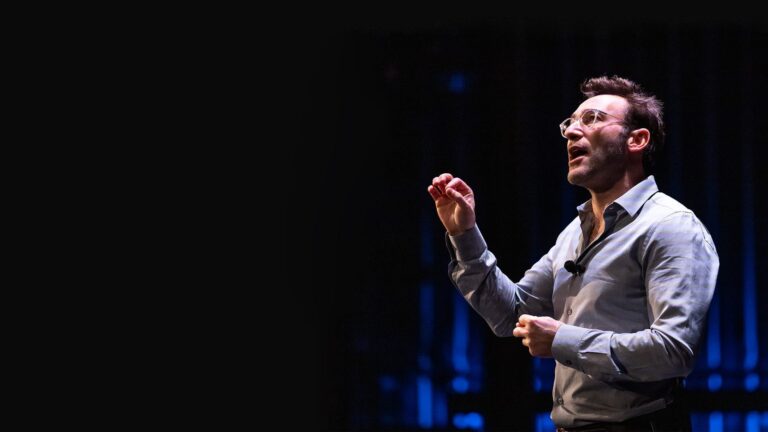
Knowing how to start a presentation is a critical skill when delivering a speech to any audience or any setting, whether it’s a boardroom, an auditorium, a classroom, or even a rehearsal dinner. Not only does a successful start help settle your nerves, but it also builds confidence.
Surprisingly, over 70% of Americans fear public speaking more than death itself, as revealed by a study conducted by the National Institutes of Mental Health . This fear can be traced back to our evolutionary past, says The Harvard Business Review , where being watched triggered a survival instinct to avoid predators. However, with the right techniques and strategies, you can overcome this fear and engage your audience right from the beginning. By implementing effective opening techniques, you can capture attention, establish credibility, and set the tone for a memorable and impactful presentation.

Level Up Your Skills Starting NOW
Unlock a treasure trove of career-boosting tips, from top-notch leadership advice to discovering workplace bliss, at The Optimism Library today.
With the guidance of Simon Sinek , a renowned public speaker with more than a billion views, we’ll share valuable tips on how to start a presentation the right way, instantly engaging your audience and winning them over. So, keep reading and get ready to shine!
And if you’re eager to learn everything about delivering an amazing presentation, including advanced storytelling techniques, practical exercises, and expert PowerPoint advice, don’t miss out on Simon’s bestselling course, The Art of Presenting. Click here to explore it further .
Tip One: Transform your nervousness into excitement
Simon emphasizes the significance of reframing our nervousness as excitement, and he is not alone in this belief. A study published in the Journal of Experimental Psychology demonstrates that shifting our mindset from “feeling anxious” to “feeling excited” can have a positive impact on our outlook, making us feel more optimistic, confident, and in control.
As Simon explains, the physiological symptoms of both emotions are nearly identical. It is our mindset and how we choose to interpret these physiological responses within ourselves that can make all the difference. By embracing the idea that you are excited rather than nervous, you can harness that energy in a positive way and captivate your audience right from the beginning.
A simple technique to employ is to look into the mirror and say aloud, “I’m excited!” This small action can go a long way in helping you start your presentation and get into the flow.
Tip Two: Always Start with WHY
If we had to guess, you’ve probably endured countless presentations that begin with the same old boring stuff. “Today, we’ll be discussing the KPIs…” Or, “Hello, my name is Bob, and I will be presenting a comprehensive overview of the quarterly sales data.”
But let’s break free from the monotony! Instead of following the crowd, let’s explore a more captivating approach to starting a presentation. So, how do you start a presentation in a way that truly engages your audience?
According to Simon, the key is to artfully incorporate your WHY. In his bestselling book, Start with WHY , Simon introduces the concept of the Golden Circle , which consists of three layers: your WHATs, your HOW, and your WHY. While all three are important, Simon emphasizes the significance of the WHY. Your WHY is the driving force behind your HOWs and WHATs. It’s your purpose, cause, or belief that sets you apart. (If you’re interested in discovering your WHY, check out our course here .)
By infusing your presentation with authenticity and purpose, you instantly grab the audience’s attention and create an emotional connection. In fact, one study published by Stanford University has shown that “the top 10% of authentic speakers were considered 1.3 times more trustworthy and 1.3 times more persuasive than the average communicator.”
So, let’s leave the mundane introductions behind and embrace the power of starting with your WHY. It’s time to captivate your audience from the very beginning and make your presentation truly memorable.
Tip Three: How to Choose a First Sentence
According to Simon, there are several effective ways to start your presentation: with a question, a surprising fact, a bold statement, or by telling a story. These strategies instantly capture the audience’s curiosity and motivate them to pay attention, eagerly seeking answers throughout your presentation. So, how do you start a presentation in a way that truly captivates your audience?
Take, for example, author Susan Cain, who begins her TED Talk on the power of introverts with the line, “When I was nine years old, I went off to summer camp for the first time.” By launching into a personal story that illustrates a key point from her talk, she establishes a connection with the audience right from the start, as they can relate to the shared experience of summer camp.
When it comes to storytelling, specificity is key in capturing your audience’s investment in your message. In fact, a study conducted in 2009 revealed that emotionally engaging narratives inspire post-narrative actions. This means that if you can tell a story that resonates with your audience, they will not only remember your presentation better but also be more inclined to act upon your intended message.
So, when considering how to start a presentation, remember the power of a well-crafted question, a surprising fact, a bold statement, or a compelling story. These techniques will help you grab your audience’s attention and set the stage for a memorable and impactful presentation.
Tip Four: How to Start a Presentation the Wrong Way
You’re Using Jargon
To avoid alienating your audience, refrain from using jargon or technical terms that may not be universally understood. The key to effective communication is making your audience feel included and part of the conversation. Therefore, use familiar terms and take the time to explain any unfamiliar ones, ensuring that everyone feels engaged and included in your presentation.
You’re Memorizing Your Material
Memorization can hinder your ability to connect with your audience authentically and make you sound robotic. Instead, focus on deeply understanding the key concepts and ideas you want to convey, allowing for flexibility and natural conversation during your presentation. Studies have shown that being intimately familiar with your material, rather than relying on memorization, better prepares you to speak confidently and effectively.
You’re Relying Too Much on Your Slides
While slides are a common tool in presentations, it’s important not to rely on them as a crutch. Your visuals should support your message, but it’s your responsibility to deliver it effectively. Depending too heavily on slides can lead to failure if technical issues arise or if you forget necessary equipment. Being well-versed in your topic reduces the need to rely on slides to speak on your behalf.
You’re Expecting Perfection
Perfection is unattainable, and it’s important to remember that mistakes can happen to anyone, including yourself. Whether it’s a technical glitch or a momentary lapse, embrace the fact that we are all human and errors are a natural part of the process. As Simon can attest, nobody is immune to making mistakes.
Tip Five: How to Present Your First PowerPoint Slide
Using slides and visual aids can enhance your presentation, as 65% of individuals learn best visually. To make a strong first impression, create a visually appealing slide that provides a clear overview of your topic. Avoid clutter and excessive text, opting for graphics and key points that engage your audience. Remember, knowing how to start a presentation can be daunting, but with the right mindset and preparation, you can succeed.
DO This:
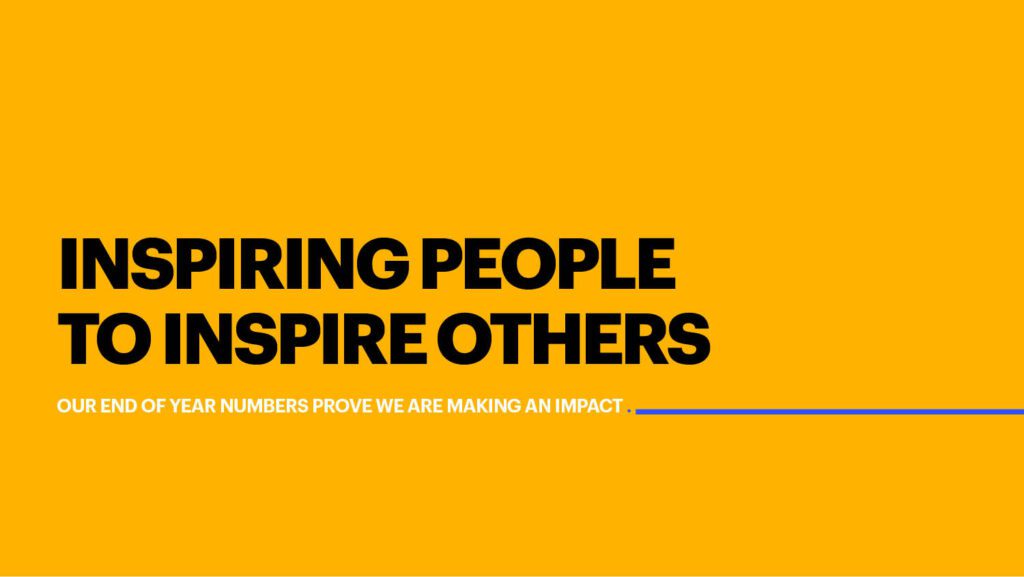
Now It’s Time to Take Action!
If you’re eager to become a master presenter, there’s a whole world of skills and techniques waiting for you to explore. Dive deeper into the art of presenting by enrolling in The Art of Presenting with Simon course. This comprehensive program covers everything from preparation and storytelling to creating impactful slides. Embark on your journey towards delivering unforgettable presentations today!
Good luck on your presentation journey!

More Helpful Advice from The Optimism Company
What Navy SEALs Can Teach You About Team-Building
Learn How AI Is Transforming the Art of Human Connection
3 Essential Ways to Beat Burnout at Work
The One Concept You Need to Know in Today’s Turbulent Times

Unleash Your Infinite Mindset
Quantity: 1 quantity = 1 team of up to 20 participants
Contact sales.
For teams of 20+ contact us
Teams of up to 20
Purchase: $999, bundle & save: $1,198 save $800.
Buy Unleash Your Infinite Mindset and The Art of Building Fiercely Loyal Customers together for only $1,198.
The Art of Creating Fiercely Loyal Customers

We fully agree, so we like to reward curiosity. Use code GETCURIOUS for 20% off your next purchase.
A spark is something quite small and, by itself, not very powerful. But a spark has the ability to ignite. An idea is like a spark; alone it is just a set of words, but it too can ignite. A great idea can inspire others to dream bigger. Let us all work together to ignite something greater than ourselves.
Let us all be a Spark of Optimism.
- Scroll to top

The 10 best presentation openers.
First impressions count. Adopt these techniques to keep your audience rapt from the get-go. Here are the ten best presentation openers.
Some say it’s 15 seconds; others 30. A few generous souls will even allot up to 60 seconds. Whatever the case, this much is indisputable: you’ve got one minute max in which to capture your audience’s attention at the start of your presentation. After that, they’re gone.
Physically they’re still occupying the same space, give or take a fidget, but mentally they’re reliving last night’s Netflix marathon, or pondering whether centaurs really have two rib cages. Miss that window of opportunity – those precious seconds in which all eyes really are on you – and you’ve lost your audience.
The beginning of the story
Way before you fire up PowerPoint, you’re crafting your narrative and what better way to start than at the beginning? We like you, you’re smart.
Every presentation is a story. Or at least it should be. It needs to have a clear beginning, middle, and end. As this article is about the best presentation openers, we’ll focus on the beginning. To start your presentation off correctly, you need to be connecting with your audience by setting the scene. Make it clear you understand their industry, the current climate, and give them a sneak peek of what’s coming.
But how do you connect with your audience in the beginning? Well, it depends on the story that you’re telling, but this article is going to take you through the ten best presentation openers according to Hype Presentations.
10 best presentation openers to start a presentation
1. the statistic .
You don’t want to be splurging all your most important data on your audience at the start – you’ll want to build a crescendo of messaging towards the big reveal later. But a surprising or impressive statistic to start your presentation can help to hook your audience’s attention.
To avoid confused stares, it’s important you seat any statistic in the proper context. Don’t just deliver the number on its own, frame it in a way that demonstrates why it matters to them.
For example, try something like ‘By the time I’ve finished this talk, X people will have been affected by [subject]’ as opposed to ‘[Subject] affects X people annually’.
2. The questi o n
Ah, starting off with a question: an oldie but goodie from the dusty depths of the public speaking toolkit. And there’s a reason it’s been around so long: it works. By addressing your audience directly, you increase engagement.
There are a few ways you can go about opening your presentation with a question. You can use an entirely rhetorical one, to get your audience thinking about and reflecting on your topic. Or you can seek responses to turn your presentation into a two-way conversation.
Starting a presentation with a question helps establish an element of interactivity, and while people might not want to be the first to speak out, you can pick individual audience members and ask them to elaborate after they’ve put their hands up. It’s less of a scary schoolteacher vibe.
3. The opinion
If you want to stand out with your presentation opener, be the black sheep in the flock. There’s currency in being a contrarian, and it’s about more than just shock value. Do you remember the film Dead Poet’s Society, where Robin Williams urges his students to rip out the opening page of their textbooks? That’s what you’ve got to do.
‘As you all know, muscle growth is about progressive overload, clean eating, and smart supplementation.’
‘Well, I’m here to tell you that’s a big fat lie. Forget everything you’ve heard about strength training. If you wanna get swole, here’s what you should do…’
Your audience might not agree with you, but one thing they certainly can’t do is ignore you. Don’t be a contrarian for the sake of it, of course, but if you genuinely have an unconventional approach, don’t be afraid to put it out there from the start.
4. The Value Proposition
Another good way to start your presentation is to jump straight to addressing the audience’s selfish motives. They only care about their own needs and priorities, and the whole reason that they showed up to listen to you is because they want to derive value from your presentation.
You can get them listening closely by acknowledging this fact and letting them know exactly what they’ll get out of it, if they just pay attention for a little longer. Try something like ‘By the end of this talk, you’ll know how to generate more sales through inbound marketing’. Obviously, don’t promise anything that you can’t deliver, as this risks damaging your credibility.
5. The problem solver
For your presentation to be successful, you need to show how you can solve a problem for your audience. So, why not open by describing it?
Really dig into the pain points that the problem causes – amplify how bad the current situation is and why it needs to be solved. Once your audience recognises the breadth and depth of the problem, you’re in a prime position to solve it with the rest of your presentation.
6. The reference
Refer to something your audience will know about, and that is relevant to them. It might be a flashpoint in their industry, or something of wider cultural significance. This provides the opportunity to establish context and set out your points, connecting them to a bigger picture from the start of the presentation, as well as showing you understand their world.
7. The quote
We live in a world of aphorisms, maxims, and Pinterest-shared platitudes. If you’re planning your presentation opener to be a quote, better make it a banger. It doesn’t have to be famous – it just has to be memorable. Your audience has probably received a lifetime supply of canned MLK quotes and can recite Steve Jobs’ Stanford commencement address off by heart. If you’re planning to start with a cliche-free quote, you’re going to need to, um, think outside the box. Ahem.
‘A good speech is like a pencil; it has to have a point.’
That’s good. Thanks Pinterest. To get your audience interacting with you from the outset, put a quote on your first slide and ask them who it’s from. Or reveal the first half of the quote and get them to guess how it ends. Instantly, they’re involved and have gone from being a passive to an active audience.
8. The j o ke
Be wary. A high-pressure sales environment might not be the best place to make jokes. Neither would a report to investors , detailing how you’ve lost all their money. However, in the right situation, starting your presentation with some humour could help you appear more relaxed, confident, relatable, and creative.
If you do start your presentation with a joke, please don’t wait expectantly for the laugh. They might laugh, they might not. Either way, quickly move on and keep the presentation going.
9. The secret
‘Hi. My name is Mark and, at weekends, I like to wear my girlfriend’s lingerie.’
No, not that sort of secret.
‘Hi. My name is Mark and I’d like to share a secret with you. When I started this job, my greatest fear was public speaking.’
Better. Now you’ve revealed a vulnerability, and your audience can empathise with you. If they possess even a sliver of humanity, they should be willing you on after such an admission.
‘Then I learned to conquer my fear of public speaking. Now, the only things that scare me are the Tarantula Wolf Spider and 4% battery.’
We’ve left confessional territory behind now and delved into humour. But, in truth, you can steer your presentation any which way you like from this point. You’ve already piqued your audience’s curiosity. Now you have their attention.
10. The picture
Humans are hardwired to remember faces over names. Memory isn’t a spreadsheet – it’s a rich visual tapestry. Start your presentation with a strong image and it’ll do the hard work for you.
A powerful image will evoke equally powerful emotions: awe; surprise; disgust. Okay, so you probably want to avoid grossing out your audience, but don’t be afraid to make them feel. Whether it’s a cute puppy dog or an iconic war photograph, a powerful picture will sear itself into their consciousness better than a dozen text-heavy slides ever could.
The storytelling loop
Forget about your interests and life experience, it’s all about your audience. How can you tailor your presentation opener to appeal to your audience? Think about their industry and interests. A room of coders will respond better to a joke about Linux than a room of event planners. A group of art students will find a Picasso anecdote more relatable than one about Socrates.
Once you’ve settled upon one of these presentation openers, it’s a good idea to return to it when closing your presentation. This completes the storytelling loop and leaves your take-home message fixed firmly in mind. Conclude that confession. Finish that quote. Captivate that crowd.
However you start your presentation, make it memorable. Make it explosive. Make it count. After that, the hard work’s done: you’ve got your audience’s attention and they’re keen to hear what else you’ve got to say.
Recent Posts
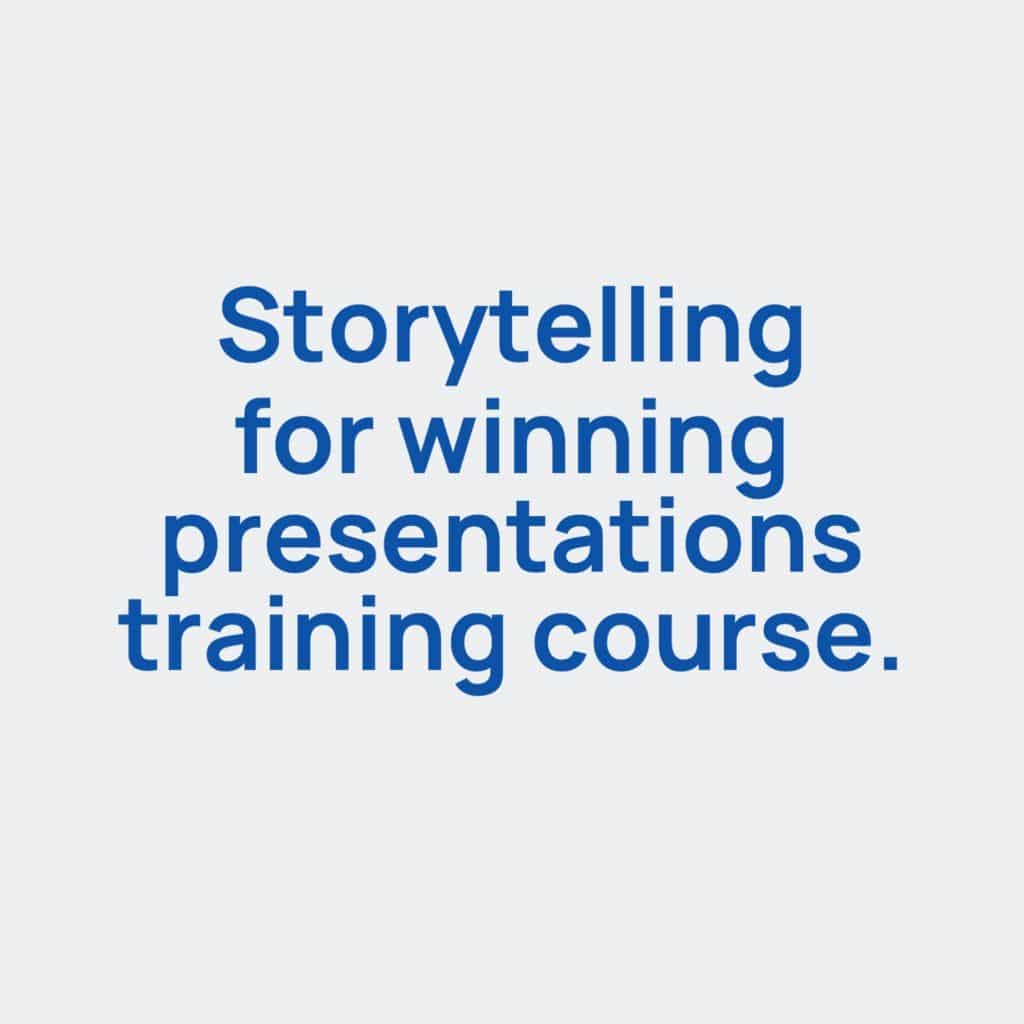
- Posted by hypepresentations
Storytelling for winning presentations training course.
Discover how to transform your presentations with the “Storytelling for Winning Presentations”...
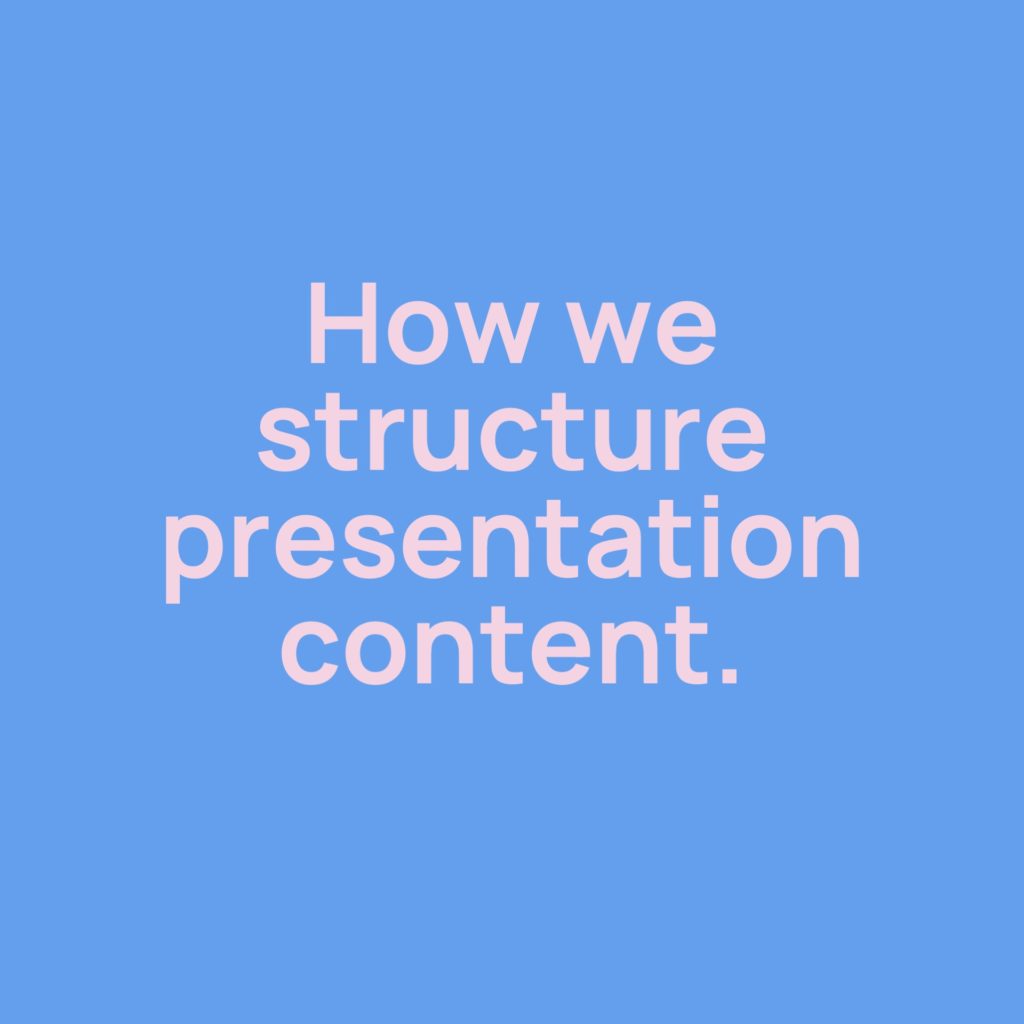
How we structure presentation content.
Your content is the foundation of your presentation, and how you create...
- Alternatives
How to Start a Presentation | 13 Golden Presentation Openers to Wow Audience in 2024
Lawrence Haywood • 05 April, 2024 • 17 min read
What are the perfect presentation openers? Did you know this? Knowing how to start a presentation is knowing how to present .
No matter how brief, the first moments of your presentation are a huge deal. They have a massive impact not only on what follows but also on whether or not your audience follows along with you.
Sure, it's tricky, it's nerve-wracking, and it's crucial to nail down. But , with these 13 ways to start a presentation and appealing presentation starting words, you can captivate any audience from your very first sentence.
| The slide that is used to introduce a topic and set the tone for the presentation is called the | Title Slide |
| What is the role of the audience in an oral presentation? | Receive and feedback |
Table of Contents
- Ask a Question
- Introduce as a Person
- Tell a Story
- Give a Fact
- Be Super Visual
- Use a Quote
- Make 'em Laugh
- Share expectations
- Poll your audience
- Live polls live thoughts
- Two Truths and A Lie
- Flying challenges
- Super competitive Quiz Games
Frequently Asked Questions
More tips with ahaslides.
- How to write a presentation
- Presentation Description

Start in seconds.
Get free templates for your next interactive presentation. Sign up for free and take what you want from the template library!
1. Ask a Question
So, how to start a speech presentation? Let me ask you this : how many times have you opened a presentation with a question?
Furthermore, have you ever wondered why an immediate question might be a great way to start a presentation?
Well, let me answer that one. Questions are interactive , and interactive presentation is what audiences bored to death of one-way monologues crave the most.
Robert Kennedy III , the international keynote speaker, lists four types of questions to use right at the beginning of your presentation:
| 1. | ? |
| 2. (To be shown alongside something else) | |
| 3. | ? - |
| 4. | - |
While these questions might be engaging, they're not really questions, are they? You don't ask them in the hope that your audience will stand up, one-by-one, and actually answer them.
There's only one thing better than a rhetorical question like this: a question that your audience truly answers , live, right in the moment.
There's a free tool for that...
AhaSlides lets you start your presentation with a question slide, then gather actual answers and opinions from your audience (via their phones) in real-time. These questions can be word clouds , open-ended questions , rating scales , live quizzes , and so much more.
Not only does opening in this way get your audience immediately paying attention in starting a presentation, it also covers some of the other tips mentioned in this article. Including ...
- Getting factual - Your audience's responses are the facts.
- Making it visual - Their responses are presented in a graph, scale or word cloud.
- Being super relatable - The audience is fully involved in your presentation, both from the outside and the inside.

Create an Active Audience.
Click below to make a fully interactive presentation for free on AhaSlides.
Kich off the right way
2. Introduce Yourself as a Person, not a Presenter
How to start a presentation about yourself? What things to include in an about me presentation? Some great, all-encompassing advice on how to introduce yourself in a presentation comes from Conor Neill , serial entrepreneur and president of Vistage Spain.
He likens starting a presentation to meeting someone new at a bar. He's not talking about quaffing 5 pints beforehand to establish Dutch courage; more like introducing yourself in a way that feels friendly, natural and most of all, personal .
- Introduce team member
- How to introduce yourself
Imagine this : You're in a bar where someone piqued your interest. After a few furtive glances, you build up the courage and approach them with this:
Hi, I’m Gary, I’ve been an economic biologist for 40 years and I want to talk to you about the microeconomics of ants . - Your introduction slide about yourself ! And you're going home alone tonight.
No matter how attractive your topic is, no one wants to hear the far-too-commonly-used ' name, title, topic' procession, as it offers nothing personal to latch onto.
Imagine this : You're in the same bar a week later, and someone else has piqued your interest. Let's try this again, you think, and tonight you go with this:
Oh hey, I’m Gary, I think we know someone in common... - You , establishing a connection .
This time, you've decided to treat your listener as a friend to be made rather than as a passive audience. You've introduced yourself in a personal way that has made a connection and has opened the door to intrigue.
When it comes to introduction ideas for presentation, we recommend checking out the full 'How to start a presentation' speech by Conor Neill below. Sure, it’s from 2012, and he makes some dust-coated references to Blackberries, but his advice is timeless and incredibly helpful. It’s a fun watch; he’s entertaining, and he knows what he’s talking about.
3. Tell a Story - How to Start a Speech Off
How to start an introduction for a presentation? If you did watch the full video above, you'd know that Conor Neill's absolute favourite tip for starting a presentation is this: telling a story .
Think about how this magical sentence makes you feel:
Once upon a time...
For pretty much every child that hears these 4 words, this is an instant attention grabber . Even as a man in his 30s, this opener still makes me wonder what might follow.
Just on the off-chance that the audience for your presentation isn't a room of 4-year-olds, don't worry - there are grown-up versions of 'once upon a time' .
And they all involve people. Just like these:
- "The other day, I met someone who completely changed my thinking..."
- "There's a person at my company who once told me...."
- "I'll never forget this customer we had 2 years ago..."
Remember this 👉 Good stories are about people ; they're not about things. They're not about products or companies or revenue; they're about the lives, the achievements, the struggles and the sacrifices of the people behind the things.

Aside from conjuring an immediate surge of interest by humanising your topic, there are several other benefits to starting a presentation with a story:
- Stories make YOU more relatable - Just like in tip #2 , stories can make you, the presenter, seem more personal. Your experiences with others speak far louder to audiences than stale introductions of your topic.
- They give you a central theme - Though stories are a great way to start a presentation, they also help to keep the entire thing cohesive. Calling back to your initial story at later points in your presentation not only helps to solidify your information in the real world but it also keeps the audience engaged through the narrative.
- They're jargon busters - Ever heard a children's story that starts with ' once upon a time, Prince Charming drilled down on the actionability principle inherent in agile methodology '? A good, natural story has inherent simplicity that any audience can understand.
💡 Going virtual with your presentation? Check out seven tips on how to make it seamless !
4. Get Factual
There are more stars in the universe than there are grains of sand on earth.
Did your mind just explode with questions, thoughts and theories? That's how to start a presentation, as the best way for the powerpoint Presentation Introduction!
Using a fact as an opener to a presentation is an instant attention grabber.
Naturally, the more shocking the fact is, the more your audience is drawn to it. While it's tempting to go for pure shock factor, facts need to have some mutual connection with the topic of your presentation. They need to offer an easy segue into the body of your material.
Here's an example I recently used at an online event ran from Singapore 👇 "In the U.S alone, around 1 billion trees' worth of paper are thrown away yearly."
The speech I was giving was about our software, AhaSlides, which provides ways to make presentations and quizzes interactive without using stacks of paper.
Though that's not the biggest selling point of AhaSlides, it was super easy for me to connect that shocking statistic and what our software offers. From there, segueing into the bulk of the topic was a breeze.
A quote gives the audience something tangible , memorable and understandable to chew on, all while you proceed into a presentation that will likely be a series of more abstract ideas.
5. Make it Visual - How to Introduce a Topic in a Presentation
There's a reason I chose the GIF above: it's a mix between a fact and an engaging visual .
While facts grab attention through words, visuals achieve the same thing by appealing to a different part of the brain. A more easily stimulated part of the brain.
Facts and visuals usually go hand-in-hand regarding how to start a presentation. Check out these facts about visuals:
- Using images endears you to the 65% of people who are visual learners. ( Lucidpress )
- Image-based content gets 94% more views than text-based content ( QuickSprout )
- Presentations with visuals are 43% more persuasive ( Venngage )
It's the last stat here that has the most significant implications for you.
Think about this 👇 I could spend all day telling you, through voice and text, about the impact of plastic on our oceans. You may not listen, but the chances are that you will be more convinced by a single image:

That's because images, art in particular, are way better at connecting to your emotions than I am. And connecting to emotions, whether through introductions, stories, facts, quotes or images, gives a presentation its persuasive power .
On a more practical level, visuals also help make potentially complex data super clear. While it's not a great idea to start a presentation with a graph that risks overwhelming the audience with data, visual presentation material like this can certainly be your best friend later on.
6. Use a Solitary Quote - How to Start off a Presentation Speech
Like a fact, a single quote might be the best way to start a presentation as it can add a vast deal of credibility to your point.
Unlike a fact, however, it's the source of the quote that often carries a lot of the gravitas.
The thing is, literally anything anyone says can be considered a quote. Stick some quotation marks around it and...
...you've got yourself a quote. Lawrence Haywood - 2021

Starting a presentation with a quote is pretty great. What you want is a quote that starts a presentation with a bang. To do that, it has to check these boxes:
- Thought-provoking : Something that gets the audience's brains working the second they hear it.
- Punchy : Something 1 or 2 sentences long and short sentences.
- Self-explanatory : Something that requires no further input from you to aid understanding.
- Relevant : Something that helps you segue into your topic.
For mega-engagement, I've found it's sometimes a good idea to go with a controversial quote .
I'm not talking about something completely heinous that gets you thrown out of the conference, just something that doesn't encourage a unilateral 'nod and move on' response from your audience. The best opening words for presentations might come from controversial opinions.
Check this example 👇 "When I was young, I thought that money was the most important thing in life. Now that I am old, I know that it is" - Oscar Wilde.
This certainly isn't a quote that elicits total agreement. Its controversial nature offers immediate attention, a great talking point and even a way to encourage audience participation via a 'how much do you agree?' question ( like in tip #1 ).
7. Make it Humorous - How to make a Boring Presentation Funny?
One more thing a quote can offer you is the chance to get people laughing .
How many times have you, yourself, been an unwilling audience member in your 7th presentation of the day, needing some reason to smile as the presenter plunges you head-first into the 42 problems of stopgap solution bring ?
Humour takes your presentation one step closer to a show and one step further from a funeral procession.
Aside from being a great stimulator, a bit of comedy can also give you these benefits:
- To melt the tension - For you, primarily. Kicking off your presentation with a laugh or even a chuckle can do wonders for your confidence.
- To form a bond with the audience - The very nature of humour is that it's personal. It's not business. It's not data. It's human, and it's endearing.
- To make it memorable - Laughter has been proven to increase short-term memory. If you want your audience to remember your key takeaways: make 'em laugh.
Not a comedian? Not a problem. Check out these tips on how to start a presentation with humour 👇
- Use a funny quote - You don't have to be funny if you quote someone who is.
- Don't crowbar it - If you're finding it difficult to think of a funny way to start your presentation, just leave it. Forced humour is the absolute worst.
- Flip the script - I mentioned in tip #1 to keep introductions away from the over-flogged 'name, title, topic' formula, but the 'name, title, pun' formula can funnily break the mould. Check out below what I mean...
My name is (name) , I am a (title) and (pun) .
And here it is in action:
My name is Chris, I'm an astronomer and lately my whole career has been looking up. You, getting off on the right foot
8. Share expectations - Best Way to Open a Speech
People have different expectations and background knowledge when they attend your presentations. Knowing their objectives can provide a value that you can use to adjust your presenting style. Adapting to people’s needs and meeting the expectations of everyone can result in a successful presentation for all involved.
You can do this by holding a small Q&A session on AhaSlides . When you start your presentation, invite attendees to post the questions they are most curious about. You can use the Q and A slide pictured below.
Some questions that I am happy to be asked:
9. Poll your audience - Different Way to Present a Presentation
This is another easy way to boost the excitement levels and creativity of everyone in the room! As the host, split the audience into pairs or trios, give them a topic and then ask teams to make a list of possible responses. Then have each team submit their answers as fast as possible to a Word Cloud or Open-Ended question panel on AhaSlides . The results will show up live in your slide show!
The topic of the game does not need to be the topic of the presentation. It can be about anything fun but provokes a lighthearted debate and energises everyone.
Some suggested topics are:
- Three ways to name a group of animals (Eg: a cupboard of pandas, etc.)
- Best characters in the TV show Riverdale
- Five alternative ways to use a pen
Get free templates to wow your audience with a great introduction in your next presentation. Sign up for free and take what you want from the template library!
10. Live polls, Live thoughts
If you’re worried that the above games have too much “typing”, then an icebreaker with a live poll will capture everyone’s attention but take much less effort. The questions can be funny and silly, industry-related, and debate-prompting, and are designed to get your audience networking.
Another idea is to start with easy-going, essential questions and move on to trickier ones. In this way, you lead the audience toward the topic of your presentation and thereafter, you can build up your presentation based on these questions.
Don’t forget to organise the game on an online platform like AhaSlides . By doing this, responses can be displayed live on the screen; everyone can see how many people think like them!
🎊 Tips: Use the idea board to organise your options better!

11. Two Truths and A Lie - Another Way of 'Get to know Me Presentation'
Spin more fun to your session! This is a classic icebreaker game with a straightforward rule. You have to share three facts, only two of which are true, and the audience must guess which one is the lie. The statements can be about you or the audience; however, if attendees have never met before, you should give out prompts about yourself.
Collect as many sets of statements as possible, then create an online multiple-choice poll for each one. On D-Day, present them and let everyone vote on the lie. Tip: Remember to hide the correct answer till the end!
You can get ideas for this game here .
Or, check out the 'real' Get to Know me Games
12. Flying challenges
Icebreakers mostly center around you – the presenter – handing out questions and requests to the audience, so why not mix it up and have them take turns challenging each other? This game is a physical task that gets people moving. It’s a beautiful way to rock the whole room and get people interacting.
Give out paper and pens to the audience and ask them to think of challenges for the others before crumpling them into balls. Then, count down from three and throw them into the air! Ask people to grab the one nearest them and invite them to read the challenges.
Everyone loves winning, so you can’t imagine how challenging this can be! The audience will be even more motivated if you put up a prize for the most exciting questions!
13. Super competitive quiz games
How to make a presentation fun? Nothing can beat games at hyping people up. Knowing this, you should have your audience jump straight into a fun quiz at the beginning of your presentation. Wait and see how energised and hyped up they become!
The best thing: This is not limited only to entertaining or easy-going presentations, but also more “serious” formal and scientific ones. With several topic-focused questions, attendees can get a clearer insight into what ideas you are about to bring them while becoming more familiar with you.
If you are successful, the preconception that a presentation must be painstakingly nerve-wracking disappears almost immediately. All that is left is pure excitement and a crowd eager for more information.
Need more interactive presentation ideas ? AhaSlides got you covered!
Why is it Important to Start a Presentation Effectively?
Starting a presentation effectively is crucial because it sets the tone for the entire presentation and can capture the audience's attention and interest. If you fail to engage your audience at the beginning, they may quickly lose interest, be bored and tune out, making it difficult to get the message across effectively.
Unique ways to start a presentation?
A few ways to make it unique include Telling a Story, Starting with a Surprising Statistic, Using a Prop, Beginning with a Quote or Starting with a Provocative Question!
Three keys to a Successful Presentation
Engaging Opener, Inspiring Stories with a Clear Call to Action
Starting lines of presentation?
Good morning/afternoon everyone, welcome to my presentation Let me start by saying a few words about myself. As you can see, our main topic for today is...... This talk is designed to ...
When a quotation is used in a presentation you should…
Cite every source clearly, during speaking, in handouts to participants and also on the slides.
Bonus Download! Free Presentation Template
Make it interactive

Lawrence Haywood
Former ESL teacher and quiz master converted to the wild slide. Now a content creator, traveller, musician and big time slider preaching the good word of interactivity.
Tips to Engage with Polls & Trivia
More from AhaSlides
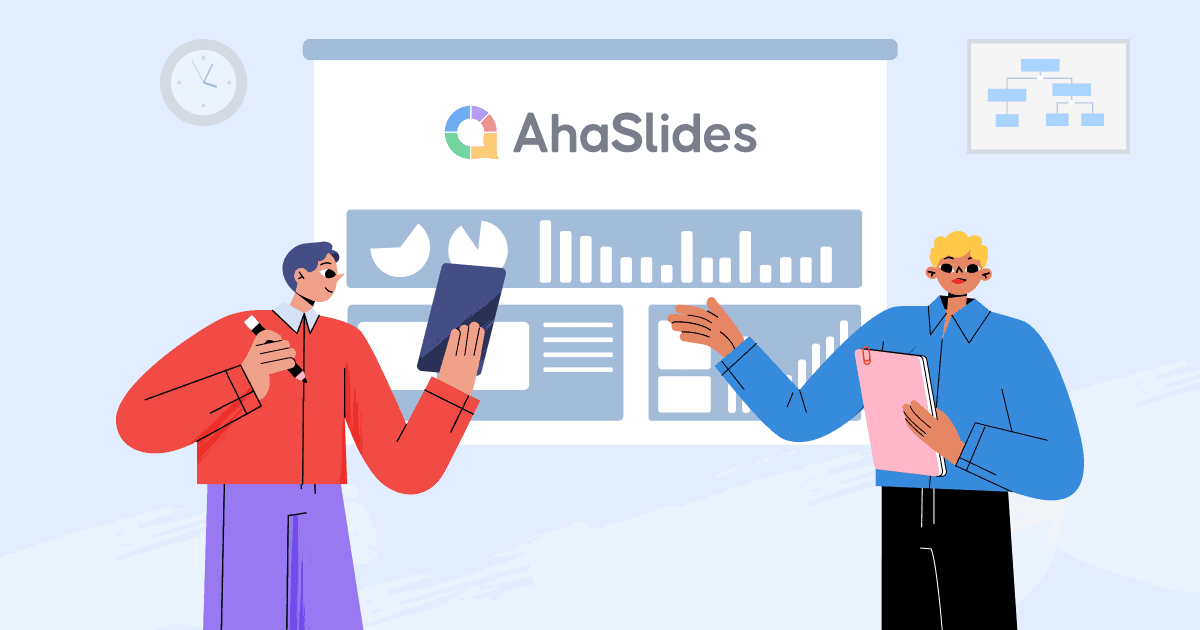
How to Open and Close a Presentation in 8 Memorable Ways

What makes an exceptional presentation? Obviously, it needs to provide plenty of data to support the presenter’s primary objective. But, believe it or not, the heart of a presentation— the gist, the meat, the essence of it— isn’t what makes audiences sit up and take notice.
It doesn’t matter how flashy or informative a presentation (even one designed with a PowerPoint alternative ) might be. It’s a strong opening and closing that will make an audience care. Without these key elements— and slides to represent each— all the research and preparation put into a presentation are for naught. An effective presentation will start out strong and end on a powerful note.
Attracting audience members’ attention from the beginning of your presentation is vital if there’s any hope of getting them to care about what you have to say. Once they’ve tuned you out, it’s all over. Therefore, make a bold statement, intrigue them and stimulate their curiosity of what will come next.
According to Darlene Price , president of Well Said Inc., and author of, “Well Said! Presentations and Conversations That Get Results,” when we speak, we only have about 60 seconds to capture an audience's attention, establish our credibility, familiarize the audience to our topic and motivate it to listen.
“You need to put the art in the start — the most important part of the work,” Price told Business Insider.
At the same time, the end of a presentation is the best chance to leave a lasting impression on an audience. Don’t just describe your final point and then let your presentation trail off, leaving audiences to guess when you’re done. A powerful presentation ending will include calls to action, visions of the future and words to live by.
Do you have plenty of content and professionally-designed slides for your presentation, but need some help opening and closing with a bang? Check out these eight memorable ways to open and close a presentation.
1. Start with a, “Thank you,” instead of ending with one.
Instead of ending your presentation with a thank you, try starting with one. By welcoming your audience and thanking it for attending your presentation, for giving you the opportunity to speak or make a pitch to it, you start the whole thing off with a positive first impression.
This step of public speaking not only shows your sincerity, but it also establishes a sense of respect, trust and community with your audience. Plus, by showing your appreciation in the beginning, you leave yourself room to end with a strong call to action.
2. Hook your audience with a bold statement.
Get your audience on board with listening by making a bold statement to hook its attention. A confident assertion signals confidence and peaks the audience’s interest, but don’t make a statement that is just crazy or serves no other purpose than providing shock value.
Whatever the statement, the rest of your presentation has to back it up. Examples of strong hooks include short, yet surprising or motivational stories, thought-provoking analogies or metaphors, shocking statistics related to the presentation topic or even unique yet inspiring quotes by well-known figures from the past or present.
3. Transition between presentation points.
It’s easy for audience members to lose focus in between stages of even the most titillating presentations. Using strong linking and transitional phrases help bring them back around. These statements are the glue that holds a presentation together.
Strategic transitions will help an audience move from one idea to the next. To bridge the gap between a hook and the rest of the presentation, try asking, for example, open-ended and rhetorical questions that push the audience to ponder about what is coming next.
Make eye contact with your audience members and make sure they are still engaged with the information you’re presenting. Carefully-chosen transitions are powerful ways to not only introduce the next segment, but also pull in an audience’s attention all over again.
4. Tell a personal story.
Telling a brief, personal story early in a presentation is an effective way to connect with an audience . When people hear the speaker tell his or her own story, they tend to pay attention.
Plus, telling a 60- to 90-second narrative shows the audience you’re invested in the topic and opens an opportunity to show you’re passionate about the information you’re presenting. If you don’t have any personal experience with the topic, you can substitute a historic story, a fable or an anecdote, instead.
Be sure to follow a story arc, including a main character, a challenge or obstacle relating to the presentation topic, a tale of how that challenge was overcome and what lessons were learned by the protagonist that can also be applied to the audience.
5. Show the audience how it benefits.
Why should the audience care? You’ve grabbed its attention with a hook, and you’ve transitioned to a personal story to which it can relate. Now you want to engage audience members with how the advice or plan presented will benefit them, their business, their loved ones or their financial stability.
Don’t assume the audience already knows. This is also an optimal opportunity to show the audience, not simply stop with telling it. Using a sense of optimism, paint a vivid picture of the future benefits with descriptive and emotional words. Once the audience envisions the positive outcome, it will start to believe in the possibility.
6. Summarize key takeaways.
After you’ve presented the primary content, it’s important to summarize the presentation’s key takeaways before transitioning to a strong end. Let the audience know you’re starting to wrap things up, and make sure it’s on board with what it should take away from the presentation, using simple, straightforward language.
Often, savvy presenters will break down their content to three takeaways and summarize those, but others will round off their message by referencing back to the opening hook. Doing so not only summarizes the presentation, but also completes the circle of the topic, connecting back to the start.
If a question was posed in the opening, it can be answered in the takeaway. It can also be a prime opportunity to explain the moral of a story told earlier in the presentation.
7. End with an ask.
Any effective presentation will feature a call-to-action toward the end. What was your purpose for giving the presentation, and what do you want the audience to do after receiving your message?
Again, don’t assume the audience automatically knows the desired next step, and don’t use overly flowery language that leaves any room for imagination. Be clear and concise. The clearer and more specific the call-to-action, the more people will take the advice.
8. Finish with a clincher.
Many speakers will end their presentations with the call to action. But we also like to finish everything off with a clincher— one last story, compelling statistic or inspirational quote that serves as the cherry on top of an ice cream presentation.
Don’t take this opportunity to summarize the previous content; another rehashing will just bore both the speaker and the audience. Instead, end the presentation with humor or inspiration. Find a relative and memorable yet unique quotation or story from master storytellers like Mark Twain or Steve Jobs, presenters who often left audiences with ideas to ponder long after they parted company.
Including a statement so profound that it later turns into a soundbite or a meme can extend the presentation’s life far beyond its scheduled time frame. The clincher is also an effective ending slide to a visual presentation.
What elements do you most use when developing effective presentation openings and closings?

Samantha Pratt Lile
Samantha is an independent journalist, editor, blogger and content manager. Examples of her published work can be found at sites including the Huffington Post, Thrive Global, and Buzzfeed.
Recommended Articles
How great presenters create presentations in less than an hour, the key components of a sales deck , 7 steps to improve your next sales deck, 10 things your audience hates about your presentation (and how to fix it).
HOUSTON JULY 25-26 PUBLIC SPEAKING CLASS IS ALMOST FULL! RESERVE YOUR SPOT NOW

- Public Speaking Classes
- Corporate Presentation Training
- Online Public Speaking Course
- Northeast Region
- Midwest Region
- Southeast Region
- Central Region
- Western Region
- Presentation Skills
- 101 Public Speaking Tips
- Fear of Public Speaking
7 Dynamic Ways to Start a Presentation [With Examples]

Of course, we’ve all been there as a speaker. First, we design a powerful presentation. Then, we nervously walk out onto a stage or into the front of the room. The audience stares with skepticism written all over their faces. This stoic crowd has no patience for speakers who waste their time. And their demeanor is showing that fact right now. In a timid voice, we start with a simple, “Good morning.” We get no response from the audience — no warm welcome at all. As a result, our nervousness increases dramatically.
The good news is that your speech doesn’t have to start this way. Your first words will create first impressions.
So, in this session, I’m going to give you the best way to start a successful presentation so you can win over the audience members. Below are a few of my favorite ways to start a speech that will help you capture the attention of your audience and get even the most stoic crowd to want more from you.
Here is the list of effective presentation openers.
7 Dynamic Ways to Start Your Next Presentation.
- Give Your Presentation Summary and Conclusion First.
- Start the Presentation with a Compelling Story.
- Use a Startling Statistic to Start a Presentation.
- A Funny or Motivational Quote or One-Liner.
- Start with an Opinion Asking Question.
- Make a Powerful or Shocking Statement to Start a Speech.
- Arouse Curiosity with a Hook.
- A Bonus Way to Start a Presentation Is to Add Showmanship.
How to Start a Presentation and Help Your Audience Remember Your Content.
(1) give a summary and conclusion at the beginning of a presentation..
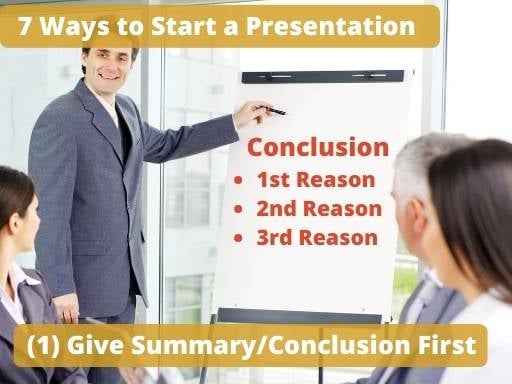
As a speaker, you have a lot going against you. The biggest challenge is that most of the people who are in your audience would really rather be somewhere else. So starting with the conclusion gives them a reason to tune in and pay attention to the content.
TV shows and movies do this a lot. The first scene in Titanic is 90-year-old Rose wheeling onto the salvage ship. Immediately, she asked the Captain to see her painting. “Wasn’t I a dish?”
We all know the story of Titanic, but by starting 70 years into the future, we already know that somehow, Rose was going to survive the tragedy. We pay attention because we want to see how she did it.
You probably also recall Netflix series that show a quick introduction and then a flashback to an earlier time.
You can create the same effect in your presentation introduction by making your title a conclusion that you want the audience to draw. Then, lay out each main point that will help them come to that conclusion.
For instance, “My topic today is Five Ways to Get Your Executives to Increase Your Department Budget, and the items we will cover are…” Of course, this technique works best when your title is a result that your audience really wants.
This is an easy way to start a presentation. You can use a single PowerPoint presentation slide as a visual aid to capture the audience’s attention right away! (FYI, you can also use this technique at the end of a presentation.)
More details about this are in Start with a Great Title .
(2) Start the Presentation with a Compelling Story
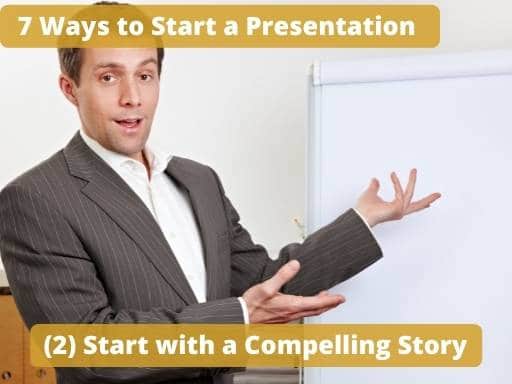
I taught a private presentation class for Mitsubishi once. And I could tell walking into the room that this was going to be a tough crowd. The culture of the predominately Japanese company is fairly quiet and conservative. Most often, when I introduce myself to class members, people are warm and friendly. Since I’m a guest in their office, most try to make me feel at home.
By the way, the Mitsubishi organizer did this here as well. However, as the participants came into the room, each walked in without saying a word. Each sat down, opened their laptops, and quietly began typing on their keyboards.
I did my best to try to get them to open up. But very few of them were laughing at my jokes or smiling at me as I asked them questions. (Tough crowd.)
So, when I started the class, I knew I needed something that would help the group relate to me. I decided to go into a fairly detailed version of an experience where I totally bombed a speech. I added a lot of self-deprecating humor to the story. Afterward, the mood in the room lightened quite a bit. It was an easy way to get the audience to feel more at ease and become more relatable to them.
Stories are easy additions to any speech. For instance, if you are giving a project report, you can start with a memorable event that occurred on the project since the last meeting. Or, if you are giving a financial report where profit is up, just give a great example of something that caused profit to increase.
(3) Or You Could Use a Startling Statistic to Start a Presentation.
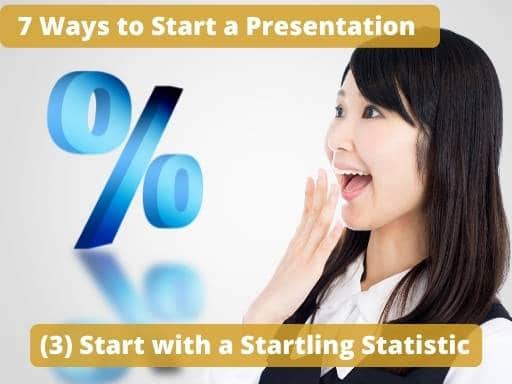
By doing a little research, you can often find a good (and or startling) statistic that can capture attention quickly. You can also create a good introduction by phrasing the statistic as a provocative statement.
For instance, let’s say you are giving a financial presentation where revenue for your company was up 2.5% last quarter. You might look up the statistics for your industry as a whole in the same quarter. Then, you can start your speech with that data. “The electronics industry as a whole was up 3.4% last quarter. However, our company underperformed the industry with only a 2.5% increase in revenue.”
The easiest way to find statistics about your topic is to just do a Google search [Your Topic} followed by the word “statistic”.
Here Are a Few Examples of Using Google to Get Shocking Statistics.
I’ll give some examples. I just did a Google search for “Popular Ted Talks” and came up with an article about the Top 25 Most Shared Ted Talk videos . I just pasted the names of the talks into Google with the word “statistic” added and this is what I came up with.
- Does School Kill Creativity? According to the Adobe® State of Create global benchmark study , 8 in 10 people feel that unlocking creativity is critical to economic growth and more than half of those surveyed feel that creativity is being stifled by their education systems.
- Your Body Language May Shape Who You Are – We receive 82% of information from what we see, 11% from what we hear, and only 7% by all the other senses combined. ( The Body Language Info-graphic .)
- How Great Leaders Inspire Action – 84% of organizations anticipate a shortfall in leaders within the next five years. ( 13 Shocking Leadership Development Statistics .)
So, it is really easy to create compelling statistics to get your audience to think differently about your topic just as you begin to speak.
Bonus Tip: Combine More than One of these Intros for Even More Impact.
You can combine the last two tips for even more impact. Place a statistic along with a story of how you found the statistic at the beginning of your presentation. This is a great way to start your presentation. “I remember watching Jerry Seinfeld do a stand-up bit. He mentioned that the fear of public speaking was the number one fear in America. Then he looked down the list and saw that the fear of death was number five. So, you are five times more likely to rather be in the casket than up giving the eulogy at a funeral.”
The key to each of these first tips is that they increase the retention of information for your audience.
For instance, using the Summary technique, you give your audience an introduction with your presentation topic and key points. Then as you go through each point, they hear each one again. Finally, you summarize the points one more time at the end of your presentation. The audience is now more likely to remember your important points. because of this subtle repetition.
A good story will also increase retention. Stories have a way of creating visual images in the mind of the audience that is more memorable than just facts alone. A startling statistic gets the audience to think, “Is that really true?” so they pay attention more.
Quick Presentation Starters to Capture Attention
(4) a funny or motivational quote or one-liner..
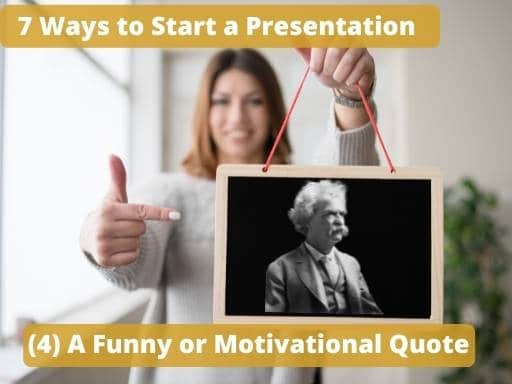
“There are two types of speakers: Those who get nervous and those who are liars.” — Mark Twain
A powerful quote is an effective way to make a positive first impression. It also adds a little humor. You can find quotes like this for your presentations as well. Just like with statistics, you can Google your topic with the word “quotes” to get ideas.
- Does School Kill Creativity? – “Creativity is the greatest expression of liberty.” — Bryant H. McGill
- Your Body Language May Shape Who You Are. – “Language is a more recent technology. Your body language, your eyes, your energy will come through to your audience before you even start speaking.” — Peter Guber
- How Great Leaders Inspire Action. – “A leader is the one, who knows the way, goes the way and show the way” — John Maxwell
Bonus Tip: Reference a quote, and then add your own take to the quote.
Walt Disney once said, “If you can dream it, you can do it.” But have you ever thought to realize that every single invention ever created by man was once just an idea born from someone’s need?
(5) Start with an Opinion Asking Question.
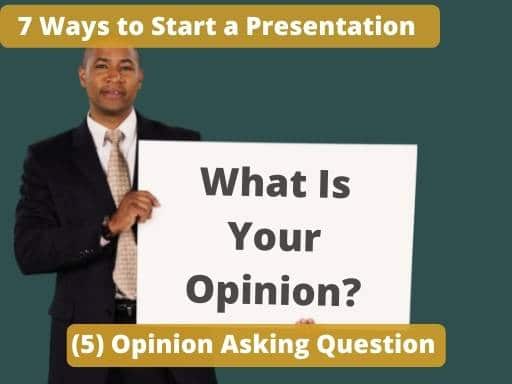
“In a perfect world, if your team was able to present their ideas to your customers more effectively, what would they be doing that they are not doing now?”
This technique is more challenging for a presenter. You have to be able to take whatever your audience gives you and design a killer presentation on the fly. However, if you have done good research before the meeting, you shouldn’t be surprised by the answers you get.
Keep in mind that only the best presenters use this technique. So, when you add open-ended questions to your speech, you will increase your stature as a speaker as well.
By the way, the question should be open-ended, meaning that the audience is giving you their opinions. Rhetorical questions and show of hands questions can backfire. Your audience may think you are trying to manipulate them. So, the important thing to remember is to ask a question that asks for the opinion of the audience members. That way, as they answer, everyone can be correct..
(6) Make a Powerful or Shocking Statement to Start a Speech.
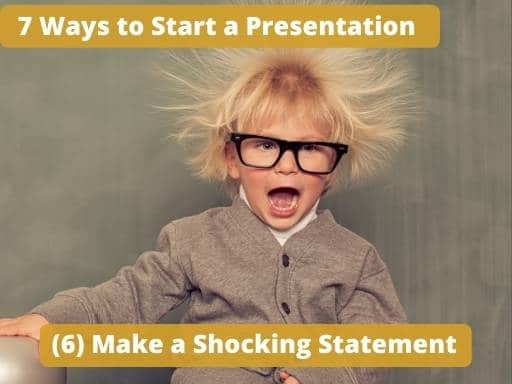
I will then follow this statement with a list of different tips that people try that don’t work really well. (Things like picturing your audience naked.)
The funny thing is that many of the people in the room will question the truthfulness of the statement the first time I say it. It is a bold claim. They don’t confront me, though. However, when I look around the room, I can see the distrust on their faces.
However, as I begin to list the crazy tips one by one, they begin to realize the truthfulness of the statement. Internally, the checklist sounds like this…
- To reduce nervousness, you should pretend your audience is naked. (Man, he’s right. I tried that. It doesn’t work.)
- You should memorize your speech word-for-word. Actually, if you lose your place when reciting the speech, you just get more nervous. (That one is true too.)
- You should practice in front of a mirror or record yourself speaking. Actually, you are your own worst critic. You will nitpick every little thing that you do wrong. (Yup, I’ve done that one too. Wow, maybe he’s right. Those things don’t work at all.)
Another shocking statement I use is to foreshadow a future behavior in the speech. When I lead team activities, I often have them play a game to divide into teams. So, I might start the presentation with, “In less than 15 minutes, some of you chivalrous men who opened a door for a young lady when she came into the room will actually be chicken-winging that woman to take something from her.” Of course, when something like that actually happens, everyone erupts in laughter.
(7) Arouse Curiosity with a Hook.
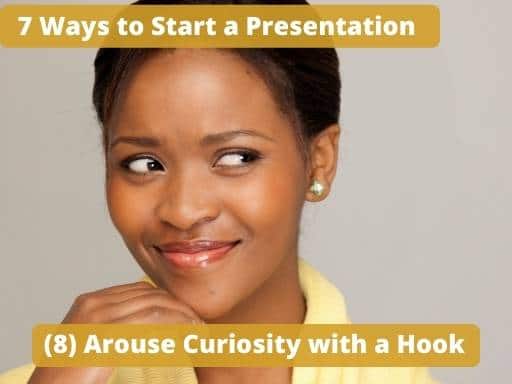
Talk radio, television news, and reality TV shows do this brilliantly.
I remember years ago watching season one of Survivor. The season winner was an eccentric guy named Richard Hatch, who was a good fisherman, so he fed the group. However, he also did things to keep the other contestants a little off their game. At the start of one of the episodes, Richard was walking along the beach buck-naked with his bottom blurred out by the producers.
I remember doing a double-take when the image came on the screen. (There are some things that you just can’t unsee.) I didn’t particularly ever want to see Hatch’s bare bum ever again. However, I had an eager want to find how the heck this happened.
Talk radio guys do this by saying, “At the bottom of the hour, we’re going to…” The technique is like a cliffhanger. Everyone wants to know how the story will end. Will Ross marry Emily, or will Rachel stop the wedding? Will Jon Snow die of his stab wounds? Ken Jennings has won 74 times in a row on Jeopardy. When will he get beaten? What is going to happen now that DEA agent Hank realizes his brother-in-law broke bad? And finally, who shot J.R.?
How to Easily Add a Hook into the Start of Your Presentation.
This is a fun technique to use when you start a presentation. And there are many different ways to do this, depending on the purpose of your presentation.
For instance, you could tell your compelling story, as I suggested earlier. However, don’t tell the ending. Stop right as you get to the climax. Then tell the ending in your conclusion. (More details about this in How to End a Speech .)
Or, the hook can be a cliffhanger or foreshadowing of something later in the presentation. “As we did this research, we uncovered a single habit that, once we change it, will generate an extra quarter of a million dollars for our company. And I will share that secret with you in my final point.”
I actually do this on my podcast as well. I might start the episode by saying something like, “In the last ten minutes of this episode, I’m going to share with you my best, overall, foolproof presentation opener.”
(Which, by the way, is right now…)
A Bonus Way to Start a Presentation Is to Add Showmanship. (Bonus… Not a Foolproof Way.)

For instance, one time, just after July 4th, my kids had some leftover fireworks. I also had some decorative mailing tubes left over from a failed marketing campaign.
The next morning, I was to speak at a business breakfast. I got to the hotel meeting room before anyone else and filled a trash can with water. Then, I left the can under the presentation table at the front of the room. I stuck one of the sparklers into the top of the mailing tube and waited until my time to speak. The emcee called my name, and I waited at the back of the room. She called my name one more time, and I waited just a bit longer. When she called my name the third time, I lit the sparkler and went rushing to the front of the room.
Of course, the visual aid looked like I was holding a stick of cartoon dynamite. I pulled the trash can from under the table and threw the prop into the can where it sizzled and smoked. The whole audience was looking around like, “What the heck?” I paused and then said, “Do you want to put some sizzle into your presentations?”
Okay, it was cheesy. It was over the top. But it got the whole audience laughing. Everyone in the room remembered who I was and what I did for a living.
A few less over-the-top ways of adding showmanship into your presentation might be…
- Use Boards Instead of Slides . Everyone expects a slideshow, but if you have a compelling board or poster that is in the front of the room when you start, you can create some curiosity about your topic.
- You Could Also Get the Audience to Participate in a Demonstration . I had a saleperson from the Riddell helmet company tell us about a football helmet face-mask that could detach with a simple pencil-like tool. He had a couple of men try to pull the face-mask off the helmet and when they failed, he used the tool to remove the mask with one hand. It was a vivid demonstration.
- Or Just Add a Funny Video . When I teach leadership classes, I often play segments from old Saturday Night Live skits that have the characters doing the exact opposite of what I’m teaching. For instance, I might start a session about avoiding criticism in the workplace with an episode of “Debbie Downer”.
Whatever method that you choose to start your presentation make sure to spend time on developing your content. You don’t want to spend a ton of time creating the perfect opener and then lose the audience with a lackluster presentation afterward.
If You Are Designing a Presentation and Need Help, Reach Out to Us!

Podcasts , presentation skills
View More Posts By Category: Free Public Speaking Tips | leadership tips | Online Courses | Past Fearless Presentations ® Classes | Podcasts | presentation skills | Uncategorized
How to Start and End a Presentation: 10 Practical Tips to Grab Attention and Make an Impact
- Share on Facebook
- Share on Twitter
By Al Boicheva
in Insights
2 years ago
Viewed 4,987 times
Spread the word about this article:

No matter how well-crafted and planned the body of your presentation, its impact depends on its opening and ending. On one hand, you have 30 seconds to grab your audience’s attention so people would be interested in hearing what you have to say. On the other, your ending is what your audience will be left with and will shape how they feel about your presentation and how they’ll remember it. This might be like a lot of pressure but the truth is, it’s easier than it sounds. This is why, in this article, we will help you achieve this and more with 10 practical tips on how to start and end a presentation effectively .
Article overview: The Opening: 5 Tips To Get Your Audience Invested 1. The Hook 2. Transition 3. Personal Story 4. Build Tension with Silence 5. Use Startling Statistics The Ending: 5 Tips To Make an Impact 1. The Rule of Three 2. Come Full Circle 3. Food for Thought Question Ending 4. Inspire with Personal Involvement 5. Make Your Audience Laugh
5 Practical Tips on How to Start a Presentation
Imagine you spent weeks preparing an amazing presentation with lots of valuable insight that you just can’t wait to share with your audience. Unfortunately, only a few minutes in, you notice that most of your viewers are on their phones scrolling and barely paying any attention to what you have to say. What happened?
Presenters and speakers often start with a long introduction. They introduce themselves, share how excited they are, thank the audience for attending, explain what they’re going to speak about in a minute, why the topic is important, etc. This might take only one or two minutes, however, when it comes to presentation, two minutes without telling anything interesting might result in losing your audience. In fact, you only have 30 seconds to grab your audience’s attention .
This is why, no matter the topic and goal of your presentation, you must always captivate your audience’s attention first. Leave the introductions and summaries for later .
In this section, we’ll talk about ways to hook your audience in the first 30 seconds and get them invested in what you have to say in your presentation.
1. The Hook
Anything unpredictable that catches you off-guard, will get your attention.
This tactic, masterfully named as a metaphor for attracting fish with a juicy worm on a hook, refers to a few-second short story, metaphor, shocking fact, statistics, analogy, controversial statement, or anything unconventional and unexpected that will capture your viewer’s imagination. We’ll have a look at three examples for hooks.
1.1 Bold Claim
“Here’s all you have to know about men and women: women are crazy, men are stupid.” This opening line by stand-up comedy legend George Carlin is a great example of a hook in the form of a bold claim. If you’re confident enough with your presentation and you have a bold claim up to your sleeve, don’t save it for the end. Instead, shoot that bullet confidently the second you start your presentation. It will immediately catch your audience off-guard and you will have it paying attention to your every word after that.
Here are some examples for bold claim starters in presentations and public speaking.
- “What you’re doing right now at this very moment is killing you.” ( Nilofer Merchant )
- “Sadly, in the next 18 minutes when I do our chat, four Americans that are alive will be dead through the food that they eat.” ( Jamie Oliver )
- “I’m going to try to increase the lifespan of every single person in this room by seven and a half minutes. Literally, you will live seven and a half minutes longer than you would have otherwise just because you watched this talk.” ( Jane McGonagall )
- “I don’t want to alarm anybody in this room. However, it’s just come to my attention that the person to your right is a liar.” ( Pamela Meyer )
1.2 Imagine
One of the greatest ways to get attention and start strong is through storytelling. People love stories and are always interested in hearing one. In fact, many presentations may revolve around a story or just use small anecdotes to enhance their message. With this being said, amongst the best methods to create a compelling story is to get your audience involved. To do so, make them imagine themselves in the shoes of the main character. This attention-grabber invites your viewers to create a mental image and get emotionally invested.
Here are examples of speeches starting with the Imagine play:
- “I want you, guys, to imagine that you’re a soldier, running through the battlefield. Now, you’re shot in the leg with a bullet that severs your femoral artery. This bleed is extremely traumatic and can kill you in less than 3 minutes. Unfortunately, by the time a medic actually gets to you, what the medic has on his or her belt can take 5 minutes or more with the application of pressure to stop that type of bleed.” ( Joe Landolina )
- “Imagine a big explosion as you climb through 3000 feet. Imagine a plane full of smoke, imagine an engine going clack-clack-clack-clack-clack. Well, I had a unique seat that day.”( Ric Elias )
1.3. Humourous Twists
Great stories have unexpected plot twists. The best stories, however, have a funny plot twist. Depending on your topic, you can start by telling your story, get your audience in the mood for a serious talk, and then contradict all expectations with a hilarious spin.
- “I need to make a confession at the outset here. A little over 20 years ago I did something that I regret. Something that I’m not particularly proud of. Something that in many ways I wish no one would ever know. But here I feel kind of obliged to reveal. In the late 1980s, in a moment of youthful indiscretion, I went to law school.” ( Daniel Pink )
2. Transition
Your next step would be to make an organic transition between your hook and the main point of your presentation. You can do this seamlessly or by linking directly with “I tell you this, because”, “This brings us to…”. Mohammed Qahtani, for example, does this transition so smoothly, that you’ll never even catch it.
First, as a hook, he chooses to use a prop. He literally goes on stage and lights a cigarette, capitalizing on unpredictability, originality, bold statement, humor, and immediately uses the second hook in the form of a provocative question, asking the audience “You think smoking kills?”. The third thing he does is strike with shocking data that he immediately admits to being fake. He already has the audience on the tip of his fingers. Having accomplished that, Mohammed Qahtani is ready to finally move to the body of the presentation and reveal his actual message.
3. Personal Story
Another storytelling technique besides making people from your audience imagine themselves in a particular situation, is to start with your own personal story. One that is relevant to the topic of your presentation. Your personal involvement and experience give you credibility in the eyes of the viewers, and, as we mentioned, everyone loves to hear an interesting story. This is because stories are relatable, easy to identify with communicating honesty, openness, and connection.
4. Build Tension with Silence
Interestingly enough, saying nothing is also a very powerful option. In fact, standing in front of an audience and confidently keeping silent is as powerful as making a bold statement. Silence will definitely build tension and pique your audience’s curiosity about what you have to say. Be careful, however, as this technique requires knowing your timing.
5. Use Startling Statistics
Sometimes you just can’t think of a story, a joke, or a specific statement that is bold enough. And that’s okay. As a last resort, but also a pretty effective one, you can always rely on curious shocking statistics, related to your topic, to instantly gain people’s attention. Take your time researching curious statistics that will emphasize the seriousness of your topic or as a tool to start over the top.
To sum it up, your presentation opening follows 5 steps:
- Hook: You immediately strike your audience instantly with something interesting and unconventional they wouldn’t expect.
- Transition: You link your hook to your main point.
- Introduction: Once you already have your audience’s attention, you can finally make a very brief introduction with something relevant to your topic.
- Preview: Give your audience a brief preview of what you’re going to talk about.
- Benefits: Tell your audience how will they benefit from listening to your presentation. (ex. “By the end, you will already know how to…”)
Keep in mind, that your opening, consisting of these 5 steps, should be brief and ideally not exceed 2 minutes . If you manage to make a great hook, transition, introduction, review and list the benefits in 2 minutes, you already have your audience’s full attention and they will be listening to your every word throughout the body of your presentation.
5 Practical Tips on How to End a Presentation
Let’s consider this situation. You start watching a movie that instantly opens with a jaw-dropping suspenseful scene that raises questions and makes you want to unravel the mystery. This scene will certainly make your stay through the movie. You are very invested, you love the story, the build-up keeps you on the edge of your seat until the end when the reveal is so underwhelming, you feel disappointed. The ending doesn’t fit the intensity of the story and feels incomplete and rushed. How does this relate to your presentation?
Having a great start for your presentation is what will keep your audience interested in what you have to say. However, the end is what your audience will be left with and will shape how they feel about your presentation and how they’ll remember it. In short, if you fail your opening, you will still be able to catch up with your presentation and capitalize with a great closing line. But an underwhelming conclusion can kill the velocity of a good presentation and ruin the overall experience.
Let’s look at some practical tips and examples by great presenters to get inspired and never let that happen.
1. The Rule of Three
This powerful technique in speech writing refers to the collection of three words, phrases, sentences, or lines. In photography, there’s a similar rule, known as the Rule of Thirds, that serves to divide an image into three. In writing, the Rule of Three combines a collection of thoughts into three entities with combined brevity and rhythm to create a pattern.
Information presented in a group of three sticks in our heads better than in other groups. This is why this principle presents your ideas in more enjoyable and memorable ways for your audience. It also serves to divide up a speech or emphasize a certain message. Let’s see a couple of examples where the rule is applied in different forms.
Examples of the Rule of three in Speeches
- “ I came, I saw, I conquered .” (Veni, Vidi, Vici. ) by Julius Caesar in a letter to the Roman Senate
- “…this nation, under God, shall have a new birth of freedom—and that government of the people, by the people, for the people , shall not perish from the earth.” from Abraham Lincoln’s Gettysburg Address
- “ It means to try to tell your kids everything you thought you’d have the next 10 years to tell them in just a few months. lt means to make sure everything is buttoned up so that it will be as easy as possible for your family. It means to say your goodbyes.” from Steve Job’s Stanford Commencement Speech
In Veni Vidi Vici, the rule serves to divide the concept of Caesar’s victory into three parts to prolong the conclusion in order to give it more power. The “came” and “ saw” parts are technically obvious and unnecessary in terms of context. However, they serve to build up the conclusion of conquering, creating a story, rhythm, and, ultimately, a memorable and powerful line. A single “I conquered” wouldn’t impress the Senate that much, let alone become such a legendary phrase preserved in history.
Lincoln’s famous speech ending shows an excellent practice of the Rule of Three in the form of repetition to emphasize the new role of the Government. “That Government of the people shaw not perish from the earth.” would still be a good line, however, the repetition makes it way more powerful and memorable.
And last, Steve Job uses the Rule of Three in the form of repetition to accomplish building up the conclusion and emphasizing what “it means”. This repetition gives rhythm and helps the audience to be more receptive, stay focused, and follow the speaker to the final conclusion.
You can also use the Rule of Three to close your presentation by giving your audience two negatives and ending with a positive . Typical structures would be “This is not… this is not… but it is”; “You wouldn’t… you wouldn’t… but you would..”, etc.
For example, you can conclude a speech about self-growth with something similar to “Your future isn’t a matter of chance, it isn’t a matter of circumstances, it’s a matter of choice.”
2. Come Full Circle
In short, this means capitalizing on your message by ending your presentation the exact way you started it . If done right, this is a powerful tool to make an impact. Usually, you begin your presentation with a statement that piques your audience’s curiosity. You use it to set the topic and start building on it. You take your audience on a journey, you make them start at one point, follow them through the entire journey, and make them end at the same point. By repeating the opening line as an ending, now the message makes more sense, it’s way more personal and makes a satisfying logical conclusion .
A good example of this comes from Yubing Zang in her speech “Life Begins at the End of Your Comfort Zone.” The speaker opens her TED talk with that same line to take you on a journey. You experience her story, you learn how fear is the biggest thief of dreams while comfort is a drug that keeps you from following them. After that strong message, she finishes with that same phrase. In the end, this phrase isn’t just an abstract quote, now it makes more sense and feels more real and personal.
You can also use the full circle method to start and finish your presentation with the same question. As an opening line, your question will make your audience think. It will compel them to listen to your presentation and learn the answers. As an ending, however, this same question will become rhetorical .
And speaking of questions…
3. Food for Thought Question Ending
The easiest way to end a speech on a good note is to leave your audience with a question. The kind of open-ended question that will inspire your audience to reflect on . Such questions can be so inviting, they will give your audience something exciting to think about and even think of throughout the day.
Examples of open-ended questions, depending on your topic, could sound like this.
- What if it doesn’t work out that way?
- What does this look like for you?
- If you could do it over again, what would you do differently?
Unlike close-ended questions that the viewers can answer immediately on the spot and forget about your speech later, interesting open-ended questions that give them food for thought will inevitably surface on occasion.
For example, Lera Boroditski closes her topic on “How Language Shapes the Way We Think” with ” And that gives you the opportunity to ask: why do I think the way that I do? How could I think differently? And also, what thoughts do I wish to create?”
In order for your open-ended question to become food for thought, make sure your presentation raises it organically . It should sound like a relevant and logical conclusion to what you’ve built during your speech. Otherwise, the question would be forced and would seem like coming from nowhere. The best way to think of such an open-ended question is to reflect on what is the question you wished to answer during your presentation but couldn’t. Something that doesn’t have a solution yet.
- Why do people fear losing things that they do not even have yet?
- Why do we strive for perfection if it is not attainable?
- How much control do you have over your life?
- When will we reach a point where terraforming Mars will be our only chance at human survival? How can you influence this deadline?
This will give a great puzzle for your audience to solve and something to remember your presentation with, for a long time.
4. Inspire with Personal Involvement
If you have a story to share, don’t hesitate to inspire your audience with it during your own presentations.
This method is most powerful when we share a personal story or experience . Our vulnerability and personal touch are what will help you inspire your audience without sounding insincere or forcing them a piece of advice out of nowhere. The key here is to have credibility and personal involvement . It might come from your degree, accomplishments, or from your life’s story. Also, make sure the story is relatable and encourages empathy from your audience.
Steve Jobs gave a commencement speech at Stanford University sharing his personal experiences in order to inspire change in his audience’s mindset. He uses his authority and credibility to shape the spirit of leadership and entrepreneurship in young people. He aims to inspire people that they should learn to color outside the lines instead of following the patterns and structure of society. And he serves as a great example with his own life story and accomplishments .
Which makes the ending memorable and impactful: “ Your time is limited, so don’t waste it living someone else’s life. Don’t be trapped by dogma — which is living with the results of other people’s thinking. Don’t let the noise of others’ opinions drown out your own inner voice. And most important, have the courage to follow your heart and intuition. They somehow already know what you truly want to become. Everything else is secondary. Stay hungry. Stay foolish. ”
In conclusion, the entire speech builds up to this conclusion making it powerful as the personal involvement and experience make it sincere and inspirational.
5. Make Your Audience Laugh
If your topic allows it, one of the best ways to make your presentation memorable and a great experience for your audience is to end with a joke. Just make sure to craft a joke that relates to the main point of your presentation.
As an example for this tip, we chose the TED talk of webcartoonist Randall Munroe where he answers simple what-if questions using math, physics, logic, and -you guessed it- humor.
He ends by sharing an allegedly personal experience about receiving an email from a reader with a single subject line “Urgent”. “And this was the entire email: If people had wheels and could fly, how would we differentiate them from airplanes? Urgent. And I think that there are some questions math just cannot answer. ”
Final Words
In conclusion, the start and end of your presentation are crucial to its success. No matter the topic and goal of your presentation, you must always captivate your audience’s attention first, leaving the introductions and summaries for later. Having a great start for your presentation is what will keep your audience interested in what you have to say. However, the end is what your audience will be left with and will shape how they feel about your presentation and how they’ll remember it. We hope we managed to inspire your inner public speaker to rock your presentation like a pro.
In the meantime, you could also check some more insights on related topics, gather inspiration, or simply grab a freebie?
- Digital Marketing Trends 2022: How To Win An Audience and Keep It
- 30 Free Marketing Presentation Templates with Modern Design
- 35+ Free Infographic PowerPoint Templates to Power Your Presentations

Add some character to your visuals
Cartoon Characters, Design Bundles, Illustrations, Backgrounds and more...
Like us on Facebook
Subscribe to our newsletter
Be the first to know what’s new in the world of graphic design and illustrations.
- [email protected]
Browse High Quality Vector Graphics
E.g.: businessman, lion, girl…
Related Articles
6 must-read design books: a golden collection, top 5 habits of successful teachers you should start developing now, top graphic design trends 2022: raising the game, graphic design trends 2020: breaking the rules, what makes a great school website design [with practical tips and examples], check out our powerpoint infographics bundle with 500+ infographic templates:, enjoyed this article.
Don’t forget to share!
- Comments (0)

Al Boicheva
Al is an illustrator at GraphicMama with out-of-the-box thinking and a passion for anything creative. In her free time, you will see her drooling over tattoo art, Manga, and horror movies.

Thousands of vector graphics for your projects.
Hey! You made it all the way to the bottom!
Here are some other articles we think you may like:
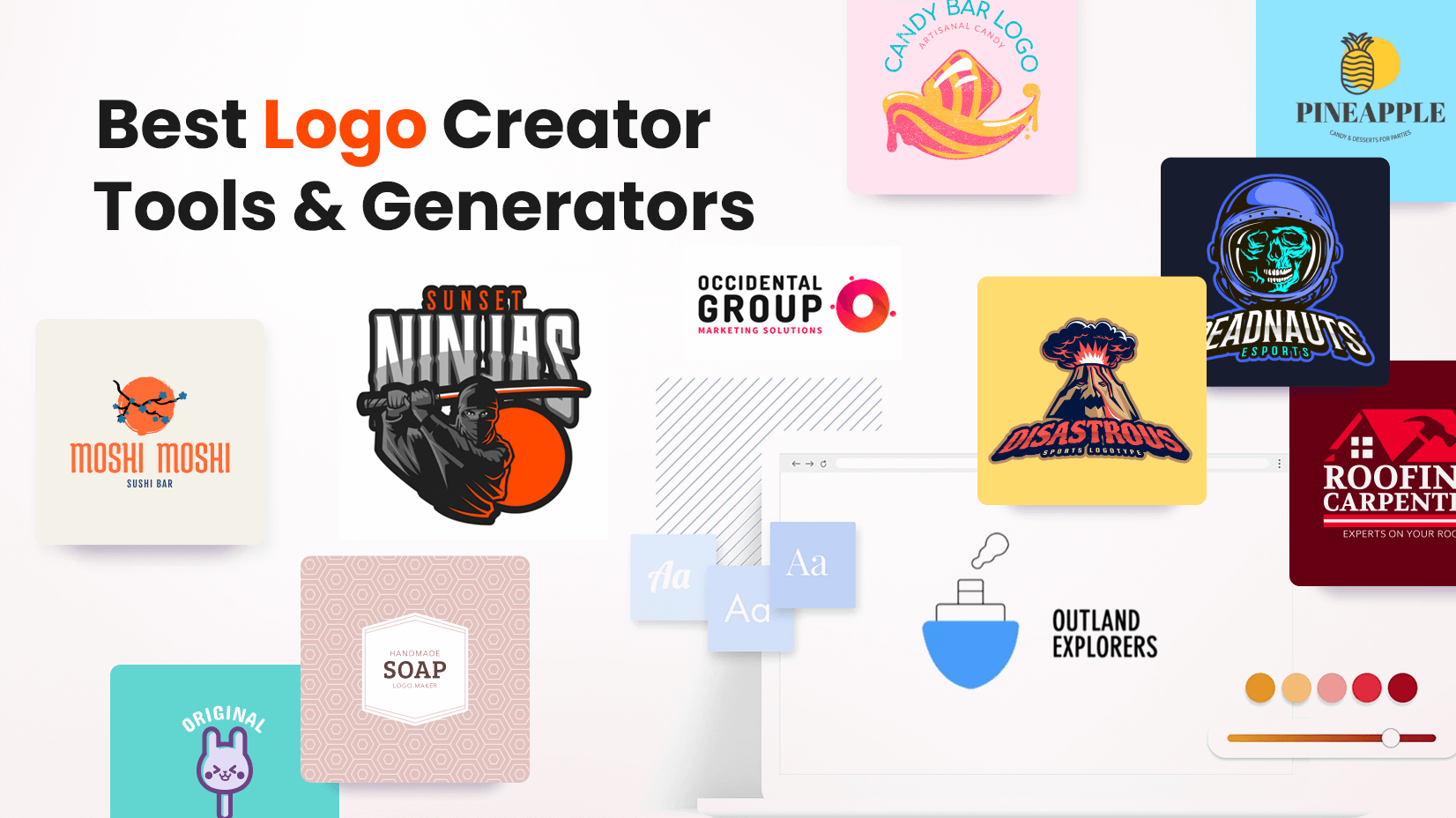
Best Logo Creator Tools & Generators: Fast, Easy, Cost-Effective
by Iveta Pavlova
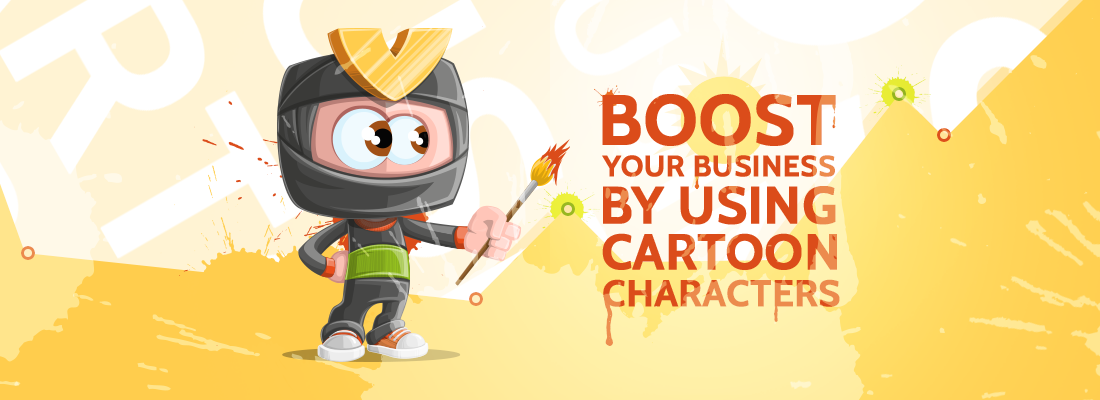
How to Boost Your Business by Using Cartoon Characters in Marketing
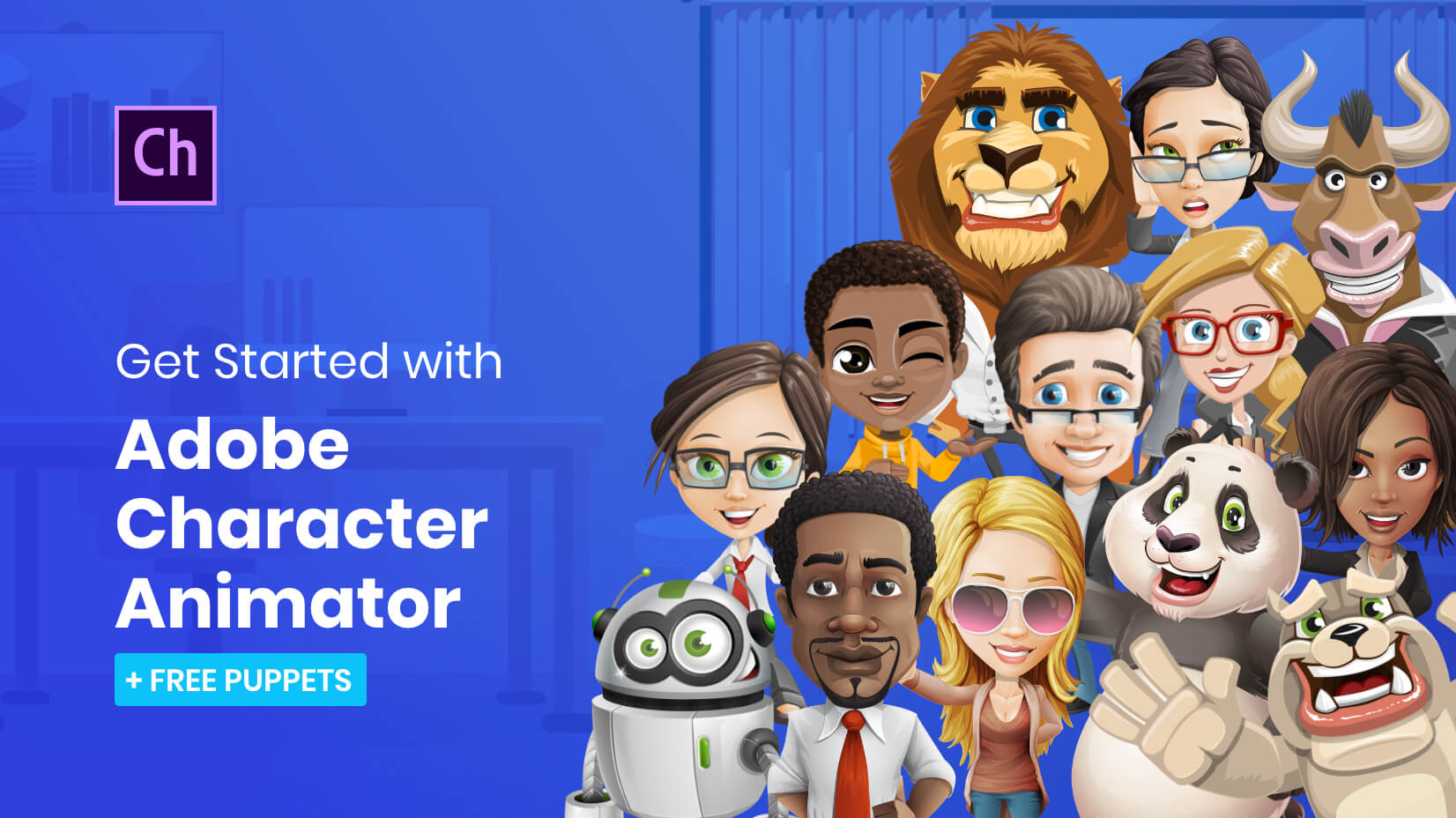
How-To Tutorials
Adobe character animator: everything you need to know + free puppets.
by Lyudmil Enchev
Looking for Design Bundles or Cartoon Characters?
A source of high-quality vector graphics offering a huge variety of premade character designs, graphic design bundles, Adobe Character Animator puppets, and more.
We use essential cookies to make Venngage work. By clicking “Accept All Cookies”, you agree to the storing of cookies on your device to enhance site navigation, analyze site usage, and assist in our marketing efforts.
Manage Cookies
Cookies and similar technologies collect certain information about how you’re using our website. Some of them are essential, and without them you wouldn’t be able to use Venngage. But others are optional, and you get to choose whether we use them or not.
Strictly Necessary Cookies
These cookies are always on, as they’re essential for making Venngage work, and making it safe. Without these cookies, services you’ve asked for can’t be provided.
Show cookie providers
- Google Login
Functionality Cookies
These cookies help us provide enhanced functionality and personalisation, and remember your settings. They may be set by us or by third party providers.
Performance Cookies
These cookies help us analyze how many people are using Venngage, where they come from and how they're using it. If you opt out of these cookies, we can’t get feedback to make Venngage better for you and all our users.
- Google Analytics
Targeting Cookies
These cookies are set by our advertising partners to track your activity and show you relevant Venngage ads on other sites as you browse the internet.
- Google Tag Manager
- Infographics
- Daily Infographics
- Popular Templates
- Accessibility
- Graphic Design
- Graphs and Charts
- Data Visualization
- Human Resources
- Beginner Guides
Blog Beginner Guides How To Make a Good Presentation [A Complete Guide]
How To Make a Good Presentation [A Complete Guide]
Written by: Krystle Wong Jul 20, 2023

A top-notch presentation possesses the power to drive action. From winning stakeholders over and conveying a powerful message to securing funding — your secret weapon lies within the realm of creating an effective presentation .
Being an excellent presenter isn’t confined to the boardroom. Whether you’re delivering a presentation at work, pursuing an academic career, involved in a non-profit organization or even a student, nailing the presentation game is a game-changer.
In this article, I’ll cover the top qualities of compelling presentations and walk you through a step-by-step guide on how to give a good presentation. Here’s a little tip to kick things off: for a headstart, check out Venngage’s collection of free presentation templates . They are fully customizable, and the best part is you don’t need professional design skills to make them shine!
These valuable presentation tips cater to individuals from diverse professional backgrounds, encompassing business professionals, sales and marketing teams, educators, trainers, students, researchers, non-profit organizations, public speakers and presenters.
No matter your field or role, these tips for presenting will equip you with the skills to deliver effective presentations that leave a lasting impression on any audience.
Click to jump ahead:
What are the 10 qualities of a good presentation?
Step-by-step guide on how to prepare an effective presentation, 9 effective techniques to deliver a memorable presentation, faqs on making a good presentation, how to create a presentation with venngage in 5 steps.
When it comes to giving an engaging presentation that leaves a lasting impression, it’s not just about the content — it’s also about how you deliver it. Wondering what makes a good presentation? Well, the best presentations I’ve seen consistently exhibit these 10 qualities:
1. Clear structure
No one likes to get lost in a maze of information. Organize your thoughts into a logical flow, complete with an introduction, main points and a solid conclusion. A structured presentation helps your audience follow along effortlessly, leaving them with a sense of satisfaction at the end.
Regardless of your presentation style , a quality presentation starts with a clear roadmap. Browse through Venngage’s template library and select a presentation template that aligns with your content and presentation goals. Here’s a good presentation example template with a logical layout that includes sections for the introduction, main points, supporting information and a conclusion:

2. Engaging opening
Hook your audience right from the start with an attention-grabbing statement, a fascinating question or maybe even a captivating anecdote. Set the stage for a killer presentation!
The opening moments of your presentation hold immense power – check out these 15 ways to start a presentation to set the stage and captivate your audience.
3. Relevant content
Make sure your content aligns with their interests and needs. Your audience is there for a reason, and that’s to get valuable insights. Avoid fluff and get straight to the point, your audience will be genuinely excited.
4. Effective visual aids
Picture this: a slide with walls of text and tiny charts, yawn! Visual aids should be just that—aiding your presentation. Opt for clear and visually appealing slides, engaging images and informative charts that add value and help reinforce your message.
With Venngage, visualizing data takes no effort at all. You can import data from CSV or Google Sheets seamlessly and create stunning charts, graphs and icon stories effortlessly to showcase your data in a captivating and impactful way.

5. Clear and concise communication
Keep your language simple, and avoid jargon or complicated terms. Communicate your ideas clearly, so your audience can easily grasp and retain the information being conveyed. This can prevent confusion and enhance the overall effectiveness of the message.
6. Engaging delivery
Spice up your presentation with a sprinkle of enthusiasm! Maintain eye contact, use expressive gestures and vary your tone of voice to keep your audience glued to the edge of their seats. A touch of charisma goes a long way!
7. Interaction and audience engagement
Turn your presentation into an interactive experience — encourage questions, foster discussions and maybe even throw in a fun activity. Engaged audiences are more likely to remember and embrace your message.
Transform your slides into an interactive presentation with Venngage’s dynamic features like pop-ups, clickable icons and animated elements. Engage your audience with interactive content that lets them explore and interact with your presentation for a truly immersive experience.

8. Effective storytelling
Who doesn’t love a good story? Weaving relevant anecdotes, case studies or even a personal story into your presentation can captivate your audience and create a lasting impact. Stories build connections and make your message memorable.
A great presentation background is also essential as it sets the tone, creates visual interest and reinforces your message. Enhance the overall aesthetics of your presentation with these 15 presentation background examples and captivate your audience’s attention.
9. Well-timed pacing
Pace your presentation thoughtfully with well-designed presentation slides, neither rushing through nor dragging it out. Respect your audience’s time and ensure you cover all the essential points without losing their interest.
10. Strong conclusion
Last impressions linger! Summarize your main points and leave your audience with a clear takeaway. End your presentation with a bang , a call to action or an inspiring thought that resonates long after the conclusion.
In-person presentations aside, acing a virtual presentation is of paramount importance in today’s digital world. Check out this guide to learn how you can adapt your in-person presentations into virtual presentations .

Preparing an effective presentation starts with laying a strong foundation that goes beyond just creating slides and notes. One of the quickest and best ways to make a presentation would be with the help of a good presentation software .
Otherwise, let me walk you to how to prepare for a presentation step by step and unlock the secrets of crafting a professional presentation that sets you apart.
1. Understand the audience and their needs
Before you dive into preparing your masterpiece, take a moment to get to know your target audience. Tailor your presentation to meet their needs and expectations , and you’ll have them hooked from the start!
2. Conduct thorough research on the topic
Time to hit the books (or the internet)! Don’t skimp on the research with your presentation materials — dive deep into the subject matter and gather valuable insights . The more you know, the more confident you’ll feel in delivering your presentation.
3. Organize the content with a clear structure
No one wants to stumble through a chaotic mess of information. Outline your presentation with a clear and logical flow. Start with a captivating introduction, follow up with main points that build on each other and wrap it up with a powerful conclusion that leaves a lasting impression.
Delivering an effective business presentation hinges on captivating your audience, and Venngage’s professionally designed business presentation templates are tailor-made for this purpose. With thoughtfully structured layouts, these templates enhance your message’s clarity and coherence, ensuring a memorable and engaging experience for your audience members.
Don’t want to build your presentation layout from scratch? pick from these 5 foolproof presentation layout ideas that won’t go wrong.

4. Develop visually appealing and supportive visual aids
Spice up your presentation with eye-catching visuals! Create slides that complement your message, not overshadow it. Remember, a picture is worth a thousand words, but that doesn’t mean you need to overload your slides with text.
Well-chosen designs create a cohesive and professional look, capturing your audience’s attention and enhancing the overall effectiveness of your message. Here’s a list of carefully curated PowerPoint presentation templates and great background graphics that will significantly influence the visual appeal and engagement of your presentation.
5. Practice, practice and practice
Practice makes perfect — rehearse your presentation and arrive early to your presentation to help overcome stage fright. Familiarity with your material will boost your presentation skills and help you handle curveballs with ease.
6. Seek feedback and make necessary adjustments
Don’t be afraid to ask for help and seek feedback from friends and colleagues. Constructive criticism can help you identify blind spots and fine-tune your presentation to perfection.
With Venngage’s real-time collaboration feature , receiving feedback and editing your presentation is a seamless process. Group members can access and work on the presentation simultaneously and edit content side by side in real-time. Changes will be reflected immediately to the entire team, promoting seamless teamwork.

7. Prepare for potential technical or logistical issues
Prepare for the unexpected by checking your equipment, internet connection and any other potential hiccups. If you’re worried that you’ll miss out on any important points, you could always have note cards prepared. Remember to remain focused and rehearse potential answers to anticipated questions.
8. Fine-tune and polish your presentation
As the big day approaches, give your presentation one last shine. Review your talking points, practice how to present a presentation and make any final tweaks. Deep breaths — you’re on the brink of delivering a successful presentation!
In competitive environments, persuasive presentations set individuals and organizations apart. To brush up on your presentation skills, read these guides on how to make a persuasive presentation and tips to presenting effectively .

Whether you’re an experienced presenter or a novice, the right techniques will let your presentation skills soar to new heights!
From public speaking hacks to interactive elements and storytelling prowess, these 9 effective presentation techniques will empower you to leave a lasting impression on your audience and make your presentations unforgettable.
1. Confidence and positive body language
Positive body language instantly captivates your audience, making them believe in your message as much as you do. Strengthen your stage presence and own that stage like it’s your second home! Stand tall, shoulders back and exude confidence.
2. Eye contact with the audience
Break down that invisible barrier and connect with your audience through their eyes. Maintaining eye contact when giving a presentation builds trust and shows that you’re present and engaged with them.
3. Effective use of hand gestures and movement
A little movement goes a long way! Emphasize key points with purposeful gestures and don’t be afraid to walk around the stage. Your energy will be contagious!
4. Utilize storytelling techniques
Weave the magic of storytelling into your presentation. Share relatable anecdotes, inspiring success stories or even personal experiences that tug at the heartstrings of your audience. Adjust your pitch, pace and volume to match the emotions and intensity of the story. Varying your speaking voice adds depth and enhances your stage presence.

5. Incorporate multimedia elements
Spice up your presentation with a dash of visual pizzazz! Use slides, images and video clips to add depth and clarity to your message. Just remember, less is more—don’t overwhelm them with information overload.
Turn your presentations into an interactive party! Involve your audience with questions, polls or group activities. When they actively participate, they become invested in your presentation’s success. Bring your design to life with animated elements. Venngage allows you to apply animations to icons, images and text to create dynamic and engaging visual content.
6. Utilize humor strategically
Laughter is the best medicine—and a fantastic presentation enhancer! A well-placed joke or lighthearted moment can break the ice and create a warm atmosphere , making your audience more receptive to your message.
7. Practice active listening and respond to feedback
Be attentive to your audience’s reactions and feedback. If they have questions or concerns, address them with genuine interest and respect. Your responsiveness builds rapport and shows that you genuinely care about their experience.

8. Apply the 10-20-30 rule
Apply the 10-20-30 presentation rule and keep it short, sweet and impactful! Stick to ten slides, deliver your presentation within 20 minutes and use a 30-point font to ensure clarity and focus. Less is more, and your audience will thank you for it!
9. Implement the 5-5-5 rule
Simplicity is key. Limit each slide to five bullet points, with only five words per bullet point and allow each slide to remain visible for about five seconds. This rule keeps your presentation concise and prevents information overload.
Simple presentations are more engaging because they are easier to follow. Summarize your presentations and keep them simple with Venngage’s gallery of simple presentation templates and ensure that your message is delivered effectively across your audience.

1. How to start a presentation?
To kick off your presentation effectively, begin with an attention-grabbing statement or a powerful quote. Introduce yourself, establish credibility and clearly state the purpose and relevance of your presentation.
2. How to end a presentation?
For a strong conclusion, summarize your talking points and key takeaways. End with a compelling call to action or a thought-provoking question and remember to thank your audience and invite any final questions or interactions.
3. How to make a presentation interactive?
To make your presentation interactive, encourage questions and discussion throughout your talk. Utilize multimedia elements like videos or images and consider including polls, quizzes or group activities to actively involve your audience.
In need of inspiration for your next presentation? I’ve got your back! Pick from these 120+ presentation ideas, topics and examples to get started.
Creating a stunning presentation with Venngage is a breeze with our user-friendly drag-and-drop editor and professionally designed templates for all your communication needs.
Here’s how to make a presentation in just 5 simple steps with the help of Venngage:
Step 1: Sign up for Venngage for free using your email, Gmail or Facebook account or simply log in to access your account.
Step 2: Pick a design from our selection of free presentation templates (they’re all created by our expert in-house designers).
Step 3: Make the template your own by customizing it to fit your content and branding. With Venngage’s intuitive drag-and-drop editor, you can easily modify text, change colors and adjust the layout to create a unique and eye-catching design.
Step 4: Elevate your presentation by incorporating captivating visuals. You can upload your images or choose from Venngage’s vast library of high-quality photos, icons and illustrations.
Step 5: Upgrade to a premium or business account to export your presentation in PDF and print it for in-person presentations or share it digitally for free!
By following these five simple steps, you’ll have a professionally designed and visually engaging presentation ready in no time. With Venngage’s user-friendly platform, your presentation is sure to make a lasting impression. So, let your creativity flow and get ready to shine in your next presentation!
Discover popular designs

Infographic maker

Brochure maker

White paper online

Newsletter creator

Flyer maker

Timeline maker

Letterhead maker

Mind map maker

Ebook maker
Spot your team’s skill gaps in < 3 minutes
10 powerful ways to open a presentation with impact
.jpeg)
Share this article
We offer a scalable employee training solution. It lets you continuously upskill your people and expand their capabilities.
This article was originally written and published by Speak First
.jpeg)
The first 30 seconds of a presentation is crucial – so don’t waste it. You need to grab the attention of your audience and engage their interest from the start. Many speakers begin by giving their name and the title of their presentation. This is predictable and boring – and should be avoided whenever possible. Go instead for a strong opening that gets them sitting up and taking notice immediately.
1. Make a bold claim
A bold statement at the beginning of your presentation is guaranteed to get you attention. The more dramatic or provocative it is the more alert they will be and ready to listen to what you say next.
2. Invite them to ‘Imagine’
Starting your presentation with the word ‘imagine’ places your audience in the center of an experience. Dr Frank Luntz, in his book ‘#Words That Work says imagine is one of the most powerful words in the English language. It makes the audience active participants in the presentation, rather than detached onlookers. It transforms the presenter’s words into vivid pictures, sounds and feelings in the minds of those listening.
3. Present a striking fact or statistic
A simple, powerful way of grabbing the attention of an audience is to present them with a striking fact or statistic. This is especially effective when it’s surprising or counter-intuitive. Use accurate, verifiable numbers whenever possible and where you have credible external sources make sure you name them.
4. Ask a question
Asking the audience a question is one of the most powerful ways of getting them engaged right from the start. This is easier with small- to medium-sized groups where it’s easy to converse with them, and more of a challenge with larger groups like conferences, where you need a microphone.
Another alternative is to ask a rhetorical question and provide the answer yourself. This is not usually as strong or engaging as a real question, but has the advantage of being quicker, and avoids the risk of getting embroiled in a long discussion.
5. Tell a story or anecdote
When you start with a story you grab people immediately, especially when you share a personal experience that others can relate to. Make sure, though, that people see the relevance to the topic you are talking about and keep opening stories relatively brief. If you go on too long your audience may grow restless as they wait for you to get to the point.
6. Use an aphorism or proverb
Proverbs, aphorisms, or familiar sayings can be a great way of opening, provided they relate closely to your message. Use them carefully, though, or they might come across as tired, obvious clichés.
7. Make it mysterious
Audiences are easily hooked when you arouse their curiosity. In the mystery opening you give them ambiguous clues before revealing your point. You need to get the timing right because some people may be irritated rather than amused at the ‘game’ you’re playing if you string it out for too long.
8. Introduce an analogy or metaphor
Analogies, similes and metaphors are comparisons between two apparently unrelated items. They’re a practical, engaging way of making a complex or theoretical concept easier to understand.
9. Start with a quote
Quotes can be an extremely effective ways of opening a presentation. They may be well known or more obscure. You might open a presentation on the challenges facing your company with the following observation from John F Kennedy: ‘When written in Chinese, the word ‘crisis’ is composed of two characters – one represents danger, and the other represents an opportunity.’
10. Use humor
Many people believe it’s a good idea to start – and end – a presentation with a joke, on the basis that you should get people in a good mood as soon as possible and leave them smiling at the end. There are plenty of books on the market full of material you can use to open in an ‘amusing’ way. Beware – this is a high-risk strategy. Gentle, appropriate humor works better.
At Lepaya, we help organizations retain top talent by creating a culture of continuous learning. We build stronger teams and inspire future leaders by offering innovative learning experiences through our Power Skills training.
TELL ME MORE

We offer a scalable employee training solution. It lets you continuously upskill your people.
.png)
Use Lepaya's skills gap analysis tool to uncover the critical skills your teams require.
.png)
Empower your individual contributors to enhance their skills and impact in your organization.
Enter your email below to receive L&D trends, news, and insights from us.
.png)
About Lepaya
Lepaya is a provider of Power Skills training that combines online and offline learning. Founded by René Janssen and Peter Kuperus in 2018 with the perspective that the right training, at the right time, focused on the right skill, makes organizations more productive. Lepaya has trained thousands of employees.
Related articles
.jpeg)
December 12, 2022
The Future is Now: How to Build and Manage a Virtual Team
As the world is becoming smaller and smaller in this modern age of globalization, cloud technology...

November 29, 2022
Accelerate out of disruption: 2024 Employee Wishlist to engage and retain top talent
Over the past few years, major disruptions have destabilized the world of work. The constant turmoil has resulted in high turnover rates, frustrated learning and development (L&D) managers, and slow organizational growth.
.png)
February 1, 2024
Maximizing business impact with AI: an actionable framework for people leaders
How can people leaders strategically integrate AI to amplify the impact of learning and align it directly with business goals?

One Time Code
< Go back to Login
Forgot Password
Please enter your registered email ID. You will receive an email message with instructions on how to reset your password.

How To Start a Presentation : Make A Strong First Impression
Presenting well requires preparation, and the first step is mastering the art of the opening statement. You may pique your audience’s curiosity by crafting a captivating introduction to your presentation. Your presentation’s introduction should help the audience grasp the central idea. Speaking in front of a new group is also a chance to identify yourself as a speaker.
Presenting information to others, whether a small group or a huge audience, is an everyday occurrence in the modern workplace. Sales pitches, presentations of new marketing data, and analyses of research findings are just a few examples of the kinds of presentations that various professionals may expect. Knowing the topic of your presentation, you should craft an exciting start to pique your audience’s interest right away. In this article, we’ll discuss how to Start a Presentation.
Steps To Start A Presentation
Introduction.
Presenters should know how to give an intro in a presentation since it sets the stage for the rest of their talk and gives the audience background information. If you want to make an excellent first impression, consider the following:
Start the presentation with a hook. Starting a presentation with a statement, question, or fact will pique your audience’s interest and make them want to hear more. Think about what you want to accomplish. Explain to the audience why you are giving this talk, what you intend to accomplish, and what they will learn.
Establish your authority by highlighting relevant skills, experience, or education that lend credence to your presentation. Provide a high-level summary of the main topics you intend to address. In doing so, you’ll ensure that your presentation’s structure and content make sense to the target audience.
Take the listeners in, get them involved, and get their thoughts across by asking them questions or getting their input. Your introduction needs to be short and sweet. Stay under 5 minutes if you don’t want people to tune out.
Remember that the introduction is your audience’s first interaction with you, so make it count.
Grab The Audience’s Attention
It is essential to hook the audience in the first few minutes of a presentation so that they will be interested in what you have to say. Some suggestions on how to make yourself more interesting:
- Share Attention-Grabbing Information: Beginning your presentation with attention-grabbing information is one approach to grabbing your audience’s attention.
- Build A Rapport With The Audience: Building rapport with the audience before diving into the slides you had prepared can be accomplished by sharing a short, meaningful tale. You have between thirty seconds and one minute to share your experience, which might be funny, idealistic, or thought-provoking. Adding a touch of sincerity to your story can also help. One way to add authenticity to your presentation is to share a personal story related to the topic. Participate in sharing that with your audience.
- Ask Questions to Generate Curiosity: Invite the listeners by posing questions or requesting comments. The response to these questions can serve as a barometer for the audience’s level of interest and participation.
Keep in mind that you want to establish rapport with your listeners and pique their interest in what you say by writing an engaging beginning. Make an effort to stand out by introducing oneself uniquely and interestingly.
Let The Audience In On Your Presentation
Make it clear to your listeners why the information you deliver is crucial. You should use numbers or statistics to drive home the significance of what you’re saying. In addition, you may choose to explain how they may benefit personally or professionally from attending this presentation.
If you don’t have a compelling anecdote to give, a thought-provoking fact regarding the importance of your presentation could do the trick. If you go through this strategy, ensure your body language and voice reflect that confidence when you make your announcement.
Don’t slouch, and don’t put your hands in your pockets. Consider how you would break the news to your coworkers or peers if you presented this message to them. You want them to believe what you’re saying and find it fascinating.
The Main Body Of The Presentation
The main body of a presentation is the most critical part, where you deliver the core message and supporting evidence to your audience. Here are some tips on how to present it effectively using visual aids, useful pieces of evidence, and key points:
- Use Clear and concise visual aids: Visual aids like slides, charts, graphs, and powerpoint graphics can help you present your ideas more effectively. Ensure that your visual aids are clear, easy to understand, and relevant to your message.
- Provide supporting evidence: Use credible sources, data, and statistics to support your key points. With this approach, you can build trust and credibility with your audience.
- Highlight key points: Identify the essential points in your presentation and emphasize them using visual aids and other techniques. Use headings, bullet points, and bold text to make key points stand out.
- Use storytelling techniques: People are naturally drawn to stories, and storytelling techniques can help make your presentation more engaging and memorable.
- Practice and rehearse: Make sure you have practiced your presentation thoroughly and are comfortable with the flow and pacing of the content. This will help you to present confidently and smoothly.
- Interact with your audience: Ask questions and encourage feedback. This will help keep them engaged and allow you to clarify any misunderstandings or confusion.
Remember, the goal of the presentation’s main body is to communicate your message and support it with evidence effectively. Using visual aids, helpful evidence, and critical points, you can ensure that your presentation is engaging, effective, and memorable.
Compelling Conclusion
A firm conclusion can leave a lasting impression on your audience and summarize the critical points of your presentation. Here are some tips on how to conclude a presentation effectively:
- Summarize key points: Briefly review the main points of your presentation to reinforce the key messages you delivered.
- End with a call to action: Encourage your audience to take action, such as asking questions, providing feedback, or making a decision.
- Provide a memorable closing statement: Conclude your presentation with a memorable statement that ties together your key points and leaves a lasting impression on your audience.
- End on a high note: Close your presentation positively, leaving your audience feeling energized and motivated.
Remember, the conclusion is a critical part of your presentation and can help to summarize your key points and leave a lasting impression on your audience. By following these tips, you can ensure that your conclusion is compelling and memorable.
Have A Q & A Session
A Q&A (Questions and Answers) section in your presentation can be a great way to encourage audience engagement and address any questions or concerns they may have. To conduct a thriving Q&A section in your presentation, follow these tips:
- Make preparations in advance: Set aside some time for the Q&A and think about the questions people might ask.
- Use Properly : The Q&A section should be timed appropriately. If there are too many questions, prioritize the most important and relevant ones.
- Listen actively: Make sure to listen carefully to each question and provide a clear and concise answer. If you don’t know the answer to a question, admit it and offer to follow up after the presentation.
- Encourage interaction: Ask follow-up questions and allow for discussion. This helps build a sense of community and keep the audience engaged.
If you stick to these rules, the Q&A section of your article will be well-structured, fascinating, and helpful to your readers. You can check out the vast library of questions slides to use in your presentations.
Closing the Presentation
Closing your presentation can be a simple and effective way to wrap up the content you have delivered and make a lasting impression on your audience. Here’s how you can do it:
- Final Thoughts or Reflections: Summarize the main points of your presentation, and give your audience a clear takeaway of what you want them to remember. If appropriate, add a personal touch and share your experiences, thoughts, or reflections on the topic.
- Thank the Audience: Acknowledge the audience for their time and attention. Express gratitude for their participation and interest in your presentation. Thank you for taking the time to listen to my presentation. Your attention and engagement have been greatly appreciated.
- Provide Contact Information: Give your contact information, such as your email address, phone number, or LinkedIn profile, in case the audience has any further questions or wants to get in touch with you. It’s possible to say: “Feel free to contact me at any time if you have any other inquiries or would like to continue discussing this matter. Please contact me at [put your info here].”
By following these steps, you can leave a lasting impression on your audience and build a connection with them that goes beyond the content of your presentation. You can find a collection of creative thank you slides for your presentations.
Knowing how to start with a presentation is important to grab the audience’s attention and set the tone for the rest of the presentation. By following the steps mentioned above, you can grasp how to start with your presentation confidently and engagingly, grabbing your audience’s attention and setting the stage for a successful presentation.
People Are Also Reading:
- The Ultimate Guide On 30 60 90 Day Plan For Managers
- 5 Steps To Successful Project Planning
- The Only Business Leadership Roadmap You Need In 2023
- 5+ Successful Case Study Presentation Examples
- How To Write An Effective Executive Summary?
Table Of Content
Related posts from the same category.
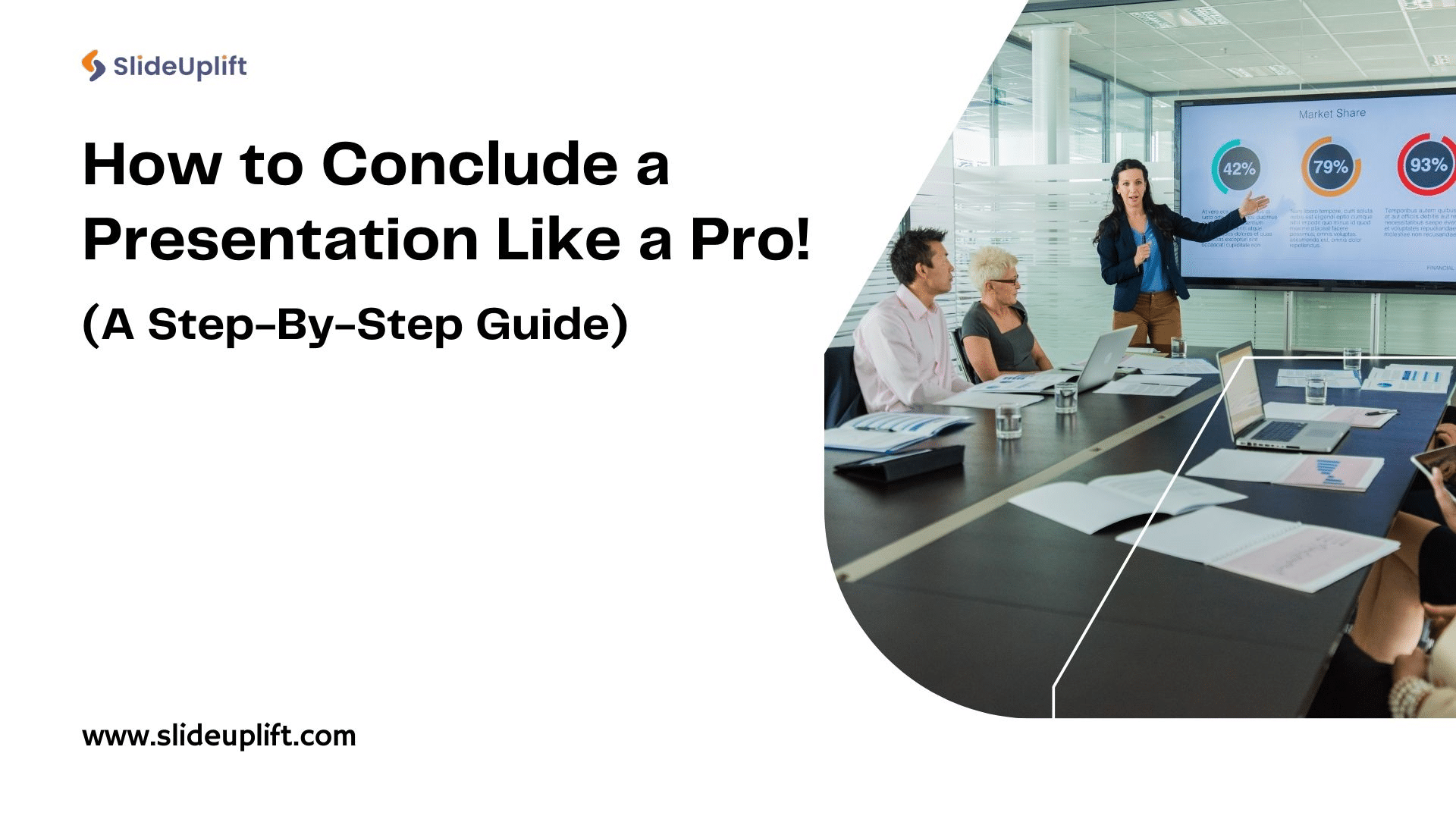
10 Jun, 2024 | SlideUpLift
How to Conclude a Presentation Like a Pro [A Step-by-Step Guide]
A presentation has recently become one of the most vital forms of communication in a business ecosystem. It is used for a variety of reasons in almost all sectors to

14 Feb, 2023 | SlideUpLift
How To Make A Presentation: A Comprehensive Guide
Are you tired of mediocre presentations that leave your audience bored and uninterested? Presentations are a crucial aspect of communication in the modern world, whether in the workplace, school, or

10 Nov, 2021 | SlideUpLift
PowerPoint Presentation Tips: How to Make a Good PowerPoint Presentation
A well-crafted PowerPoint presentation can have a lasting impact on your audience. However, creating an effective presentation can be daunting, especially if you are unsure how to make it engaging

13 Sep, 2023 | SlideUpLift
How to Write A Good Presentation?
Have you ever sat down and tried to write a presentation, but you only found yourself looking at a blank screen with nothing coming to mind? Fear not; you are
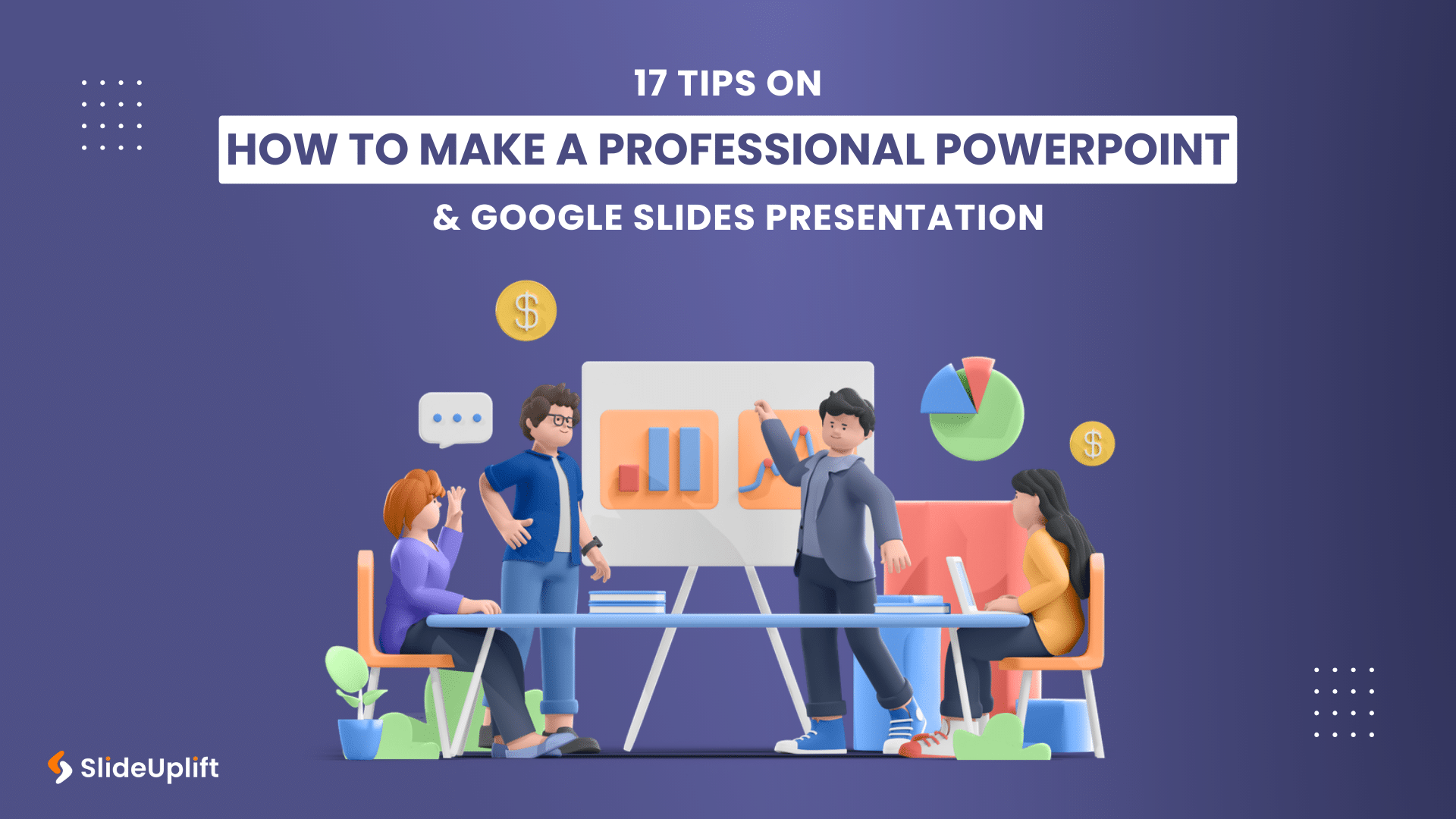
24 Apr, 2024 | SlideUpLift
17 Tips On How To Make A Professional PowerPoint & Google Slides Presentation
A PowerPoint presentation is a fantastic tool for communicating vital information. Even though people think it's simple to put all your content together and make a presentation, arranging and preparing

14 Oct, 2022 | SlideUpLift
How To Create Your Perfect Webinar Presentation
Webinars are becoming an increasingly important tool for businesses to connect directly with their customers — to educate and inform, maintain relationships and even build a brand. They're also excellent

7 Sep, 2023 | SlideUpLift
How to Hire a Presentation Designer?
Presentations have a special power, whether used in business, education, or public speaking. They can enlighten, convince, incite any information. An effective presentation is the key to winning over stakeholders,

6 Jan, 2020 | SlideUpLift
Top 10 Hacks On How To Make PowerPoint Presentation Attractive
Per experts, the audience gets hooked and pays more attention to the visual content of your PowerPoint slides than drab-looking, text-heavy content. This article answers the well to know question

2 Jul, 2020 | SlideUpLift
3 Most Important Presentation Tips To Make Your Presentation StandOut
Building an effective PowerPoint presentation is part art and part science. This article discusses the three most important PowerPoint presentation tips that form the basis of every successful presentation. In

14 Sep, 2023 | SlideUpLift
How to Make A Branded PowerPoint Template?
Delivering an interesting presentation is a skill that can set you apart and take your message to new levels. Engaging presentations are the engines that propel efficient communication and are
Forgot Password?
Privacy Overview
Necessary cookies are absolutely essential for the website to function properly. This category only includes cookies that ensures basic functionalities and security features of the website. These cookies do not store any personal information
Any cookies that may not be particularly necessary for the website to function and is used specifically to collect user personal data via ads, other embedded contents are termed as non-necessary cookies. It is mandatory to procure user consent prior to running these cookies on your website.
How to Start a Presentation (+ Useful Phrases)
Table of Contents
Knowing how to start a presentation is a crucial skill in today’s professional landscape.
After all, many office workers are called on to prepare a presentation at some point during their careers.
And, of course, many people are looking to share their expertise through workshops and lectures.
With that in mind, we wanted to dedicate an article to learning about the best ways to deliver an impactful presentation opening.
So, whether you’re currently struggling to come up with introductory lines for a presentation, or you have a more passive interest in this subject — you’ve come to the right place.
In this article, we’ll:
- Share expert tips for preparing the best opening lines for any type of professional presentation ,
- Offer some valuable examples and specific phrases you can use, and even
- Analyze the way professional speakers approach their presentations.
But first, let’s talk about why having a good introduction is such a crucial part of any presentation.

Why does having a good introduction to a presentation matter?
If you’ve ever had to prepare an address, you probably understand the importance of having an impactful introduction to a presentation.
If the body of a speech contains most of the information you want to share with the audience and the conclusion allows you to invite the audience to take action — the introduction is how you get them to listen to you in the first place.
In other words, a presentation is a motivated sequence — a method of persuasion with 5 distinct steps:
- Attention — wherein the speaker introduces the problem the listeners are having in an interesting manner. In the format of a presentation, this step is the introduction .
- Need — the speaker explains how the problem affects the listeners and backs up their claims. This step corresponds with the body of a presentation , along with the following two.
- Satisfaction — the speaker offers a solution and shows how it will alleviate the concern they have previously identified.
- Visualization — the speaker describes precisely what will happen if the listeners choose to implement their solution. Sometimes, they also describe what will happen if their solution is not implemented. This concludes the body of the presentation.
- Action — the speaker directs the listeners with a call to action, explaining what they can do in response to their presentation. This step represents the conclusion of a presentation.
Even though this framework was developed in the 1930s, it’s still a useful tool for people who want to improve their presenting skills.
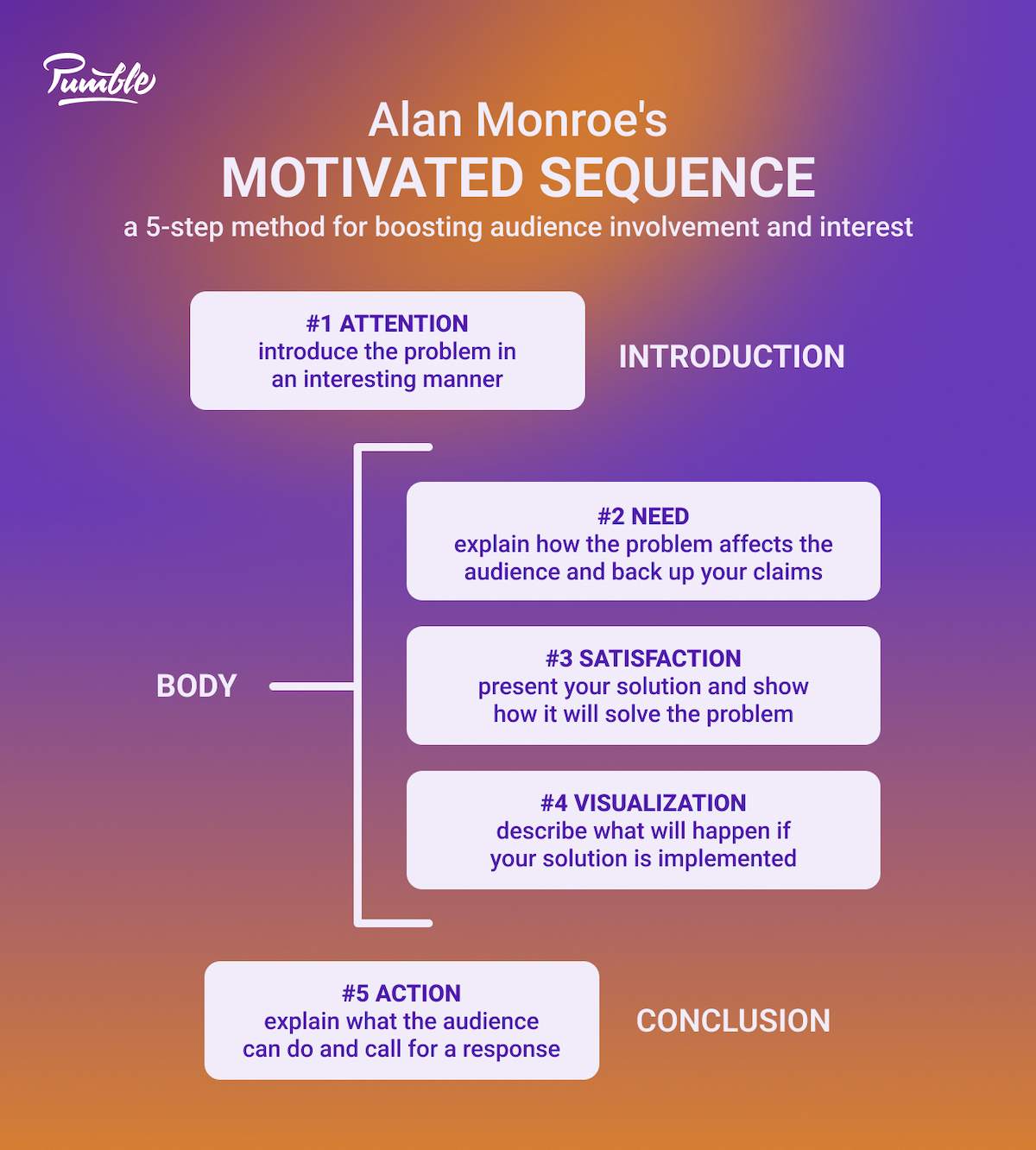
What do professional speakers have to say about the importance of opening a presentation effectively?
For more insight into the importance of starting a presentation with a bang, we turned to professional speakers and communication experts.
We put the question to Mark Beal , Assistant Professor of Professional Practice, Communication, at Rutgers University School of Communication and Information. Here’s what he had to say:

“It is critically important to engage your audience immediately at the start of a presentation in a high-energy manner, or you could lose them to their mobile phone or laptop and you may never get them back.”
Speaker, author, communication skills trainer, and editorial producer at CNN, Nadia Bilchik , added:

“The beginning of your presentation is your prime real estate. It’s when your audience decides if you are worth paying attention to or not.”
So, in addition to capturing the audience’s attention , your introduction also needs to establish your authority .
Free team communication software
Try Pumble, a secure, reliable, and easy-to-use communication tool.
FREE FOREVER • UNLIMITED COMMUNICATION

Having said that, let’s talk about the specific steps you need to take before you begin presenting to make your presentation opening as memorable as it can be.
How to prepare the best opening for a presentation
Before we tell you how to start a presentation speech, let’s take a moment to consider the best preparation practices .
Naturally, preparing the introductory lines for your presentation should take place well before the speech itself.
Even so, many novice speakers are still unaware of the different factors that should influence and inform their decisions in this regard.
Luckily, we have managed to boil the results of our extensive research down to the following 3 tips:
- Take note of the way other people start their presentations ,
- Understand the goals of an introduction , and
- Know your audience .
Having said that, let’s see what each of those tips entails.
Tip #1: Watch other speakers’ openers
As Napoleon Hill, author of Think and Grow Rich , puts it:
“Experience has taught me that the next best thing to being truly great is to emulate the great, by feeling and action, as nearly as possible.”
With that in mind, the best thing you can do before drafting your speech is observe the way others have made theirs.
In this case, you’ll want to focus on the way professional speakers introduce themselves and the subjects of their presentations .
The goal of this exercise is to determine:
- What makes a good opening statement ,
- Which openers are generally effective with audiences, and
- What kinds of introductions you resonate with .
Somewhere in the middle of those categories is where you’ll find the opening lines of your presentation.
For their part, the experts we have contacted seem to agree with this tip.
Nadia Bilchik said:
“I have been speaking and training speaking skills for three decades and I still do a tremendous amount of research and customize each and every presentation. If I am speaking […] about the hybrid workplace, I will Google [the] latest statistics. I will also go onto YouTube to see what other speakers and thought leaders are saying about the subject.”
And Mark Beal mirrored her thoughts:
“I am consistently studying presentations in a quest to be a student who is always learning, evolving, transforming, and innovating my approach to presenting. I closely watch all types of presentations, from TEDx Talks to my former students who return to guest lecture in my university courses.”
Tip #2: Understand the goals of an introduction
According to the other authors of Communicating at Work , an introduction has 5 distinct objectives . It should:
- Capture the listener’s attention (or, as professional speakers might say, “hook” them),
- Give them a reason to listen (offer a solution to a personal or professional problem they have),
- Set the proper tone for the topic and setting (let the audience know whether they’re in for an informative, emotional, or humorous speech),
- Establish your qualifications (explain why the audience should listen to you , specifically), and
- Introduce your thesis and preview your presentation (so that the audience knows what to expect in advance).
With those goals in mind, Nadia Bilchik would even say that:
“It’s always best to have someone else introduce you and confirm your credibility.”
That puts the onus of explaining why you deserve to be there on the host of the meeting and allows you to skip that part of the introduction.
However, these 5 objectives are not a checklist you have to follow at all costs.
Depending on the circumstances surrounding your presentation, some of them will matter more than others.
Speaking of, there’s one last thing to keep in mind when crafting your presentation opening.
Tip #3: Know your audience
The audience you end up presenting to will affect everything from the way you organize your presentation to your style of delivery — and even the supporting materials you use.
Your presentation’s opening lines are no exception.
In other words, the content and style of your introduction will depend on the size of the group you’re speaking to and its demographic breakdown .
However, perhaps the most important audience attribute you’ll have to keep in mind is its willingness to listen and engage with your message .
In Business Communication: Process & Product , authors Mary Guffey and Dana Loewy have identified 4 types of audiences based on that factor:
- Friendly — an audience that likes you and cares about your topic,
- Neutral — an audience that is calm and considers itself objective,
- Uninterested — an audience full of people with short attention spans (who may or may not be there against their will), and
- Hostile — an emotional or defensive audience whose goal is to take charge or ridicule the speaker.
Luckily, Guffey and Loewy have also provided some guidance for dealing with each of those kinds of audiences.
| AUDIENCE TYPE | ||
|---|---|---|
| – Be warm and pleasant – Include humor and personal experiences – Involve the audience – Try something new | / | |
| – Be confident – Use subtle gestures – Use facts, statistics, and expert opinions – Present both sides of an issue – Save time for audience questions | – Do anything showy – Use humor or rely on personal stories – Show flashy visuals | |
| – Be brief — no more than 3 points – Be dynamic and entertaining – Move around and use large gestures – Fall back on humor, cartoons, colorful visuals, and interesting statistics | – Bore the audience – Darken the room – Stand motionless – Pass out handouts – Use boring visuals – Expect audience participation | |
| – Be calm and controlled – Speak evenly and slowly – Stick to objective data and expert opinions | – Use personal examples and humor – Allow Q&A segments without a moderator |
How to start a presentation effectively (tips + examples)
It’s the day of your big presentation — time to go big or go home.
Which of the following tips would you incorporate in your presentation opening lines?
- Exude confidence.
- Drop the pleasantries.
- Prove your expertise.
- Begin with a realistic promise (explain what the audience stands to gain from your presentation).
- Go for the drama.
- Fall back on an insightful quote or a pop culture reference.
- Share an interesting statistic.
- Ask questions.
- Relieve tension with a joke or a humorous statement.
- Use visual tools (like images, videos, or props).
If you haven’t thought about which one of these would help you get your point across effectively — don’t worry.
We’re about to explain each of those tips and provide some illuminating examples and specific phrases you can use when starting a presentation.
Tip #1: Exude confidence
One thing you need to know about starting a presentation is that your work begins the moment you set foot on that stage .
Alternatively, it begins the moment someone passes you the (literal or figurative) mic — if we’re taking into account the presentations that take place on video conferencing platforms.
In any case, you’ll want the audience to see you as someone who knows what they’re talking about . That includes:
- Making eye contact ,
- Moving with intention (not fidgeting),
- Wearing professional attire (or at least appropriate attire for the occasion),
- Projecting your words , and
- Showing your confidence through nonverbal cues .
One of the experts we spoke to, Reesa Woolf , PhD, keynote speaker, bestselling author, and executive speaking coach, would even advise you to rehearse your opener and closer to the point of being able to “deliver them with 100% eye contact.”
For what it’s worth, overpreparing also allows you to appear more confident when presenting , as you’ll be less worried about forgetting parts of your speech.
Then again, a moment of forgetfulness can also be turned into a tool for establishing a commanding presence.
Namely, staying still or being quiet for a moment can make the audience pay closer attention to you.
But, if that’s something you’d like to try, make sure the technique doesn’t clash with the type of audience you’re presenting to .
Tip #2: Drop the pleasantries
Have you ever heard a professional public speaker use one of these phrases?
- “It’s a pleasure to be here.”
- “I’m honored to be asked to speak about…”
- “Today, I’m going to talk about…”
The chances of a professional using these phrases are pretty slim — so why would you?
Well, there’s nothing wrong with following a traditional format to introduce yourself .
However, you’ll have to admit that the sentences we have listed above don’t pack the same punch as some of the other presentation opening lines we have included in this article.
Keynote speaker, Forbes contributor, career change consultant, and host of the Career Relaunch® podcast, Joseph Liu , recommends avoiding greetings altogether .

“While I do say hello, rather than starting with drawn-out greetings, I recommend diving right into the presentation with a hook so your audience immediately switches on to the content you’re about to present.”
Speaker, bestselling author, and award-winning accountant, Tatiana Tsoir , notes:
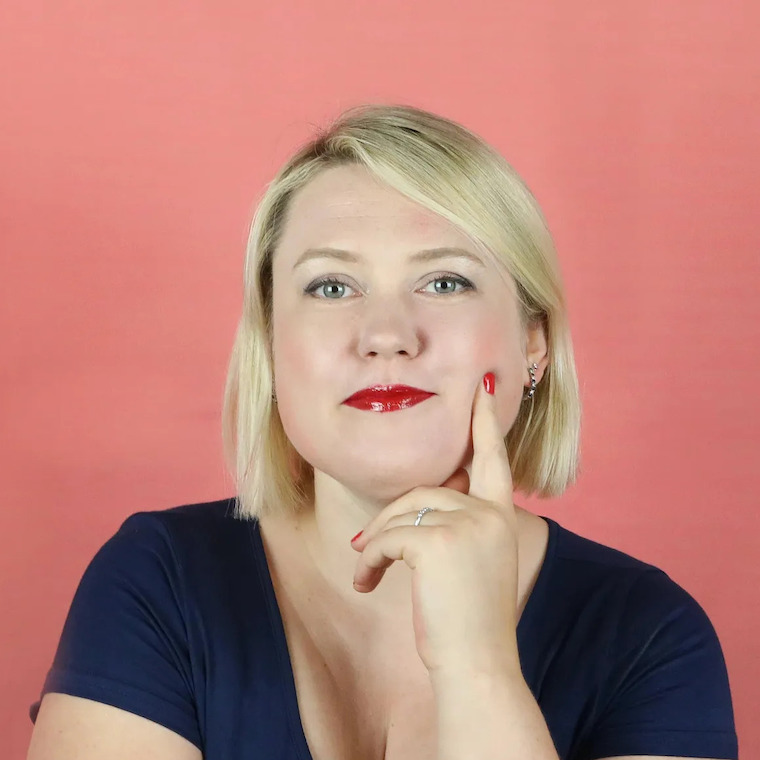
“People’s attention span is 20 minutes max, which is why TEDx is capped at 18 min. Also, people generally remember the beginning and the end, so make sure those are strong [and] get to the point fast.”
So, instead of wasting time on small talk, use an opener that will get your audience’s attention as quickly as possible.
💡 Pumble pro tip
Even though the examples we have listed would be considered a weak way to start a speech, some of them are ideal for starting a business meeting. If you want to know some other expressions that might come in handy in that kind of setting, check out this article:
- 120 Useful English phrases for business meetings
Tip #3: Prove your expertise
As we have established, starting a presentation with a traditional introduction may not be the best way to get the audience’s attention.
Still, you’ll have to establish your credibility at some point — so we might as well illustrate how to do so properly.
Of course, if you’re a teacher or an educator in broader terms, you probably won’t have to prove your expertise to your audience.
However, if you’re tasked with presenting in front of neutral or hostile audiences, you’ll want to establish your qualifications as soon as possible.
If you can’t get someone else to introduce you and establish your credibility before you start your presentation, we suggest hooking the audience first and then introducing yourself right before you head into the main part of the speech.
Phrases you can use to establish your credibility
We have come up with 3 imaginary presentation scenarios to help illustrate our points throughout this guide.
Here’s how our speakers might introduce themselves:
“Hello, everyone. For those of you who don’t know me, I’m Nick Mulder, the head of the security department. I’m here to talk to you about phishing.”
“My name is Joan Miller. As someone with over four decades of experience in marketing, I’m uniquely qualified to talk to you about how artificial intelligence is changing the future of the industry.”
“I’m Milo Green — you probably know me as being the founder of Green & Co. As someone who’s had a hand in running a successful business for over two decades, I’m here to explain how my company’s employee retention rate has never fallen below 85% in a single year.”
If these speakers started with a hook rather than an introduction, the sentences introducing the subject of their presentations would be excessive.
Tip #4: Begin with a realistic promise
So far, there’s been a lot of discussion about “hooks” in this article and not many specific examples of phrases that might hook an audience — let’s change that.
The first type of hook you might want to master, especially for professional presentations, is the “promise.”
One of the experts we have spoken to, Reesa Wolf, uses that very method:
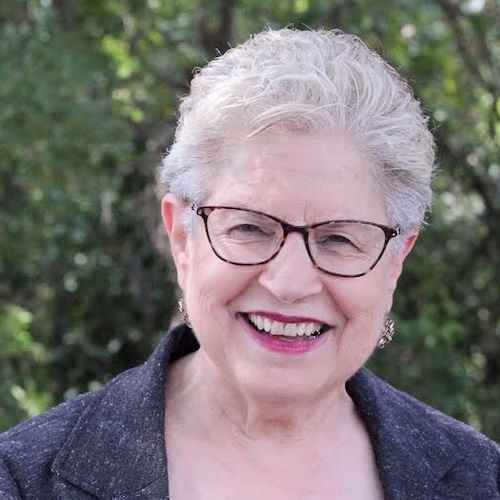
“Begin with a brief statement about the benefits of listening to [your] message. You can give an example of a company or person like them that had the issue they have and how these ideas solved it, but it still must be brief.”
In other words, start by giving them a preview of the knowledge they’ll have by the time you finish your presentation.
This method of starting a presentation is a great way to:
- Show that you’re in tune with the listeners’ needs, concerns, and interests ,
- Offer a solution to a problem the audience might have , or
- Keep the audience interested throughout your presentation .
Ultimately, audiences are self-interested — they will listen to you if you explain what’s in it for them.
Usually, that will require you to point out a problem they are having or an opportunity they’re not taking advantage of.
Phrases you can use to offer a realistic promise
To put this tip in perspective, let’s hear from our imaginary presenters:
“By the end of my talk, you’ll be able to spot phishing emails and understand the steps you need to take when you do.”
“My presentation will alleviate any worries you might have about the ways the marketing sector will need to adapt to the AI revolution.”
“During this talk, you’ll learn how your company can improve its relationship with its employees and boost its retention rate.”
Tip #5: Go for the drama
One thing you should note as you are writing your presentation opening is that the first words you say will set the tone for the rest of your speech .
If offering a realistic promise to your audience suits your presentation subject — by all means, do so.
However, if you’d like to induce excitement and keep your audience’s mood elevated throughout your presentation, you might want to go for a more dramatic entrance instead.
Namely, you could start with:
- A fun fact,
- A startling statement, or
- An emotionally moving story.
Many speakers rely on these kinds of openers to establish the central theme of their presentation naturally .
After all, this method can make the speaker look more approachable and relatable , particularly if their opening line references other people (e.g. “the other day, I met someone/a coworker told me…” ).
One example of this technique comes from author, entrepreneur, and certified fraud examiner, Pamela Meyer, who famously started her TED Talk by pointing to an audience member and saying:
“Okay, now, I don’t want to alarm anybody in this room, but it’s just come to my attention that the person to your right is a liar. Also, the person to your left is a liar! Also, the person sitting in your very seat is a liar.”
The combination of starting her speech with such a shocking statement and pointing out a specific audience member makes Meyer’s TED Talk an iconic one in our books!
Phrases you can use for a dramatic opening
Now, let’s see how our imaginary speakers would apply this tip:
“1,270,883! What do you think that number signifies? If you guessed ‘the number of phishing attacks recorded in the third quarter of 2022’ — you’d be right! We have the Anti-Phishing Working Group to thank for that disturbing piece of trivia.”
“Artificial intelligence is coming for our jobs! At least, according to Chat GPT and Business Insider , people working in tech, media, law, and many other industries might want to look elsewhere for employment in the coming years.”
“When I first started my company, I did it with about 20 of my most trusted friends and advisers. I’m happy to report that all but two are still working for Green & Co. — and those two are only absent because they’ve started their own successful ventures! In any case, my wish to surround myself with high-quality people has manifested itself in the company’s high employee retention rates. Today, I’m going to tell you about how I created an environment that makes employees want to stick around.”
Tip #6: Fall back on a quote or a pop culture reference
When in doubt, you could always start the introduction to your presentation with a quote.
As long as you don’t overuse other peoples’ words in your speeches, quotations are a completely legitimate and convenient tool for introducing the topic you’ll be discussing.
Aside from being a tried and true method of getting people’s attention without having to string together a perfect sentence on your own, quoting a particularly impressive individual is a good way to “borrow” their authority .
However, that can also be a double-edged sword , since it can also give you the individual’s notoriety. So, make sure you know whose words you’re echoing.
Of course, some people would advise you to avoid quotes altogether.
Assistant Professor of Rhetorical Communication at the State University of New York, Dr. Lee M. Pierce , cautions against starting your presentation “with quotes or long personal stories.”
Doing so might bore the audience.
Then again, Dr. Pierce also enjoys using pop culture references as openers, saying:

“By choosing a pop culture reference that most of your audience gets, you build instant rapport and have something you can use to ease them into your presentation material.”
So, perhaps there’s still a way to work a quote into your presentation, as long as it fits the mood you’re trying to establish.
If your presentation happens to be about team communication or collaboration, you may find the perfect quote to use in your introduction in one of these articles:
- 45+ Best team communication quotes
- 80+ Best teamwork quotes that will inspire team collaboration
Phrases you can use when you’re opening with a quote
So, how would our three fictional speakers incorporate quotations in their opening lines? Let’s find out.
“According to Harper Reed, entrepreneur and Chief Technology Officer for Barack Obama’s re-election campaign, ‘Very smart people are often tricked by hackers, by phishing.’ So it’s not about being smart. It’s about being smarter than a hacker.’ And I’m here to help you get there.”
“Stephen Hawking once said that ‘Success in creating AI would be the biggest event in human history. Unfortunately,’ he said, ‘it might also be the last, unless we know how to avoid the risks.’ I’m here to alleviate your concerns about those risks.”
“When I was developing my management style, I often referred back to one particular quote by Max DePree, founder of Herman Miller. He said, ‘The first responsibility of a leader is to define reality. The last is to say thank you. In between, the leader is a servant.’ That sentiment clarified my function for me — even though I was the CEO of my company, I was primarily there to help my employees.”
If you want to make sure your audience understands what you’re talking about, you could also show the quote on the first slide of your presentation.
Tip #7: Share an interesting statistic
Using relevant, interesting statistics is another great way to introduce the topic of your presentation.
This tip could also be an excellent tool for establishing your qualifications, if you decide to share a statistic that proves the efficacy of the solution you’re presenting.
Just keep in mind that people tend to trust third-party sources more than a potentially unverifiable statistic coming from your organization’s internal research.
Phrases you can use to introduce your presentation with a statistic
Let’s see how our three presenters might incorporate this tip.
“According to APWG, the number of wire transfer Business Email Compromise (BEC) attacks increased by 59% in the third quarter of 2022.”
“Netflix took 3.5 years to reach a million users. Facebook took 10 months. ChatGPT, which has been dubbed the best AI chatbot ever released by New York Times, reached its first million users in only 5 days. By January 2023, over 100 million people had used the service.”
“According to the 2022 Workplace Learning Report from LinkedIn Learning, companies that enable their employees to advance internally retain employees for an average of 5.4 years. That’s nearly twice as long as companies that struggle to provide opportunities for internal mobility, where the average retention span is 2.9 years.”
And, if you wanted to go the extra mile, you could also represent the statistics you’re talking about with a visual element.
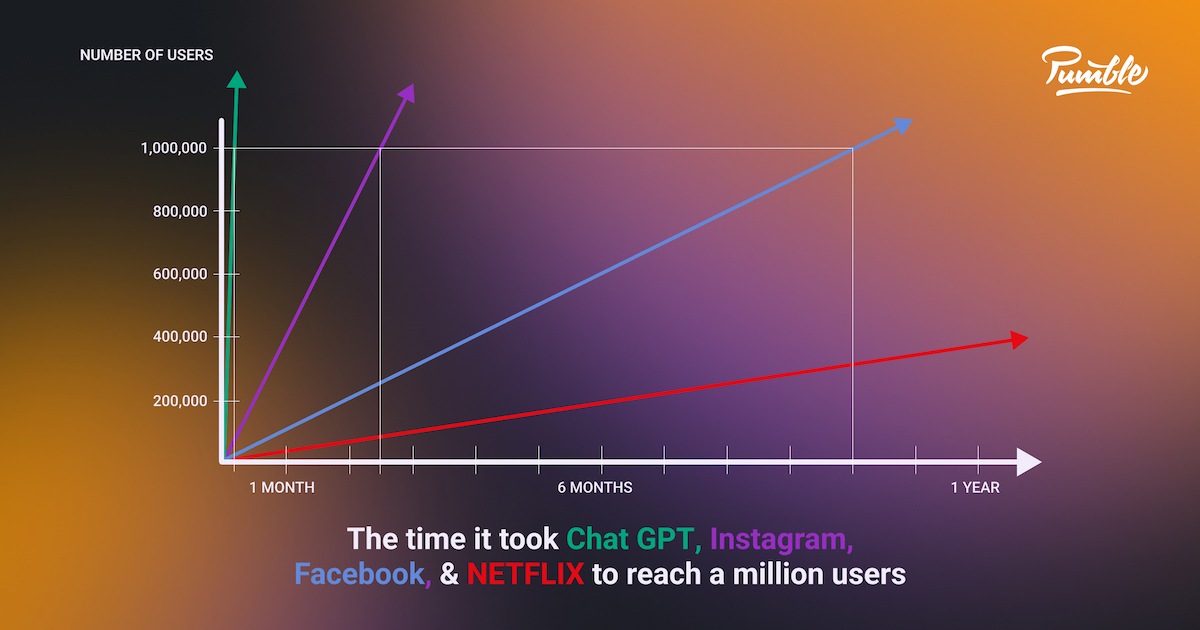
Tip #8: Ask questions
Once you start researching public speakers, you’ll find that many of them engage their audience by asking questions .
It goes back to the concept of “hooking” your audience. According to Joseph Liu:
“The best way to start a presentation is with a hook. For example, ask a question. Invite people to do something. Have your audience imagine a situation. Or, surprise them with an interesting fact.”
Indeed, most of the experts we have spoken to would confirm that questions are the best tool for increasing audience participation . As Nadia Bilchik would say:
“ I like to ask my audience a question. […] the key is to invite participation from the start. ”
With that in mind, there are 2 types of questions you can use, depending on the situation:
- Direct questions require answers from the audience. Speakers might ask for a show of hands or use a polling tool that allows people to stay anonymous while also showing the results for everyone to see.
- Rhetorical questions are about asking the audience to envision a scenario that allows you to introduce the topic of the presentation. These sometimes have a “What if” construction.
Either way, the questions should prompt the audience to start thinking about the subject of your lecture.
Questions you might use to open a presentation
Our resident phishing expert might ask his audience one of the following questions:
“How do you protect your company from phishing attacks?”
“Let’s see a show of hands — how many of you know what phishing is?”
“Has anyone here fallen prey to a phishing attack?”
Joan Miller, the digital marketer we have envisioned, might ask:
“Who here is already using AI to conduct their business?”
“Will your company survive the AI revolution?”
“Would you rather incorporate AI into your marketing strategy or continue doing business as usual? Think carefully about this question — and use the link I’m about to send you to tell me your answers. By the end of my presentation, I’ll run this question by you again, and we’ll see how the results of the poll have changed.”
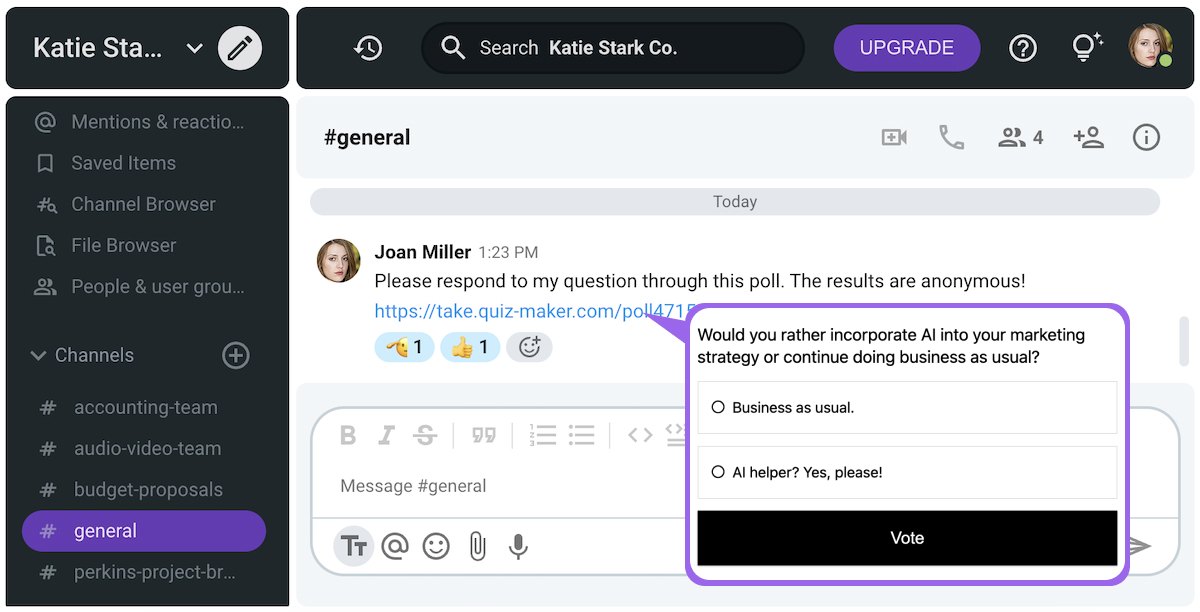
Lastly, our imaginary CEO might ask his audience:
“Does your company’s employee retention rate matter?”
“How are you making your company a desirable place to work?”
”Can anyone here tell me their company’s employee retention rate?”
Tip #9: Relieve tension with a humorous statement
If you sense that your audience isn’t in the mood to take in the kind of presentation you have prepared, you can prime them for it with humor.
Cracking a joke at the top of your presentation sets the scene for a lighthearted conversation and makes you appear confident (even if you’re not). Additionally, a well-placed joke can:
- Get the audience interested ,
- Make a point about the topic of your presentation , and
- Increase your likeability .
But, humor is an art form — and not everyone has the talent and skill to execute this tip effectively. If it doesn’t come naturally, there’s no need to force it.
When in doubt, take a page out of the comedian’s playbook and run your opening joke by a friend or, better yet, a more neutral acquaintance.
Of course, even if your joke works on them, you can’t always account for cultural or even professional differences that might prevent some people in the audience from getting it.
Jokes for opening a presentation
The 3 speakers we have imagined might use the following jokes to kick off their presentations:
“Can anyone tell me a hacker’s favorite season? Phishing season, of course! Unfortunately, in real life, phishing season is more of a year-round kind of thing.”
“Why are people so nice to AI? Because it’s self-conscious! Just kidding. For now… Actually, I have good news and bad news. The bad news is that AI does seem to be gaining traction, particularly in the marketing industry. But, the good news is that I’m here to tell you how to navigate that situation.”
“Did you know that staff retention is more likely to be improved by offering better working conditions than by chaining employees to their desks? Much to think about!”

Most of these examples would pair wonderfully with a visual element — which brings us to our final tip!
Tip #10: Use visual tools
Different speakers have different approaches when it comes to the visual aspects of their presentations.
Some rely on their speech to get most of the information across. Yet, others prefer to make their presentation slides a more integral part of their presentation.
We imagine Joseph Liu would sort himself into the latter group:
“I tend to keep my presentations as visual as possible, relying less on quotes and more on imagery.”
If you decide to let visuals do some of the heavy lifting for your presentation, there are several ways to incorporate them. Namely, you could:
- Use images in your presentation slides,
- Invite the audience to watch a video before the presentation,
- Hand out printed materials ,
- Show data charts , and
- Bring out a physical prop .
The type of visuals you end up using will depend on the type of presentation you’re giving.
Either way, you’ll want to become familiar with different elements of visual communication (such as colors, shapes, fonts, and layouts) if you want to make your presentation truly memorable.
Visual communication is one of 4 types of communication. If you’re curious about what the other 3 types of communication are and how we use them in our everyday lives, check out the following article:
- Types of communication
Examples of visual tools opening a presentation
Going back to our 3 speakers, let’s see how they might incorporate visual elements into their presentation introductions.
“According to APWG, these are the most targeted industries for phishing scams in the third quarter of 2022.”
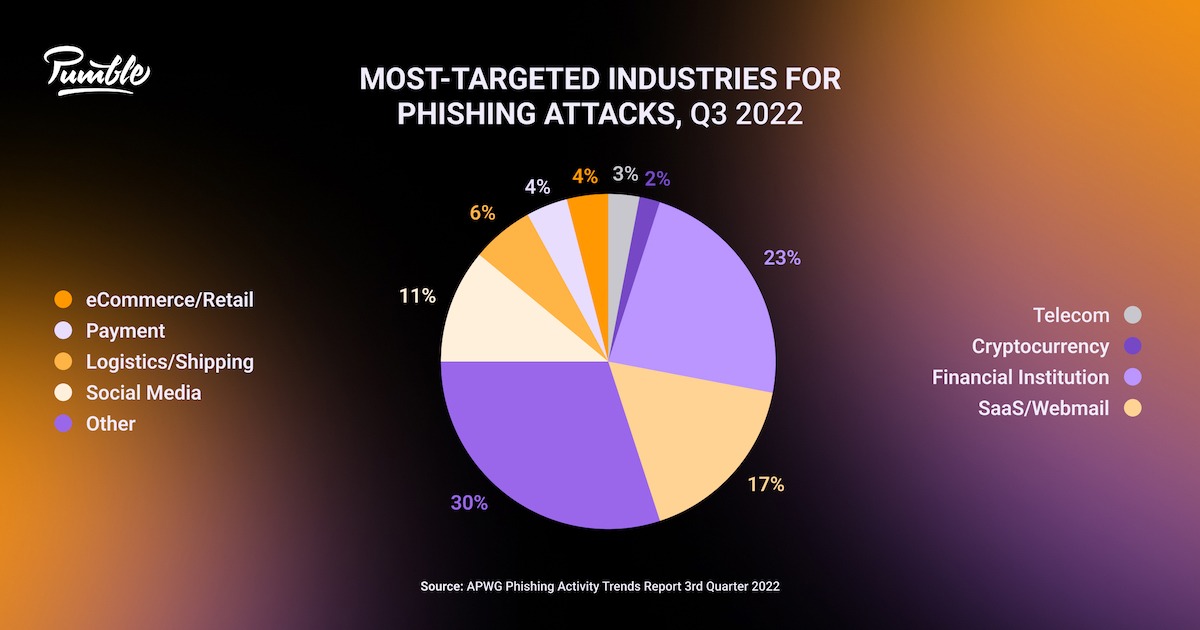
“The following demonstration of AI’s capabilities might change some of your outlooks on the future of marketing. I have shared my computer screen with you all, so let’s take a moment to see where this tech is at right now through a demonstration of the existing software.”
“Before I start my presentation, let’s look at a video showcasing the importance of having a high employee retention rate.”
You could also combine this tip with the others on our list , by saying something like:
- “Can anyone tell me what’s wrong with this picture?” thus, combining a visual opener with a question, or
- “What do you think the number on the screen behind me signifies? If you guessed ‘the number of phishing attacks recorded in the third quarter of 2022’ — you must be psychic!” as a spin on an example we used to illustrate tip #5.
Putting the tips into practice
Having concluded our list of tips, we wanted to see how the experts we have spoken to have put them into practice.
So, let’s start with the way they conceptualize and write their presentation starting lines.
Step #1: Draft your speech
Every memorable presentation starts with a written copy of everything you want to say.
According to Tatiana Tsoir:
“Developing a speech is a craft. I generally work first on who the audience is , then my core message I want them to walk away with, then the outline of the speech : how and when I introduce the main idea, and how I make a case for it and reiterate it throughout.”
Ultimately, the best time to write your presentation introduction would be once you have a clear idea of everything you want to say in the body and conclusion of your speech.
Even so, sticking to this advice won’t make you a better speaker immediately.
Instead, our experts have stressed that the only way to get better at presenting is through practice and repetition .
Take it from Tatiana:
“With public impactful speaking you don’t rise to the occasion, you fall back on training and practice.”
Step #2: Get right to the point
As you are drafting your presentation introduction, keep in mind that the audience is already waiting for you to get to the point.
When in doubt, follow Reesa Woolf’s formula for starting a presentation:
“Open with the attention-catching statement/story/quotation. Once they look at you, say your name and the parts of your experience and credentials that THEY would be most impressed by, at most 3 things about you.”
After delivering your opener and introducing yourself, you’ll want to quickly transition into the main part of your presentation.
Step #3: Invite audience participation
As we have previously mentioned, many of the experts we have contacted stressed the importance of increasing audience engagement.
Knowing your audience is a big part of that equation, as Dr. Lee M. Pierce would testify:
“Presentations should take advantage of what makes them unique — having an audience. Engage them, [and] introduce yourself. Just don’t start with a question right away — that’s asking too much too soon.”
Then again, many of the experts we have spoken to have said that asking questions is a good way to invite audience participation.
For example, Nadia Bilchik would even engage her audiences on a more physical level:
“I like to ask my audience a thought-provoking question. This gets them from passive to active mode. I also always get my audience to stand up and do a breathing exercise.”
Nadia also provided us with an example of an audience interaction she might use in the introduction of her speaking engagements. For example, she might ask the audience:
“ How do you rate your ability to present information in a concise, clear, and confident manner? High, medium, or low?”
After receiving her answers by a show of hands or even an online poll, she connects the response to the topic of her presentation by stating:
“Wherever you are on the spectrum, in the next X minutes, I will share tips and techniques to ensure you have a greater impact every time you communicate to an audience of one or 100!”
That’s a textbook opener you can use to introduce the topics of your own presentation, too!
Step #4: Put it all together
Remember, nothing is stopping you from combining the tips we have mentioned throughout this guide to create a presentation introduction that is wholly unique to you.
If you’re unsure how to do that, let’s analyze a professional speaker’s technique.
Mark Beal told us about a presentation opening he’s created for his lectures:
“I start each of my Gen Z keynote presentations by physically walking off the stage and into the audience and asking a series of Gen Z trivia questions.
For those who answer the questions directly, I reward them with a copy of my latest Gen Z book. By taking this proactive approach, I physically engage the audience immediately not from the podium but in their seats.
My presentation instantly transforms from a one-way monologue into a two-way conversation and the audience begins to learn about my topic, Gen Z, in a fun and informative way.”
Can you connect the strategies Mark has used with the tips we have discussed? Let’s list them:
- Walking off the stage adds an element of drama and establishes a commanding presence,
- Asking questions engages the audience right off the bat,
- Rewarding the audience with a book promotes engagement throughout the presentation, and
- The books themselves are both an interesting prop and proof of Beal’s qualifications.
When you start researching famous speakers to prepare for your presentation, try dissecting the strategies they’re using.
Start your presentations right — With Pumble!
As you have seen above, it is crucial to conceptualize and think of your presentation’s starting lines.
To check if everything is fine, you can reach out to your colleagues via direct messages or dedicated channels and ask them for their opinions.
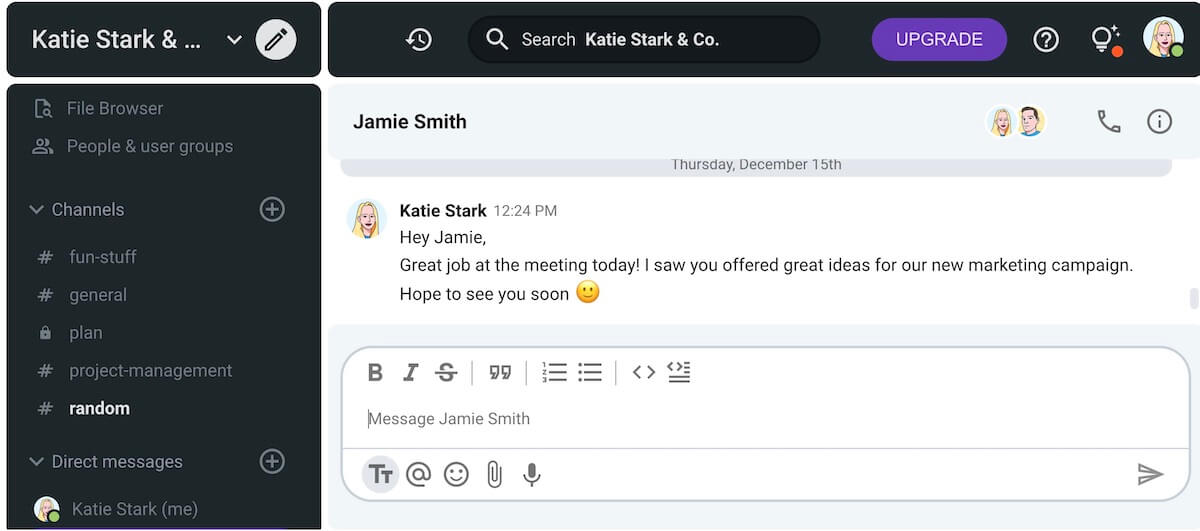
Your colleagues might provide some useful tips that will help you further improve your presentation in threads , just below your message or post.
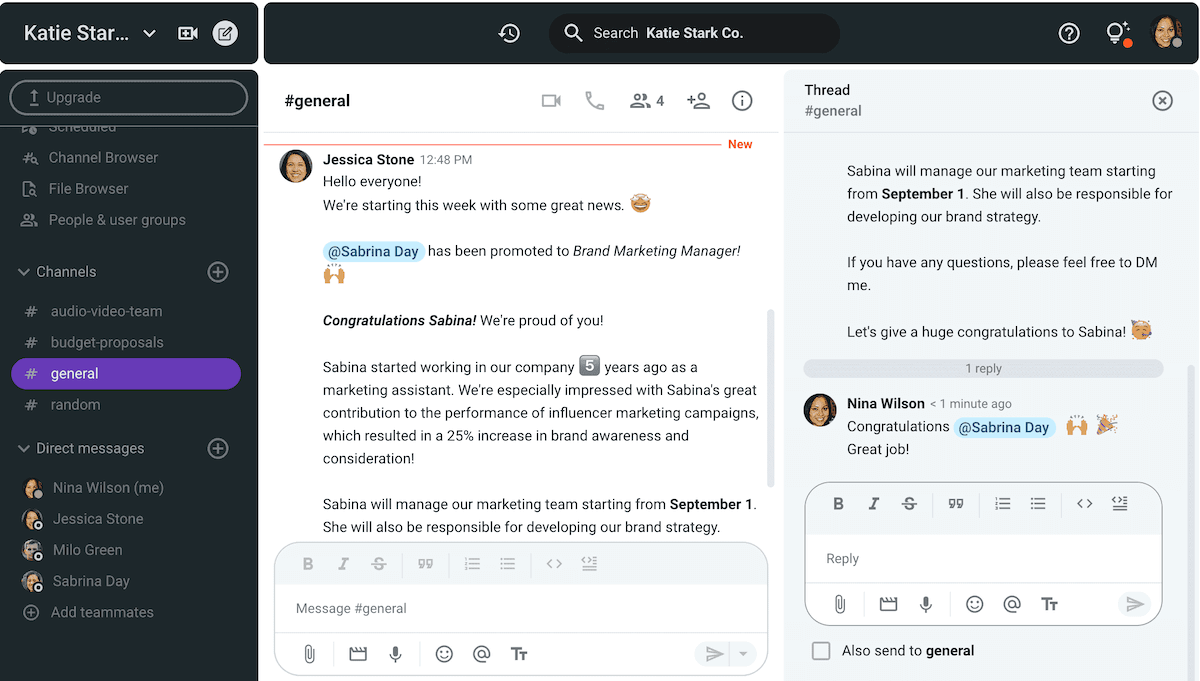
As Dr Lee M. Pearce pinpoints, having the right audience for the presentation is important. Hence, we recommend scheduling a video call so your closest colleagues and invited guests can see your new presentation and its opening lines, and provide suggestions, if necessary.
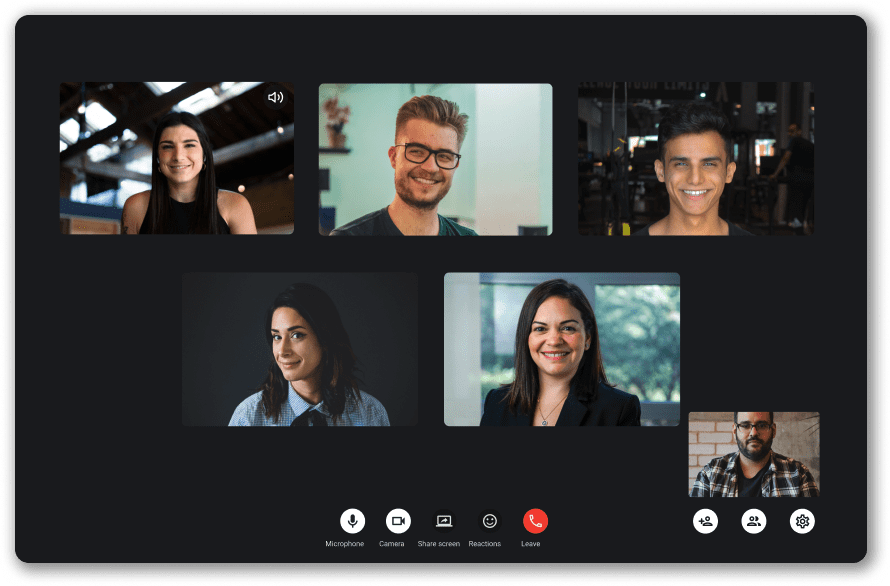
Of course, Pumble also comes in handy when it comes to holding presentations — thanks to its screen sharing feature that allows you to present to the entire meeting.
Finally, Pumble has an unlimited message history , so every message or file you have sent will forever stay in your message history. That might come in handy if you ever have to work on a similar presentation in the future.
Secure, real-time communication for professionals.

Olga Milicevic is a communication researcher and author dedicated to making your professional life a bit easier. She believes that everyone should have the tools necessary to respond to their coworkers’ requests and communicate their own professional needs clearly and kindly.
What's on your to-do?
START COLLABORATING
with Pumble

Related posts
5 factors to consider when choosing the right communication tool for your school.
Here’s what to consider when evaluating school communication tools. …
How to Maintain Transparent Communication When Working Flexibly
Discover how to enhance team communication transparency, openness, and efficiency while working flexibly….
Boost Teamwork With Aligned Goals & Clear Communication
Learn how to drive teamwork and results with streamlined communication and the power of shared goals. …
Stop Waiting for Emails: Discover the Power of Instant Communication
Discover how emails slow down your business communication and what you can do about it. …
Transform How Your Team Collaborates and Connects: Turn Your Video On
Learn how to use video conferencing to improve how your team connects and works together. …
3 Tips on How to Share Information Within Your Team
Revamp your team’s information sharing with 3 simple tips for enhanced productivity. Say goodbye to chaos and hello to efficient collaboration! …

Need better team communication??
Pumble is an all-in-one team collaboration app. Send messages and files, and start video conferencing with one click, and reduce emails. Free forever.
Free team chat app
Improve collaboration and cut down on emails by moving your team communication to Pumble.

Unlimited users • Unlimited chat history • Free forever
7 Real Examples of How to Open a Presentation With Impact
Feb 24, 2019 by maurice decastro in communication skills , presentation skills , presentation tips.

Do you know how to open a presentation with impact?
The most common advice you will hear about opening a presentation is to grab the audience’s attention right from the start.
Whilst that’s true, its not enough. At Mindful Presenter we often argue that you already have your audience’s attention, after all, they turned up to listen to you.
Every presenters first challenge is to not only capture their audience’s attention but their interest and curiosity too.
We have to work a little harder to open a presentation with impact
As you open a presentation, keep in mind that it’s highly likely that your audience will already have some idea of:
– Who you are
– What you do
– Why you are there
You’re unlikley to get their attention, interest and curiosity if the first thing you tell them is your name, position and company history.
Your audience can tell within the first 60 seconds whether or not they will need to discreetly pull their phones out of their pockets to check for emails. Today’s discerning audience are information rich and time poor.
They don’t pay attention to boring things
When we open a presentation, our first task is to make our audience to feel that they are really glad they turned up.
Here are 7 ways to open a presentation with impact.
I have used each of these to good effect to open a presentation skills workshop. You may be able to take something from these and adapt an idea for your next appearance.
1- A lesson learned – we all have them to share
‘My wife and I were invited to sit with our son at a special assembly on his very first day at school. After the Head teacher spoke for 5 minutes our son looked up at me with his hand on his forehead and whispered, “ Daddy this story is giving me a headache, what time does it finish?”
He was only 5 years old of course but that day we both learned a very important lesson. Regardless of age, it’s very easy for a speaker to disengage with an audience very quickly and even give them a headache.
Mindful presenters know how to capture and hold an audience’s attention, interest and curiosity right from the start.
2 – A powerful quote – can inspire, illuminate and define your message
“In times of change, learners inherit the earth, while the learned find themselves beautifully equipped to deal with a world that no longer exists.” Eric Hoffer
‘We live in a time of change right now and it’s the great speakers who are leading that change.’
Here’s another favourite:
“There are two types of speakers: Those who get nervous and those who are liars.” Mark Twain
‘I think Mark Twain made an interesting point. The challenge for each of us is how we manage and use those nerves’
3 – A thought interrupt – the human mind likes to wander
‘Research suggests that as human beings we each have between 50-80 thousand thoughts every day. Many of these are recycled, repetitive thoughts and that a great deal of them are negative.
As speakers, that presents a significant challenge for both us and our audience. The mindful presenter acknowledges and respects that general human conditioning.
You sat down this morning with a plethora of thoughts already in your mind. Some of you may think you’ve heard this all before and its possible that some of you don’t even want to be here.’
4 – A question to ponder – Its hard not to listen when you’re asked a question
‘Cast your mind back to the last business presentation you attended.
– What do you remember?
– How did you feel when you returned to your desk or car?’
‘The world has changed considerably in the last two decades. Technology, education, transport, medicine,politics; everything has changed.
What if anything has changed in the way we present to each other in business?’
5 – Challenge the status quo – your audience are longing for something different
‘When it comes to good advice for giving a presentation, I’m willing to bet that at some point in the past some of you were told to, ‘just be yourself’.
It’s a nice thought but it’s not enough.
What they should have said was, ‘be your best self’. There really is a difference, let me explain…’
‘At Mindful Presenter we believe that after a typical business presentation most people in the audience will forget most of what they heard by the time they return to their desk or their car. At best they will feel indifferent; it has to stop.
It’s time to stop presenting and to start connecting.
Let me show you how.’
6 – Share an experience – they really are the best way to learn
‘I first went to Disney World in Florida at the age of 20. That was 35 years ago. As my brother and I were queuing to ride Space Mountain, we noticed a family just in front of us where the father was carrying what looked like a small suitcase onto the ride. We’d been on the ride before so we both knew there was no way that he and that case would fit into the tiny seat. We couldn’t help but wonder why on earth he was carrying it with him.
As we looked much closer, we realised it wasn’t a suitcase at all; it was a mobile phone.
Now keep in mind that was 35 years ago, and there was nothing mobile or portable about those phones at all. This is my phone today, not only is it a fraction of the size but it holds my entire music collection and can help me to find my way around anywhere in the world.
The world has changed a great deal in the last 30 years. In your experience, what has really changed when it comes to presenting and public speaking?’
7 – Surprise them – get them thinking about something they don’t think about
‘There are over 70 million private businesses registered across the world. Imagine this; every single day, it is likely that there is at least one presentation being made in each business.
That mean’s that every day there are 70 million presentations being made all over the world.
The reality is, there are far more than 70 million businesses operating worldwide and you can be certain that there are a great many of presentations taking place in each of them.
The ability to speak with confidence, clarity and impact has to be one of the most important skills in the world today.’
‘Research suggests that the human mind is conditioned to wander 47% of the time. How often does your mind wander during the course of an average day?’
I’m mindful of the fact that my content in these openings may not appeal to you your audience. If that’s the case then please at lest consider the concept of opening a presentation with greater impact in your own way. As the old saying goes, ‘You only have one chance to make a first impression.’
When you open a presentation, consider the idea of:
– Sharing a lesson learned that is relevant and valuable to your audience
– A powerful or helpful quotation
– A thought interrupt – something which changes your audiences mental or emotional state
– Thought-provoking questions
– Challenging the status quo a litte
– Sharing an experience or story that is if relavance and value to your audience
– Surprising them
If you have experience of opening a presentation with impact that would be helpful to our readers, please do share it in comments.
If you would like to learn more about how to open a presentation with impact:
– Book yourself onto a powerful public speaking course .
– Invest in some really good one to one public speaking coaching .
– Get yourself some excellent presentation training
Image: Courtesy of istockphoto.com
- Connect Now
Share this article
- Share on Facebook
- Share on Twitter
- Share on LinkedIn
To join one of our workshops or lean more, complete our enquiry form or call us on +44 (0)20 7666 3453 and we can get connected.
- Our Approach
- The Benefits
- Public Speaking Courses
- Presentation Training
- The Complete Mindful Presenter
- One-to-One Public Speaking Coaching
- Coaching Development Package
- What Our Clients Say
- The Truth Series
- Our Podcast
- Style Review
- Mindful Selling 4D
- Mindful Leadership
Blog Sign Up
Recent posts.
- Public speaking masterclass
- 10 Reasons to Join Our Next Public Speaking Masterclass
- 4 types of presentation energy: Survival, Safety, Shallow & Smart
- 12 Public Speaking & Presentation Tips For Q&A Success
- 10 Novel public speaking ideas from unexpected sources
- Bullet Point
- Communication Skills
- Mindful Selling
- Mindfulness
- Presentating training
- Presentation Skills
- Presentation Tips
- Public Speaking
- Sales Skills
- Storytelling
- virtual presentation
- Virtual Presentations
- Who are you?
- Learning Centre
- Presentation Skills Review
- Our Clients
- Testimonials
- Presentation Skills Training
- Public Speaking Coaching London
- Public Speaking Anxiety Course
- Phone: +44 (0)20 7666 3453
- Email: [email protected]
- Address: Mindful Presenter Ltd 86-90 Paul Street, London, EC2A 4NE
Sign up for our newsletter and download your free guide to authentic public speaking.

Improve your practice.
Enhance your soft skills with a range of award-winning courses.
How to Start a Presentation and Engage your Audience
June 27, 2018 - Dom Barnard
Why should you focus on the start of your speech? Because many studies show that if you can capture someone’s interest straight away, there’s a good chance they’ll listen to the rest of the presentation. If you don’t, the majority of listeners will focus on something else.
This article discusses different ways to start a presentation and keep your audience engaged, as well as example videos you can watch which illustrate these points.
Beginning your presentation
Depending on the event, a facilitator may introduce you to the audience or you may have to introduce yourself.
People came to the event knowing that there would be speaker or they may have even known that you specifically would be speaking. This should fill you with some confidence as the audience will want to listen to you.
Wait until the majority of the audience are paying attention before you introduce yourself and launch into your speech.
Watch examples of both a strong and weak introduction
When watching this video, compare how the speakers:
- Engage with the audience
- Use eye contact
- Use body language
- Use hesitation words
- Move on stage
Ensure that you welcome the audience and introduce yourself by stating your name, your job title and where you work. Follow this with a brief biography, including what experience you have – this will help draw attention to your ethos (credibility) because it’s the best way to demonstrate your credentials to that particular audience on that particular day.
Afterwards:
- Introduce your presentation title/the question you’re exploring.
- Your aims for the audience/what you hope they’ll get out of it.
- Make it clear to the audience when they should ask questions – some speakers set aside specific sections for Q&A and others prefer the audience to ask questions when they come to mind. By clarifying this during your introduction you will avoid potential disruptions.
Presentation opening ideas
It’s vital to engage the audience from the start. Here are techniques for beginning a presentation:
1. Shock the audience
There are many ways to shock your audience, for example, you can show a funny video, use a prop, start by talking to audience members, ridicule something etc.
But ensure that your shock will have the desired effect – you want the audience to remain engaged because they liked the surprise or they found it interesting and not because you’ve upset them so they’re looking for faults in your argument. Again, the shock must be suitable for your presentation’s purpose and your audience.

Jamie Oliver opens his TED Talk with a starting statistic: “Sadly, in the next 18 minutes when I do our chat, four Americans that are alive will be dead through the food that they eat.”
2. Ask the audience to “imagine” or think “what if”?
Asking your audience to imagine something or think ‘what if’ gets them to visualise and use their imagination. You can use this technique to evoke certain emotions which are usually the feelings you experience over the same thing.
Emotions are a great way of ensuring that people will continue listening as they are now involved in what you’re saying.
3. Start your presentation in the future or the past
Symbouleutikon/deliberative rhetoric is when the speaker tries to get the audience to take action by talking about a possible future. Politicians often use this technique and a well-known example is Martin Luther’s “I have a dream” speech.
You can also produce a similar reaction from the audience by talking about the past – using lessons from things that were done well, or things that didn’t work. For example, you might remind the audience of when the country was economically thriving or when mistakes were made which led to the country experiencing economic turmoil.
4. Quote someone or a proverb
If you’re struggling to create a strong opening sentence consider quoting someone. However, you must be careful as you can risk sounding cliché and the quote must be meaningful and relevant to the audience and the purpose of your presentation.
If you’re using slides show a photo instead of text when you’re quoting. This will help the audience:
- Understand the quote
- Remember the quote
- Engage their imagination for a greater impact
5. Tell a story or joke, or reference a historical event
You could start with a story to highlight why your topic is significant. For example, if the topic is on the benefits of pets on physical and psychological health, you could present a story or a study about an individual whose quality of life significantly improved after being given a dog. The audience is more likely to respond better to and remember this story than a list of facts.
Well-known historical events are good reference points, both to illustrate a point, and to get the audience using their imagination.
More experienced and confident public speakers may start a presentation with a joke. The audience will be incredibly engaged if you make them laugh but caution must be exercised when using humour because a joke can be misinterpreted and even offend the audience. Only use jokes if you’re confident with this technique and it has been successful in the past.
6. Share personal stories
As aforementioned, the audience enjoy hearing stories and they’re even more interested when the story is directly about you, the speaker, because they get to see the human side of you.
Consider telling a story about a mistake you made or when life wasn’t going that well – if relevant to your presentation’s aim. People will relate to this as we all have experienced mistakes and failures. The more the audience relates to you, the more likely they will remain engaged.
These stories can also be told in a humorous way if it makes you feel more comfortable and because you’re disclosing a personal story there is less chance of misinterpretation compared to telling a joke.
Watch this great presentation from Conor Neill on how to start a speech and engage your audience. Permission given to reuse this work – read more about Conor Neill and his services on his website: conorneill.com
7. Point to their problem or opportunity
Putting your finger on your audience’s pain point is another way of gaining their attention because you’re triggering an emotional reaction again. For example, you might ask “Have you found it difficult to stick to a healthy diet?” The audience will now want to remain engaged because they want to know the solution and the opportunities that you’re offering.
8. Start with a video
A pre-prepared video can provide a strong presentation opening and get people to pay attention before you start speaking. Some speakers show a video as the audience are arriving and getting settled – they may begin by reflecting on the video.
- You can use the Canva online editor to create your video
9. Ask the audience questions
You can conduct polls using your audience or ask questions to make your audience think and feel invested in your presentation. There are three different types of questions:
Direct questions require an answer: “What would you do in this situation?” These are mentally stimulating for the audience. You can pass a microphone around and let the audience come to your desired solution.
Rhetorical questions do not require answers, they are often used to emphasises an idea or point: “Is the Pope catholic?
Loaded questions contain an unjustified assumption made to prompt the audience into providing a particular answer which you can then correct to support your point: You may ask “Why does your wonderful company have such a low incidence of mental health problems?” The audience will generally answer that they’re happy. After receiving the answers you could then say “Actually it’s because people are still unwilling and too embarrassed to seek help for mental health issues at work etc.”
10. Statistics
You could begin by sharing a surprising statistic which you can personalise to the audience for a larger impact, for example, you could say “In this room, over 70% of us are going to…” or “Look to the person on your left…”
You can also combine a statistic with a leading question, for example “What percentage of the population do you think…?” The audience should be shocked when you provide them with the actual answer.
Make sure you don’t go overboard with statistics or use complicated data especially in the introduction as you may lose the audience.
These techniques don’t only apply for introductions – they can also be used throughout your presentation to engage and persuade your audience. Try different techniques to find out what works best for you and practice as much as possible. With a powerful opening prepared you’ll feel far less nervous during the rest of your presentation.
10 presentation opening ideas to capture audience attention
Capturing your audience’s attention right at the beginning is vitally important any successful presentation. According to new research , a powerful opening helps listeners stay engaged with the presentation throughout.
However, delivery and slide management is as important as the content you wish to share. In this post, we will be looking at some interesting, proven ways to engage your audience right from the get-go.
The what, how, and why
Many presenters often focus on the “what” and straight away jump to the “how” of their topic. However, it is important to focus on the “why” as well. Emphasize why there is a need to address the topic you are about to discuss.
Imagine you are giving a presentation on “The Benefits of Remote Work” and how to incorporate it using technology. Instead of just focusing on how you will go about working remotely, add some slides explaining why there is a need for remote work. This can add more context to your topic and help listeners understand the solution you offer more clearly.
Stimulate original thoughts
You can start your talk by asking your audience to imagine a scenario related to the core idea of your presentation. Viewing the topic from their perspective can help the audience relate a lot better to your narrative.
For instance, you can ask the audience to imagine eating their favorite continental food. This can be followed up with introducing a new app to deliver different international cuisine items at affordable prices. The imagination helps your listeners visualize the benefit they could enjoy by using the app.
Use a captivating visual

Using an engaging visual at the start can be a compelling way to start your slides. This can be a video, an intuitive chart, or even an infographic. It takes less time and cognitive effort for an average viewer to comprehend something visual than just plain text.
For instance, if you are going to present about climate change and its effects, a video about the impact it has on wildlife would strike a chord better than information given through text.
Intriguing start

Building intrigue at the start can be a powerful way to incorporate your ideas and get your participants thinking. With this approach, you can place a single word, number, or a statistic in the first slide of your presentation. This helps build curiosity among participants and stimulate a discussion too.
Using a powerful quote

While words might not always have the impact visual content does, there are some tried and tested lines that will probably work. For instance, adding a great quote relevant to the presentation topic can add credibility and context to the message you are trying to deliver.
For instance, the slide shown above can be used as an opening slide for an ad agency’s pitch. It is punchy, direct, and relates to the company being presented to.
Be a storyteller
Human beings, in general, are wired to pay attention to stories. Use a story that is related to your presentation and why you’re presenting that topic. If applicable, you can tell short, memorable anecdotes from your life experiences to capture the attention of the audience.
Ask a thought-provoking question
Questions can get the speaker and audience better acquainted with each other before the presentation. They are one of the most interactive ways to start a presentation.
Rhetorical questions are usually used to draw the attention of the audience and get them to form an opinion. Just be sure that the question sets them on course to agreeing with the core message of your presentation.
Involve your audience
You can get your audience involved by posing a question and asking for a show of hands. For instance, you can ask a question like “how many of you had breakfast this morning?” You can then bring up a statistical insight that “1 in 5 working professionals skip breakfast and start the day with an unhealthy habit. Our team is striving towards finding ways to bring this number down. This would be welcome news for those that did not put your hand up.”
Start with a bold headline

Use a surprising statistic or a shocking claim to capture the attention of your audience. This is similar to starting with a question—just ensure it directly relates to the topic discussed in the presentation and supports the message you will be delivering.
If you are planning to include statistics, make sure to include the source of the information. Citing a reputable source of information will help increase the credibility of your presentation. In this example above, the statistic about increasing electronic waste will make the audience take note and act on the message you are about to deliver about recycling e-waste.
Kick off with a joke
Humor is always an effective way to break the ice with your participants. A joke can be used to introduce the topic of your presentation. Adding humor generates positive feelings among your audience and helps hold their attention for the duration of your presentation.
Some great presenters, like Steve Jobs, did not start their presentations with a generic introduction slide or a list of numbers. These presenters do a lot more and get the attention of the audience using innovative methods, like some of them listed above. Try these different techniques to find out the one that works best for you and incorporate it in your next presentation.
Product Marketer
Leave a Reply Cancel reply
Your email address will not be published. Required fields are marked *
Related Posts

IMAGES
VIDEO
COMMENTS
It effectively kills and buries even the best messages. Table of Contents. The Classic Trick: Open a Presentation with an Introduction. Open a Presentation with a Hook. Begin with a Captivating Visual. Ask a "What if…". Question. Use the Word "Imagine". Leverage The Curiosity Gap.
4. Keep it short and sweet. While it's important not to rush through the start of your presentation, keeping your opening concise is equally important. But remember, concise does not mean sacrificing substance; it simply means delivering information efficiently.
Idea 4: Video. This could work just as marvellous as sharing an image and opening a short discussion on its interpretations. You could even start with a video and use it as a segue into your presentation. For example this video could be used as a great example for a marketing strategy by the brand and could be a great way to get the audience ...
11. "Let's embark on a journey through our discussion on…". 12. "I'm delighted to have the chance to share my insights on…". 13. "Thank you for the opportunity to present to such an esteemed audience on…". 14. "Let's set the stage for an engaging discussion about…". 15.
15. Add some Glitz. Quote a movie or a song in your first presentation slide to build rapport with your audience. As long as it's something that most of the audience will know, you'll have them listening intently right from the get go! This is especially important to consider when presenting to millenials. 14.
Use humor or wit. Sprinkle some humor and wit to spice things up. Cracking a clever joke or throwing in a witty remark can break the ice and create a positively charged atmosphere. If you're cracking your head on how to start a group presentation, humor is a great way to start a presentation speech.
There are many ways to start a presentation: make a provocative statement, incite curiosity; shock the audience; tell a story, be authentic; quote a famous or influential person. Here are other presentation opening strategies: Begin with a captivating visual; ask a question; use silence; start with a prop; tell a relevant joke; use the word ...
Visionary Opening. Begin with a powerful vision statement that encapsulates the essence and ambition of your business. This could be a glimpse into the future that your company is striving to create. For example, "At the heart of our company lies a vision to revolutionize sustainable energy for generations to come."
It helps you to feed your audience with a large amount of information in a shorter period. Step 5: Practice the Presentation with Spiels in Every Portion. Practice helps you to attain presentation skills. You can interact with your audience, disseminate the messages clearly, and analyze your listeners' mindset.
Using slides and visual aids can enhance your presentation, as 65% of individuals learn best visually. To make a strong first impression, create a visually appealing slide that provides a clear overview of your topic. Avoid clutter and excessive text, opting for graphics and key points that engage your audience.
4. The Value Proposition. Another good way to start your presentation is to jump straight to addressing the audience's selfish motives. They only care about their own needs and priorities, and the whole reason that they showed up to listen to you is because they want to derive value from your presentation.
How to start a presentation. 9. Poll your audience - Different Way to Present a Presentation. This is another easy way to boost the excitement levels and creativity of everyone in the room! As the host, split the audience into pairs or trios, give them a topic and then ask teams to make a list of possible responses.
Make eye contact with your audience members and make sure they are still engaged with the information you're presenting. Carefully-chosen transitions are powerful ways to not only introduce the next segment, but also pull in an audience's attention all over again. 4. Tell a personal story. Telling a brief, personal story early in a ...
Here is the list of effective presentation openers. 7 Dynamic Ways to Start Your Next Presentation. Give Your Presentation Summary and Conclusion First. Start the Presentation with a Compelling Story. Use a Startling Statistic to Start a Presentation. A Funny or Motivational Quote or One-Liner. Start with an Opinion Asking Question.
This is why, in this article, we will help you achieve this and more with 10 practical tips on how to start and end a presentation effectively. Article overview: The Opening: 5 Tips To Get Your Audience Invested. 1. The Hook. 2. Transition. 3. Personal Story.
Apply the 10-20-30 rule. Apply the 10-20-30 presentation rule and keep it short, sweet and impactful! Stick to ten slides, deliver your presentation within 20 minutes and use a 30-point font to ensure clarity and focus. Less is more, and your audience will thank you for it! 9. Implement the 5-5-5 rule. Simplicity is key.
Go instead for a strong opening that gets them sitting up and taking notice immediately. 1. Make a bold claim. A bold statement at the beginning of your presentation is guaranteed to get you attention. The more dramatic or provocative it is the more alert they will be and ready to listen to what you say next. 2.
If you want to make an excellent first impression, consider the following: Start the presentation with a hook. Starting a presentation with a statement, question, or fact will pique your audience's interest and make them want to hear more. Think about what you want to accomplish. Explain to the audience why you are giving this talk, what you ...
Tip #8: Ask questions. Once you start researching public speakers, you'll find that many of them engage their audience by asking questions. It goes back to the concept of "hooking" your audience. According to Joseph Liu: "The best way to start a presentation is with a hook.
Mark Twain. 'I think Mark Twain made an interesting point. The challenge for each of us is how we manage and use those nerves'. 3 - A thought interrupt - the human mind likes to wander. 'Research suggests that as human beings we each have between 50-80 thousand thoughts every day.
Here are techniques for beginning a presentation: 1. Shock the audience. There are many ways to shock your audience, for example, you can show a funny video, use a prop, start by talking to audience members, ridicule something etc. But ensure that your shock will have the desired effect - you want the audience to remain engaged because they ...
1. Tell your audience who you are. Start your presentation by introducing yourself. Along with sharing your name, give your audience some information about your background. Choose details that are relevant to your presentation and help establish you as an expert in your chosen topic. Example: "Good morning.
Intriguing start. Building intrigue at the start can be a powerful way to incorporate your ideas and get your participants thinking. With this approach, you can place a single word, number, or a statistic in the first slide of your presentation. This helps build curiosity among participants and stimulate a discussion too. Using a powerful quote